
Home » Travel Guides » 15 Best Places to Visit in Estonia

15 Best Places to Visit in Estonia
The last truly European nation before the great swathe of Russia takes over in the east, Estonia offers travelers a fascinating mixture of Slavic, Russian, Scandinavian and altogether unique local cultures. It ranges from the beautiful, windswept coastlines of the Baltic Sea and the Finnish Gulf to the rolling forests around Tartu in the south, and offers up some amazing and wondrous destinations along the way.
Lets explore the best places to visit in Estonia :

The mighty rises of Toompea Hill are what define Estonia’s magnificent capital ; soaring in a curious medley of Orthodox onion domes and medieval bulwarks right in the heart of the town. Below this sprawls one chocolate box of a walled city, where stony streets and shadowy alleyways open up onto an enthralling market square and curiously-named keeps like ‘Fat Margaret’ soar above the crenulated fortifications.
Given the UNESCO tag, the glorious array of historical monuments and the buzzing collection of shops, beer halls and Estonian eateries, it’s hardly surprising that this one’s on the up as one of Europe’s most coveted capitals. And that’s not even mentioning the bohemian streets of Kalamaja, or the palaces and parks of the Kadriorg district!

Nestled neatly on the edge of its very own little coastal inlet on the Gulf of Riga, Parnu comes complete with one of the Baltic’s best stretches of pearly-white sand. It’s backed by the all-new and indelibly lively Beach Promenade, where babbling fountains abut al fresco restaurants and the courses of a truly excellent bike track.
And in the centre of the town itself, the remnants of an Art Deco boom in the 20s add a real dash of class to the resort, spas rise unexpectedly on the street corners, Ruutli Street beats to a night time tune, and charming timber villas dot the outskirts. In short: this one’s every inch Estonia’s summertime capital!

In the warmer months of the year, Otepaa draws in modest crowds of hikers and mountain bikers to the winding trails of Valga County, for strolling through the thick fir forests and walking around the banks of Puhajarve Lake. However, it’s when the snows come that this self-proclaimed winter capital of Estonia really hits its stride.
Nordic ski tracks delve deep into the woods, the ski jumps roar with local cheers and the various downhill alpine runs offer a smattering of beginner and intermediate pistes. Aside from the outdoors action, Otepaa also boasts one gorgeous church spire and the crumbling remains of an aged citadel for the history buffs.
4. Soomaa National Park

The flooded forests and mystical bayous of the Soomaa National Park represent unquestionably one of the most beautiful and enchanting destinations in all of Estonia. All-in-all the site encompasses a whopping 359 square kilometers of undulating dunes and low-lying peat bogs, which oscillate between ochre-brown, verdant green and ice-caked white with the changing of the seasons.
Unsurprisingly, ecotourism has boomed here in recent years, and today outdoorsy travelers and intrepid types flock here to hit the water capillaries of the Raudna River and Parnu Basin on canoes and kayaks, or to hike the alluvial meadows in the company of cranes and crooked wooden farmhouses.
5. Saaremaa Island

Much-vaunted Saaremaa Island is right up there with Tallinn; an impossibly wonderful landscape of washed-out timber windmills and breezy meadows, sprawling spruce forests and gorgeous coastal stretches scented with juniper and Baltic salt.
Walkers and outdoorsy types will love getting lost in the orchid-peppered reaches of Loode, wandering between the mysterious Kaali meteorite craters, beautiful Bear Lake and the hot springs of Puhatu, or bracing the sea winds at the sacred Panga clifftops. The local Saaremaa folk add a dash of nuance to the land too, boasting their own folklore and curious traditions, deeply ironic sense of humour and high-quality vodka to boot!

Straddling the border with Russia in the deep eastern recesses of Estonia, Narva has an altogether different character than the other major urban areas in this Baltic land. For one, the locals overwhelmingly speak Russian, and the character tends to lean eastwards to Moscow rather than westwards to Tallinn and the EU. Hermann Castle is the jewel in the Narva crown, standing tall and proud in whitewashed keeps and stony bulwarks above the city, while the brutalist reconstructed centre offers an interesting taste of the indelible Soviet influence.
And then there’s the nearby resort strips of Narva-Joesuu, which come complete with the longest beach in the country and some acclaimed spas to boot.
7. Matsalu National Park

A truly beautiful patchwork of riparian wetlands, reed grass plains and blooming flood meadows on the courses of the Kasari River Delta, the Matsalu National Park is a veritable wonderland for nature lovers and wildlife seekers making their way through Estonia.
The 400-square-kilometer park’s birds are particularly famous, coming complete with endangered species like the white-tailed eagle, colossal flocks of barnacle geese, tufted ducks and the single largest migrating amount of cranes on the continent (which can be seen stopping by here in Autumn). Wild horses can also be spotted grazing amidst the wetlands, roaming between the timber fishing huts and the tracks of the Suitsu hiking trail.
8. Hiiumaa Island

A lesson in all things rural Estonia, Hiiumaa is the second largest island in the country, found rising in a medley of windswept coves and coastal fir forests from the Baltic Sea and connected by Europe’s longest ice road to the mainland by winter. Travelers heading here often make a beeline straight for the coast, which comes virtually completed secluded and peppered with historic lighthouses like the stone-clad Kopu Lighthouse – one of the oldest on the planet.
Meanwhile, in the island’s inland reaches, crooked timber farmhouses and creaking mills meet dense beech forests at the Suuremoisa Park and smoked plaice fillets issue their enticing aromas from the earthy tavernas.

Tartu may officially be Estonia’s second city, but the locals prefer to see themselves more as joint first. Fiercely independent from the much larger capital in the north, this southern stronghold of students and Russian speakers is known for its intellectual accomplishments above all else. It has the most prestigious university in Estonia, which rises in a series of neoclassical columns right in the midst of the town.
Nearby stands the leafy reaches of Toomemagi; the historic citadel of the city where now the ruined nave of Tartu Cathedral exudes a haunting historicity. Tartu also pulses with youthful energy thanks to its many lecture halls, and al fresco beer bars and underground clubs claim the summertime nights.

Traces of human habitation dating back more than three millennia have helped to make Tuhala one of Estonia’s major historic sites; a place offering a glimpse at the centuries before Tallinn’s great medieval bulwarks were even raised. Yes sir, this earthy region is home to mysterious collections of cult stones and ancient religious statues, curious cup-marked carvings and sacred sites oozing pre-Christian traditions.
There are also aged timber roads dating from the fourth century, and – of course – the legendary Witch’s Well – a unique phenomenon that occurs when the subterranean channels of the region’s karst system bubble up and overflow from a rustic well into the surrounding farmlands.
11. Kuressaare

The pretty, castle-topped town of Kuressaare makes its home on the Estonian (as opposed to the Finnish) edge of Saaremaa Island, where it hails in as the westernmost city in the country. Given the unique geography, it’s hardly surprising that this one oozes Germanic and Swedish influences, going from the Teutonic bulwarks of the mighty citadel to the elegant Baroque traces decorating the municipal buildings on Keskvaljak Square.
Kuressaare is also famed for its coastal spas, which extoll the healing virtues of the seaside mud and silt deposits and helped to make the city a favourite with naturalist and ecotourists over the years.
12. Viljandi

A boomtown of the Hanseatic League, Viljandi once boasted one of the largest merchant town fortifications in the entire Baltic region. Its raison d’être? To secure the popular trading routes between the heartlands of Prussia in the west and Russia in the east.
Today, and the citadel that once made Viljandi so strong stands ruined atop the town, surrounded by the blooming green spaces that line Lake Viljandi; groves of birch and oak, parks dotted with pine and the pretty timber houses that hide amidst the tree-lined streets. This is the perfect backdrop for Viljandi’s many summertime festivals, which range from nostalgic medieval fayres to open-air theatre productions and ad hoc public art displays.
13. Lahemaa National Park

A whopping 725 square kilometers make up the wild, pine-studded hinterlands of the Lahemaa National Park, making this one of the largest protected natural areas in all of Europe. Sandwiched between the salty rollers of the Baltic and the highways that run eastwards out of Tallinn, the area is eminently accessible for travelers based in the capital, and offers a fine antithesis to city life.
There are rolling peat bogs to explore, winding boardwalks, dense thickets of spruce and beech trees, the primeval Oandu Forest (the stomping ground of lynxes and wolf packs) and the majestic Hauaneeme Bay, which can be found glowing pink and mirror-like against the Estonian sunset in the evening.
14. Haapsalu

Hailed by some as the Venice of the Baltics and trodden by the mighty Romanovs during Russia’s imperial age, Haapsalu was raised to prominence under the patronage of the tsars, who came to exploit the curative and medicinal powers of its coastal mud spas.
Today and this tradition of bathing is still very much alive, while other visitors will come to stroll down the seaside promenades as the sun sets over the Finnish Gulf, weave between the elegant timber architecture, gawp at the haunted turrets and bulwarks of Haapsalu Castle, enjoy one of Estonia’s most acclaimed blues and jazz festivals in summer, or purchase some of the famous handwoven Haapsalu shawls.
15. Lake Peipus

Straddling the border with Russia in the depths of Southern Estonia, Lake Peipus remains one of the country’s least-trodden and explored areas. It’s famed for the traditional way of life that continues to tick over around its western shores.
Here, strings of pretty, timber-clad villages like Varnja and Kallaste abut empty lakeside coves at Nina and Lahe. These come interspersed with the occasional sprawling estate, and enfolded in great swathes of onion fields, while ad hoc farmer’s markets abound and the mysterious churches and religious traditions of Estonia’s so-called Old Believers still stand firm.
15 Best Places to Visit in Estonia:
- Soomaa National Park
- Saaremaa Island
- Matsalu National Park
- Hiiumaa Island
- Lahemaa National Park
- Lake Peipus

Touropia Travel
Discover the World
10 Best Places to Visit in Estonia
By Vanessa Holmes · Last updated on October 3, 2023
Located in Northern Europe, Estonia is a largely underrated gem. In addition to being affordable for travelers, Estonia boasts medieval cities, scenic coastlines and a fascinating history. Bordered by Russia, Latvia, the Gulf of Finland and the Baltic Sea, Estonia is also more accessible than many travelers expect. Among the best places to visit in Estonia are castles, national parks and cultural hotspots. Tallinn is amazing, but it’s not the only Estonian destination worth exploring!
10. Viljandi [SEE MAP]
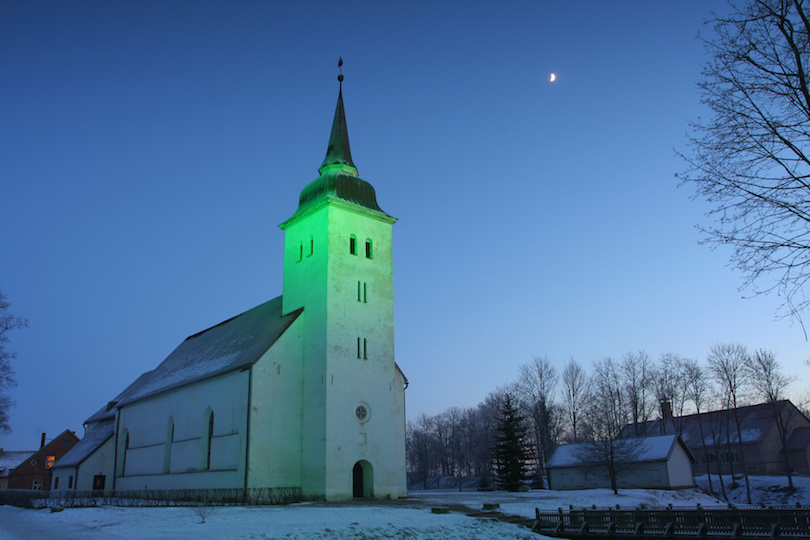
In Southern Estonia is the small city of Viljandi. The city has a rich history that is nearly 2,600 years old, and plenty of historic architecture still remains. The 16th century ruins of the Viljandi Order Castle, for example, are a major attraction. The biggest reason to visit Viljandi, however, is the annual folk music festival. Every July, the city attracts as many as 20,000 visitors who come specifically for the folk music. Dozens of concerts are held in every venue imaginable, and the event is the largest music festival in the entire country.
9. Soomaa National Park [SEE MAP]
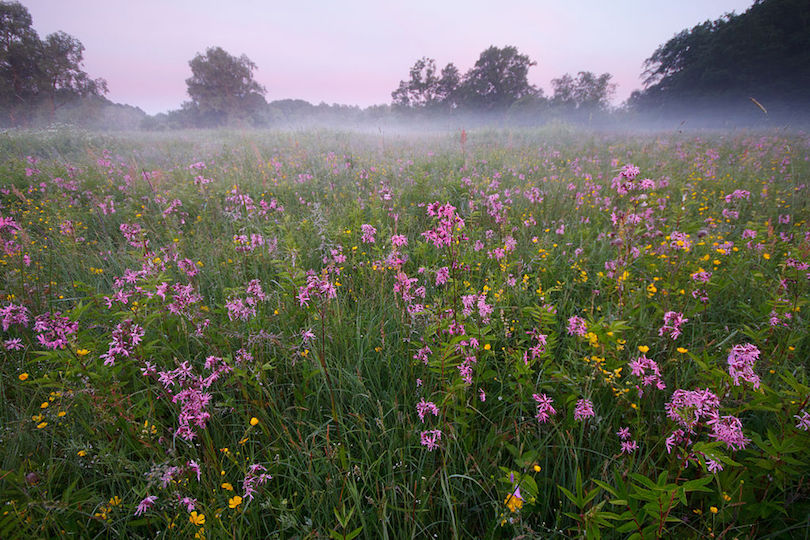
Soomaa National Park is a fascinating destination. Primarily a peat bog formed as a result of glacier melt from more than 10,000 years ago, Soomaa National Park is cut by several beautiful rivers. The best way to explore Soomaa is with a canoe. You rent canoes or join a self-guided tour, and as you paddle you’ll be able to spot deer, elk, boars, beavers, golden eagles and more. Canoeing is especially popular in the spring, or what locals call the fifth season. During this time of year, water levels rise substantially, and boats are sometimes the only way to get around.
8. Rakvere Castle [SEE MAP]
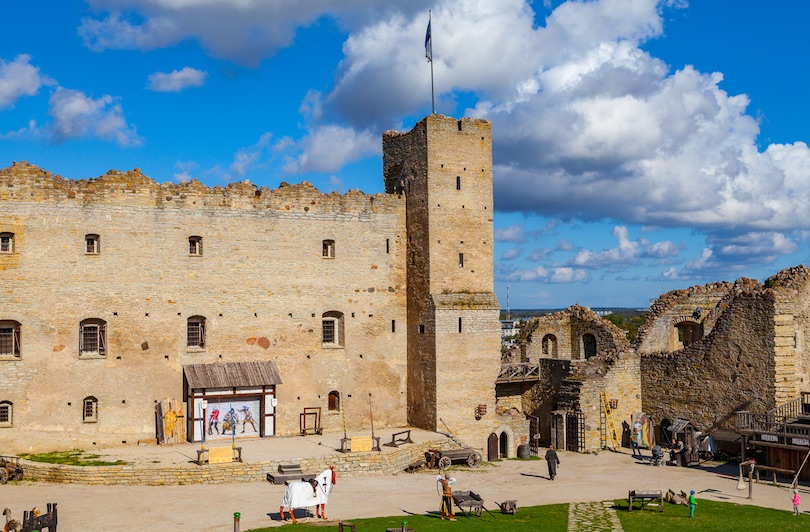
Northern Estonia is home to Rakvere, a city where humans have lived for nearly 1,500 years. The city’s biggest attractions is Rakvere Castle, which was constructed in the 16th century. The castle has become a kind of medieval theme park, and costumed visitors and staff wander the grounds. You can watch knights polishing their armor, see an alchemist’s workshop and tour the ancient wine cellar. In the castle’s Shenkenberg Tavern, you can even dine on classic medieval dishes. Visiting the castle is an unforgettable way to bring history to life.
7. Hiiumaa [SEE MAP]
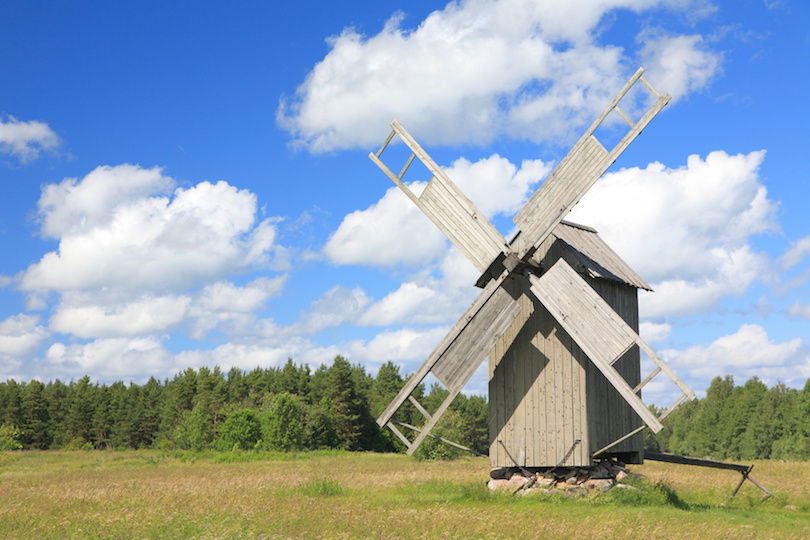
When most people picture Estonia, they don’t picture islands. However, Hiiumaa is just one of several islands off the coast and in the Baltic Sea. To reach Hiiumaa, you can take a plane from Tallinn or a ferry from multiple coastal cities on the mainland. Equally loved by surfers, sailors, and hikers, Hiiumaa is great place to visit for those looking for peace and quiet. The island also boast many interesting lighthouses. The 19th century cast iron Tahkuna Lighthouse is the tallest in the country. The Kõpu Lighthouse, however, is far older. Dating back to the 15th century, Kõpu is one of the oldest lighthouses on the planet.
6. Narva Castle [SEE MAP]
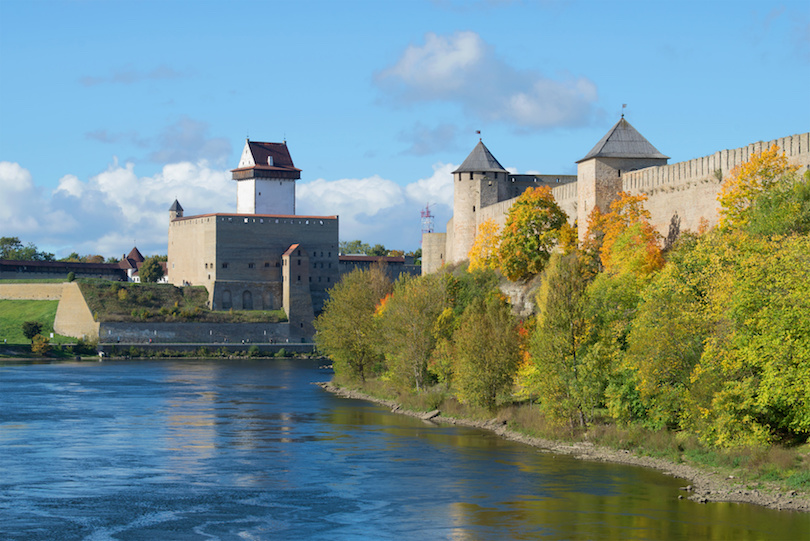
The city of Narva is the easternmost destination in the country, not to mention the entire European Union. The city was heavily bombed during World War II, but thankfully the beautiful and historic Narva Castle still stands. The castle, which is also known as Hermann Castle, was built in the 13th century but the Danes as a residence for the Danish King’s vice-Regent. Inside the castle is the Narva Museum as well as a collection of handicrafts workshops where you can watch and even learn the skills used in medieval times. The castle tower overlooks the Ivangorod castle on the Russian side of the river.
5. Parnu [SEE MAP]
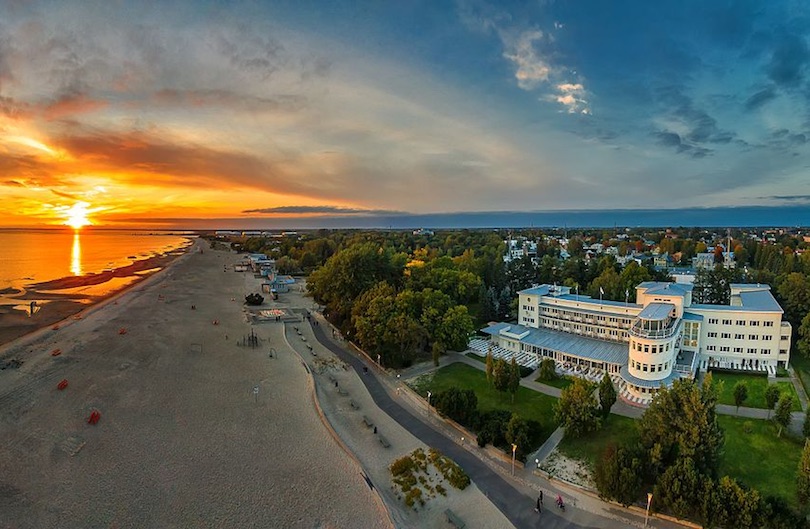
Where the Parnu River meets the Gulf of Riga, you’ll find the coastal resort city of Parnu. Parnu is known as the summer capital, because it is where so many Estonians choose to take their summer vacations. The biggest reason to come to Parnu is the beach, which boasts fine, white sand and gorgeous dunes. The beach promenade runs along the shore and helps to create the traditional coastal resort feel in the city. Even after the sun sets for the day, lighting along the promenade ensures that people are still walking and enjoying the coastal scenery. If a rainy afternoon appears, join the locals at Vee Park, a popular indoor water park in Parnu.
4. Saaremaa [SEE MAP]
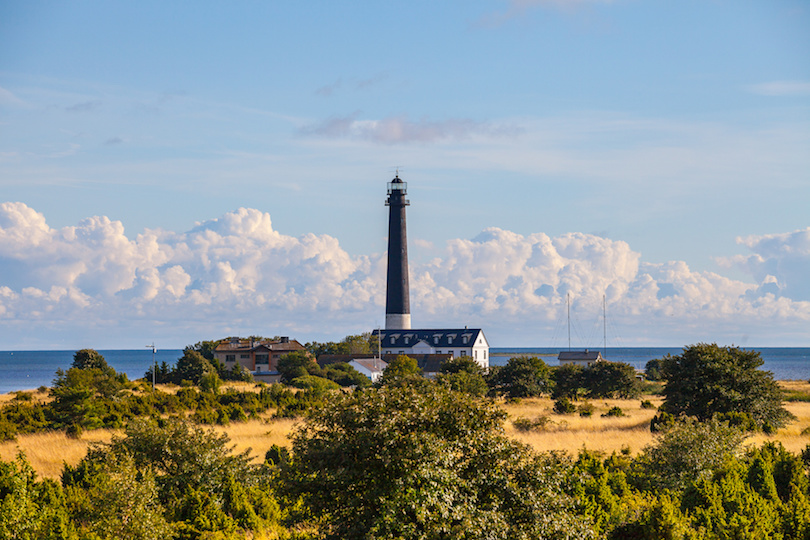
The largest Estonian island is called Saaremaa, and it is located in the Baltic Sea. The island has an 8,000-year-old history, and was ruled by Danes, Swedes, Germans and Russians in that time. Today, most visitors spend their time in the island’s capital city of Kuressaare. In Kuressaare, you can explore the completely intact medieval castle. You can tour the castle and the grounds, which now serve as home to the Regional Museum of Saaremaa. If you’re interested in hiking, sightseeing, birdwatching or photography, then Saaremaa’s Sõrve Peninsula is a spectacularly scenic destination to explore.
3. Lahemaa National Park [SEE MAP]
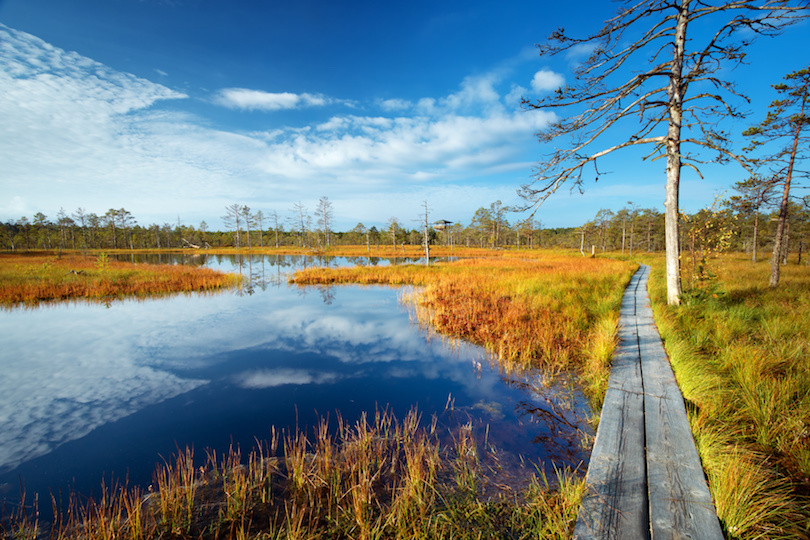
One of the most popular national parks in Estonia is Lahemaa. Since it is just an hour’s drive from the capital, it is the ideal day trip. Viru Raba, or Viru Bog, is a must-see part of the park. Trees poke from the swampy ground, and there is a definite ethereal quality. To make it easy to explore Viru Bog, there is a 5-km (3-mile) boardwalk that is usually dry, keeping you out of the water but close enough to admire the scenery. In the middle of the park is Sagadi Village, a fascinating spot where you can tour Sagadi Manor and learn more about the culture and history of the region.
2. Tartu [SEE MAP]
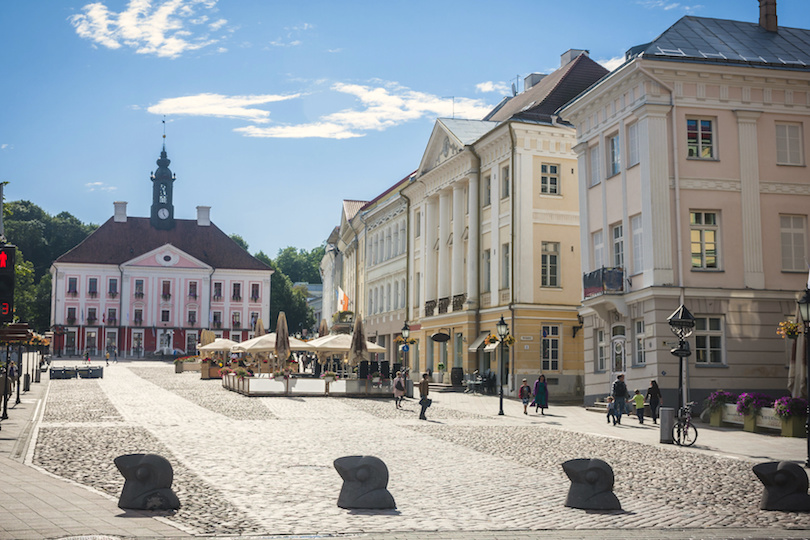
The city of Tartu is considered the intellectual hub of the country, thanks to the impressive and well-known University of Tartu. Between the university and the fact that Tartu is the oldest city in the nation, this city is clearly an interesting destination. Its handsome centre is lined with classically designed 18th-century buildings, many of which have been put to innovative uses. One of the coolest attractions in Tartu is the soup neighborhood. In the soup neighborhood, every street is named after soup ingredients like potatoes, beans and peas. Old wooden houses line these streets, which are just next to the Emajõgi River.
1. Tallinn [SEE MAP]
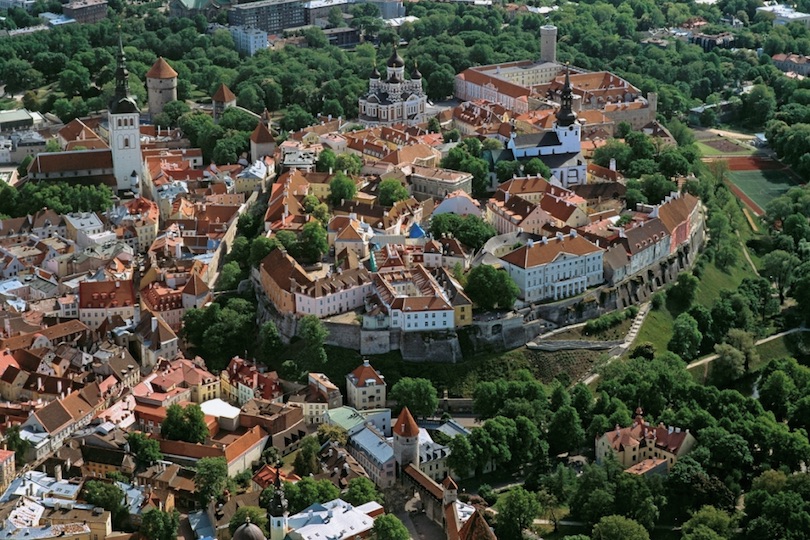
The most popular place to visit in Estonia is Tallinn , the capital and the hub of medieval architecture. The heart of the city is called Toompea, a hill that retains a historic atmosphere thanks to cobblestone streets and 15th century buildings. The area is amazingly preserved and accessible on foot. From the top of Toompea, you can look out over much of the Old City. Some highlights of the Old City include the bustling shops on Viru Street, the 14th century Town Hall and the opulent 19th century Alexander Nevsky Cathedral.
Share this post:
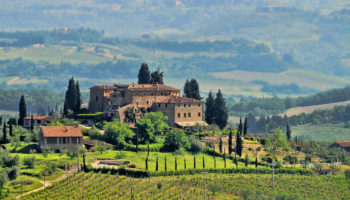
6 Most Beautiful Regions of Europe
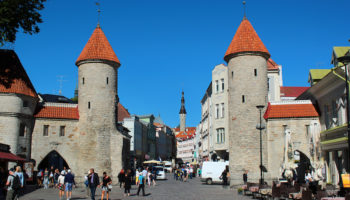
15 Best Things to do in Tallinn, Estonia
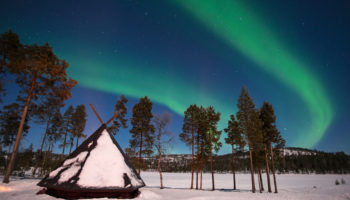
17 Best Places to Visit in Northern Europe
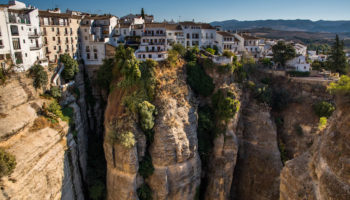
15 Best Countries to Visit in Europe
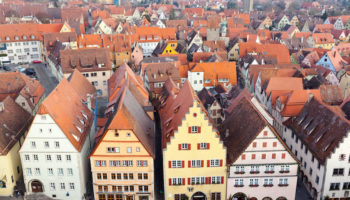
21 Best Places to Visit in Central Europe
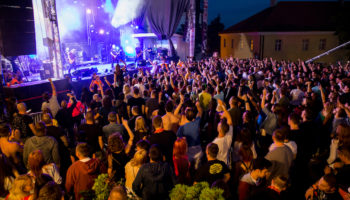
19 Best Things to Do in Serbia
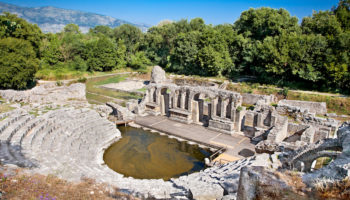
10 Best Places to Visit in Albania
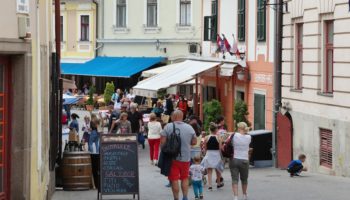
12 Best Cities to Visit in Hungary
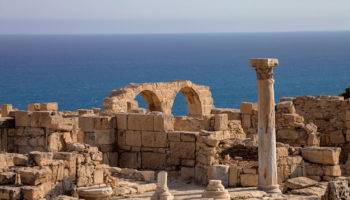
10 Top Tourist Attractions in Cyprus
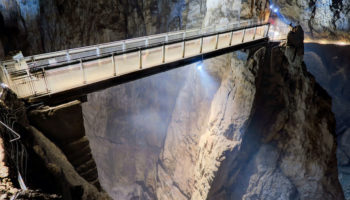
15 Best Things to Do in Slovenia
Reader interactions, leave a reply cancel reply.
Your email address will not be published. Required fields are marked *
This site uses Akismet to reduce spam. Learn how your comment data is processed .

Estonia Travel Guide
Last Updated: April 29, 2024
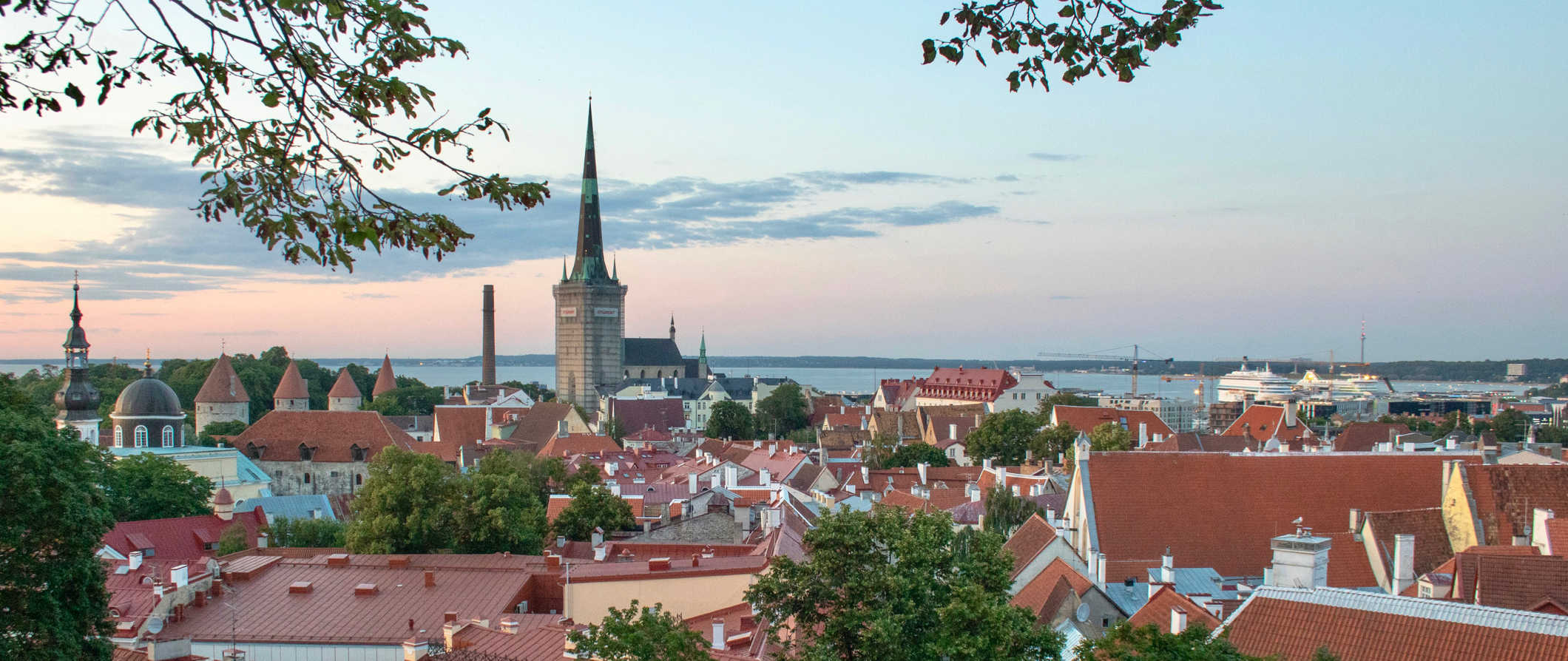
Tucked away in the Baltics, Estonia has become a popular destination thanks to cheap flights, beautiful cities, a wild nightlife, and the country’s stalwart support for digital nomads and remote workers (it’s also a popular spot for cruisers since many ships stop there as well).
I loved my time here. Unlike the stereotypes many people have about Eastern Europe, Estonia is a modern, organized, and tech-forward country. It has more start-ups than Silicon Valley and everything is done online here.
With more than 1,500 islands, swaths of untouched old-growth forests, and historic castles and churches, Estonia seamlessly blends old and new. Be sure to get out of Tallinn, too. There’s more to the country than just its capital.
This travel guide to Estonia can help you plan your trip, save money, and make the most of your time in this underrated European destination!
Table of Contents
- Things to See and Do
- Typical Costs
- Suggested Budget
- Money-Saving Tips
- Where to Stay
- How to Get Around
- How to Stay Safe
- Best Places to Book Your Trip
- Related Blogs on Estonia
Top 5 Things to See and Do in Estonia
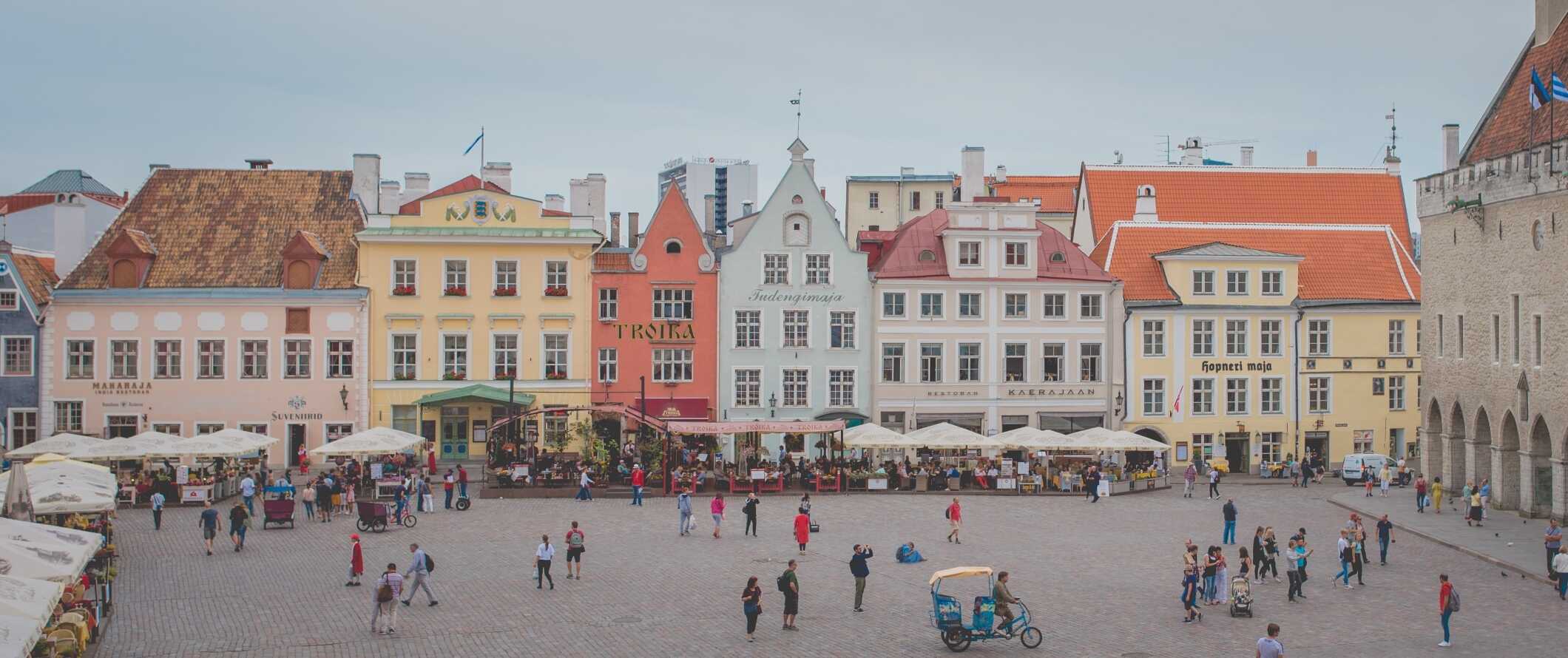
1. Party in Tallinn
Estonia’s historic capital city Tallinn is a cultural melting pot on the shores of the Baltic Sea. Here you can explore one of the best-preserved medieval cities in Northern Europe. Wander along the cobblestone streets while taking in historic architecture of the Old Town. While it has a lot of history to offer, it’s also ripe with bars, pubs, nightclubs, and cheap drinks. If you love live music, you’ll be impressed with Tallinn. There’s a vibrant party scene here that’s both fun and affordable.
2. Visit Pärnu
Overlooking Pärnu Bay is the resort city of Pärnu. Perched over the Baltic Sea, it’s a lovely place to relax for a few days. In the warmer months you can walk 20 minutes from the town center to the expansive Blue Flag beach with soft sand and calm water that is perfect for swimming and sunbathing. It makes for a perfect jumping-off point for anyone wanting to do any sailing while in Estonia. When you’ve had your fill of sand and saltwater, pamper yourself with a mud bath at the seaside 1920’s era spa. Like everywhere in Estonia, there’s some incredible historic architecture, like the old Russian style Transformation of Our Lord Church. Divided by the Pärnu River, the city is known for its 19th-century timber villas as well as the relaxing beaches of Pärnu Bay.
3. Get lost in Vanalinn
For the perfect mix of medieval and modern, venture into Tallinn’s Old Town, Vanalinn. This part of the city was built between the 13th and 16th centuries and was granted UNESCO World Heritage status in 1997. The original architecture is unbelievably well preserved — even after aggressive World War II bombings. Within the historic town square, you’ll find the 13th century Gothic Town Hall complete with a 64-meter-tall (209 feet) tower. It’s full of cobblestone streets and gothic architecture and makes for stunning photos and fun people watching.
4. Relax in Saaremaa
Home to the medieval castle Kuressaare (which dates to the 16th century), the island of Saaremaa is a beautiful place for hikers and bird watchers to escape into nature. Saaremaa is known for its beaches and traditional villages. Archeologists believe the island has been inhabited since 5000 BCE. The island is home to Vilsandi National Park, which spans 238 square kilometers (91 square miles) and is home to almost 250 species of birds. The climate makes it a hotspot for all types of flora and fauna. You can also visit the site of the Kaali meteorite strike (which happened over 3,000 years ago) with its huge craters and a unique museum full of chunks of the meteor.
5. Visit Lahemaa National Park
Located one hour east of Tallinn, this park showcases Estonia’s incredible natural beauty. The park was established in 1971 to protect the region, and it remains one of the main tourist attractions in the country. Spanning 750 square kilometers (289 square miles), it’s a wonderful hiking spot perfect for nature lovers thanks to the many large mammals living in the forests, including deer, wolves, bears, and lynx. About 70% of the park is covered in forest and there are a few incredible hiking trails to explore. Raised bogs are another interesting feature, especially Laukasoo Reserve which is believed to be 7000 years old. Those interested in architecture will love exploring the historic manors within the park, including the famous Baroque masterpiece Sagadi Manor. Admission is free.
Other Things to See and Do in Estonia
1. spot wildlife in soomaa national park.
Soomaa National Park is one of the most magical natural landscapes in Estonia. Spread out over 359 square kilometers (138 square miles), the park is home to elk, deer, boar, lynx, wolves, beavers, bears, and more. Located 140 kilometers (87 miles) south of Tallinn, the park is a popular getaway for hikers. The nearby Raudna River and Parnu Basin also offer the opportunity to kayak and canoe. Much of the park floods in the spring, giving you the chance to explore the forests via canoe/kayak. Admission to the park is free. Canoe and kayak rentals cost 27 EUR. Guided tours cost around 50 EUR.
2. Go skiing in Otepaa
A much-loved hiking and mountain biking destination during the summer, in the winter Otepaa transforms into the winter capital of Estonia. There are a couple of kilometers of mountains here and 8 different lifts that offer access. It’s one of the most budget-friendly places to ski in Europe . Lift passes cost around 38 EUR. Expect to pay another 35 EUR for a one-hour ski lesson and 15 EUR per day for ski rentals.
3. Explore Kuressaare Castle
Located on Saaremaa Island in western Estonia, Kuressaare Castle is the best-preserved castle in the Baltics. Built in the 14th century, the castle and its moat were constructed on the grounds of the original castle that dated to the 13th century. The current castle was constructed in the late Gothic style and consists of a large square building surrounding a spacious courtyard. A 36-meter (121-foot) defensive tower and traditional medieval portcullis make up the castle’s defenses. There’s a museum inside that sheds light on the castle’s history, including when the Nazis used the castle to execute dissidents. Admission to the castle is free while the museum costs 10 EUR. Bike rentals cost 4 EUR an hour and rowboats cost 10 EUR per hour.
4. Hang out in Tartu
Tartu holds the title of the intellectual (and hipster) capital of Estonia. Located two hours south of Tallinn, here you’ll find the country’s most prestigious university (University of Tartu), a historic citadel, and the ruins of the city’s cathedral (which dates to the 13th century). Be sure to explore Soup Town (a neighborhood composed of old wooden houses), see the 18th-century town hall (which stands out because it’s pink and red), and spend some time people-watching at a café in Raekoja Square, the city’s historic main square.
5. Visit the Estonian National Museum
Founded in 1909, this museum is located in Tartu. It was expanded in 2016 and moved into a massive new building. There are tons of exhibitions on Estonian history, with a detailed gallery on the Russian occupation of the country (which lasted from 1940-1991). The museum provides a solid historical and cultural foundation to help you better understand Estonia’s past and present. Admission is 14 EUR.
6. Visit Kaali Meteorite Crater Field
Located on Saaremaa Island, this site is where a giant meteorite hit over 7,500 years ago. There are 9 craters in total, with the largest crater spanning 110 meters in diameter (360 feet) and reaching depths of 22 meters (72 feet). All kinds of animal bones have been found here and there is a stone wall built around the area (dating to the Bronze Age), leaving archaeologists to surmise that the area was used for some kind of cult or religious ceremonies after the craters were made. Admission is free, though the small museum nearby costs 1.60 EUR to enter.
7. Enjoy an open-air festival in Viljandi
For summer festivals and live music, head to Viljandi. Located in the middle of the country, the town’s medieval castle is used for concerts and music festivals (especially traditional folk music). While you’re here, be sure to spend some time relaxing at Lake Viljandi where you can swim and enjoy the beach. Lake Võrtsjärv, the largest inland lake in the country, is also nearby.
8. Visit the Alexander Nevsky Cathedral
The Alexander Nevsky Cathedral is in the heart of Tallinn’s Old Town. Standing 45 meters tall (150 feet), it was built between 1894-1900 in the Russian Revival style. It was left to decline under Soviet rule, however, once Estonia gained independence it was restored to its former glory. As well as the elaborately decorated bells (the largest weighing almost 16 tons) there are some beautiful religious mosaics inside and incredibly detailed stained glass windows. Admission is free but it’s a place of worship so dress respectfully.
9. Try windsurfing
With so much of the country surrounded by water, Estonia is a perfect destination for windsurfing. There are windsurfing shops on the west coast and in the north that offer rentals for 25-40 EUR and lessons from 66 EUR per hour. If windsurfing isn’t your thing, you can also enjoy stand-up paddleboarding, wakeboarding, or water skiing. Expect to pay around 20 EUR for those activities.
10. Visit the KGB Museum
Located on the top floor of Tallinn’s luxurious Hotel Viru are the KGB’s former spy rooms (the KGB was the Soviet Union’s secret police). The rooms were discovered after the KGB fled Estonia in the early 1990s. The hotel owners decided to keep the rooms exactly the way they were. Inside are listening and surveillance equipment that looks like something straight out of a vintage spy movie. The museum is only accessible as part of a guided tour that can be booked from the hotel lobby. The tour costs 12 EUR.
11. Go birding in Matsalu National Park
This is one of the best places to spot endangered species like the white-tailed eagle or watch the migrating cranes. Established in 1957, the park was created to protect the nesting and migrating birds. It’s located on the west coast of the country, spanning almost 500 square kilometers (192 square miles). Every year, between 10,000-20,000 cranes and upwards of 40,000 ducks visit the park as they migrate. Admission is free.
12. Wander Linnahall
Commissioned by the Soviet Union to accommodate the 1980 Moscow Summer Olympics, Tallinn’s Linnahall sports complex is now a giant, imposing, concrete ghost town. An amphitheater that seats 5,000 was unable to be utilized once the Olympic-sized crowds had departed so it now lies crumbling (construction was rushed and was done poorly so the buildings are falling apart). Over 66 countries boycotted the games due to the U.S.’s disapproval of the Soviet-Afghan war. Today, the venue is not in use so you’re free to wander and explore. Its location above the city makes it a great lookout spot. It’s an interesting place to wander around if you have a spare few hours.
13. Visit the Estonian Open-Air Museum
Hidden amongst the trees and forests just outside of Tallinn, this open-air museum is a reconstruction of an 18th-century rural village. It’s home to all kinds of traditional Estonian buildings. There are actors dressed up in historical garb as well as traditional professions on display, such as basket weaving and blacksmithing. There are over 80 wooden buildings you can visit, including a church, school, tavern, and farmhouse. Admission is 10 EUR.
Estonia Travel Costs
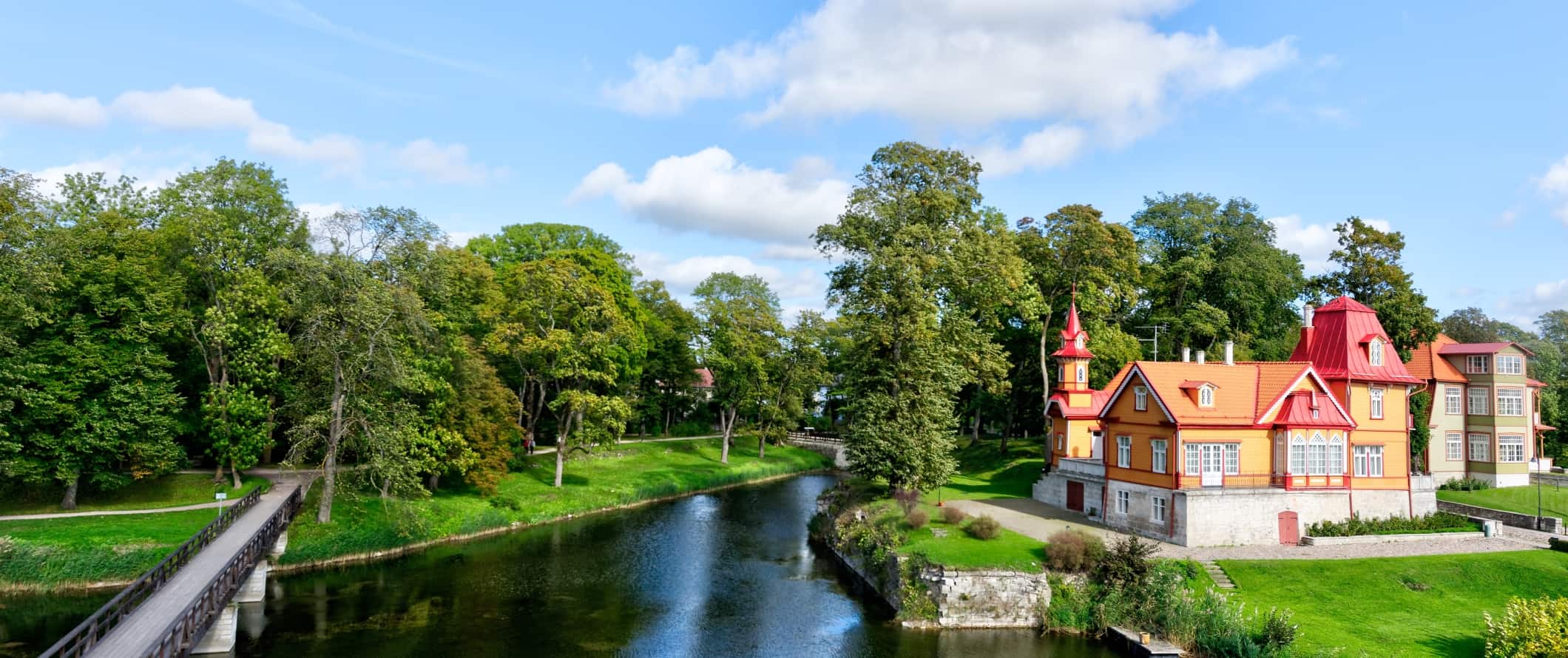
Accommodation – Hostel dorms start at 10 EUR per night for a bed in a 10-20 bed dorm. A smaller dorm with 6-8 beds costs 15 EUR per night. For a private room in a hostel, expect to pay at least 30 EUR per night. Free Wi-Fi is standard and most hostels have self-catering facilities. A few include free breakfast.
Budget hotels start at 40 EUR per night for a double or twin room that includes free breakfast and free Wi-Fi.
Airbnb is available around the country with private rooms starting at 20 EUR per night. For an entire home or apartment, expect to pay at least 35 EUR per night (though prices average double that).
For anyone traveling with a tent, Estonia is one of the best places in Europe for wild camping. Wild camping is permitted on government land (though some of the national parks do have restrictions). Here’s a list of the places you can wild camp in Estonia .
Food – Estonian food has a mix of influences from Russia, Germany, and Scandinavia. Dishes are commonly based around meat and potatoes as well as seasonal vegetables. Soups are a common main course as well. Pickled foods like beets, cucumbers, and fish, as well as rye bread and herring, make up the basis of much of the local cuisine. As in Scandinavia, open-faced sandwiches are a quick to-go snack. Verivorst and mulgikapsad (blood sausage and sauerkraut) are two of the most popular national dishes.
For an inexpensive meal at a café or restaurant, expect to pay between 6-13 EUR. A traditional sausage or stuffed pancake costs just under 3 EUR while fast food meals (think McDonald’s) cost around 7 EUR.
A multi-course meal at a restaurant with table service costs around 40 EUR, including a drink. Expect dishes like grilled salmon, lamb ribs, and roasted pork or duck. For something like Thai or Indian food (which is only really available in Tallinn and Tartu), expect to pay around 12-15 EUR for a meal.
Beer costs around 5 EUR. A latte/cappuccino is 3 EUR while bottled water is 1.50 EUR.
If you are planning to cook your own food, you can expect to spend around 30-40 EUR for a week’s worth of groceries. This includes basic staples like pasta, rice, seasonal produce, and some meat or fish.
Backpacking Estonia Suggested Budgets
On a backpacking budget of 35 EUR per day, you can stay in a hostel dorm, cook your meals, limit your drinking, take public transportation to get around, and do mostly free or cheap activities like free walking tours and visiting national parks. If you plan on drinking, add 5-10 EUR per day to your budget.
On a mid-range budget of 110 EUR per day, you can stay in a private hostel room or Airbnb, eat out at cheap restaurants serving traditional cuisine, drink more, take the occasional taxi to get around, and do more paid activities like museum visits or ski trips.
On a “luxury” budget of 225 EUR or more per day, you can stay in a hotel, eat out anywhere you want, drink as much as you want, rent a car to get around, and do more paid activities and guided tours. This is just the ground floor for luxury though. The sky is the limit!
You can use the chart below to get some idea of how much you need to budget daily, depending on your travel style. Keep in mind these are daily averages – some days you’ll spend more, some days you’ll spend less (you might spend less every day). We just want to give you a general idea of how to make your budget. Prices are in EUR.
Estonia Travel Guide: Money-Saving Tips
Estonia is a perfect destination for anyone on a budget. It’s not as cheap as it was years ago but there’s still a lot of value here — and still plenty of ways to reduce your costs! Here is how to save money during your visit:
- Take a free walking tour – Tallinn offers a handful of free walking tours which are great ways to get familiar with the city and the culture. Most hostels offer them and there are even some that have a special focus (such as the city’s Communist past). Just be sure to tip your guide at the end!
- Wild camp – If you really want to save money in Estonia, bring a tent. Wild camping is legal here so you can pitch your tent on public land throughout Estonia. Just make sure to pick up your trash when you’re done.
- Cook your own meals – Many hostels have kitchen facilities so you can cook your own meals. Buying your own groceries may not be as glamorous as going out to eat but it does save you money.
- Stay with a local – Staying with a local via Couchsurfing will get you a free place to stay while connecting you with a local who can share their insider tips and advice.
- Walk everywhere – All the major cities in Estonia are walkable so skip the public transportation if you want to save a few extra euros.
- Enjoy the free spaces – There are plenty of free parks as well as many free hiking trails around the country. If you’re on a tight budget, enjoy the outdoors.
- Bring a water bottle – The tap water in Estonia is safe to drink. Bring a reusable water bottle to avoid having to buy single-use plastic. LifeStraw is my go-to bottle as it has a built-in filter to ensure your water is always clean and safe.
Where to Stay in Estonia
Budget accommodation in Estonia is plentiful. Here are some of my favorite hostels in Estonia:
- Old Town Mukenof (Tallinn)
- Looming Hostel (Tartu)
- Hostel Louna (Parnu)
- Kalda Talu Puhkekeskus (Valga)
How to Get Around Estonia
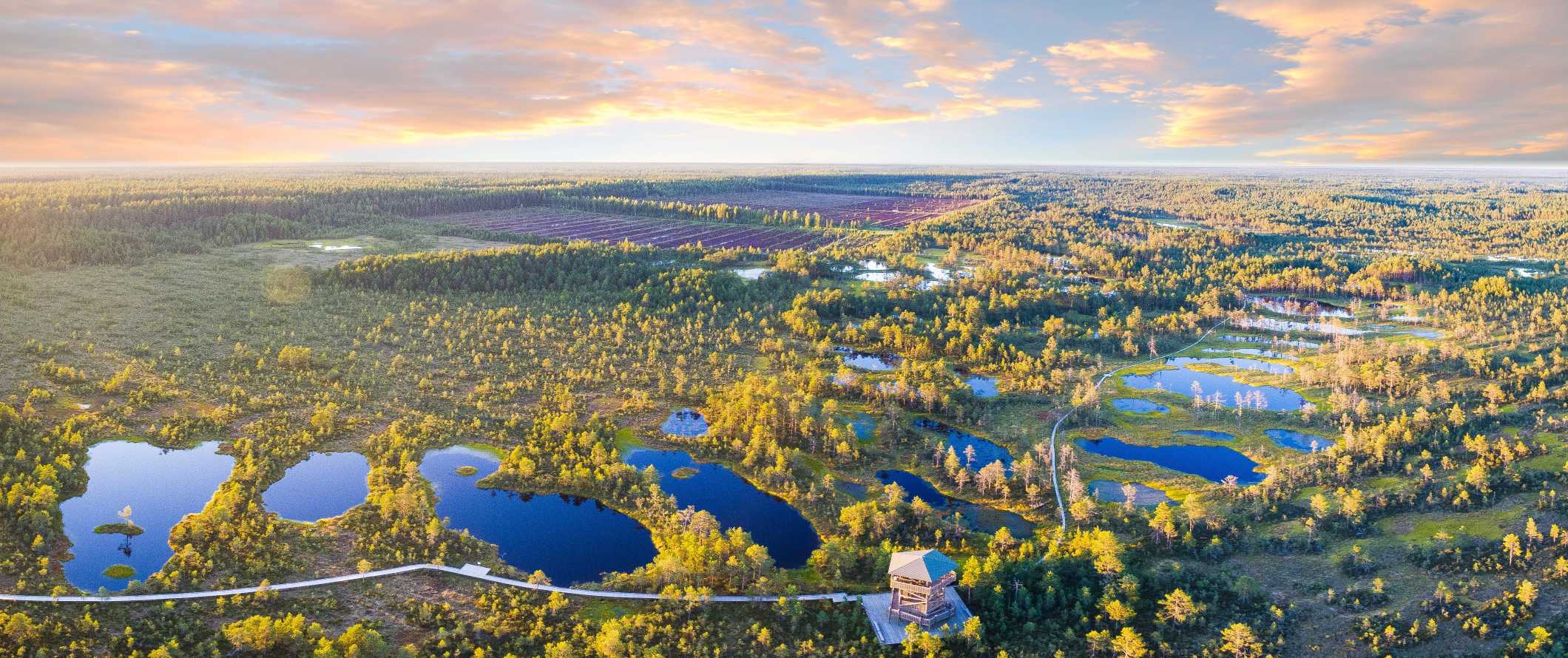
Public transportation – In most smaller towns and cities in Estonia, it’s possible to walk everywhere. However, in larger cities like Tallinn, you may want to use public transport to get around. In Tallinn, you can purchase QR-code tickets or load money onto a Smartcard (a pre-paid bus card). There is an extensive network of trams, trolleys, and buses that service the city and surrounding suburbs.
Public transportation prices vary by city but expect to pay around 1.50 EUR for a standard 1-hour adult ticket.
Train – The trains in Estonia are reliable, cheap, and fast. Many even have free Wi-Fi. You can take an express train to Tartu from Tallinn in just two hours for 8-12 EUR each way. The two-hour journey from Tallinn to Viljandi is 10-12 EUR while the seven-hour train ride from Tallinn to Riga, Latvia starts at just 15 EUR.
Bus – Many people favor train travel over bus travel in Estonia because the prices are similar and, in many cases, the trains are faster. However, there are more scheduled buses per day than trains so the bus might better fit your schedule.
Buses start at just 5 EUR. To get from Tallinn to Tartu takes 2.5 hours (just 30 minutes longer than the train) and costs around 10 EUR. The bus from Tallinn to Saaremaa Island takes around 4 hours and costs 11 EUR while the journey from Tallinn to Viljandi takes just over 2 hours and costs 9 EUR. Expect to pay around 16 EUR for the 5.5-hour bus to Riga, Latvia.
To find bus routes and prices, use BusBud .
Flying – Although there are domestic flights within Estonia, they’re prohibitively expensive and won’t save you any time as a high-speed train is almost as fast when you include check-in time. Skip flying.
Car rental – Car rentals cost as little as 28 EUR per day. You need an International Driving Permit (IDP) in order to rent a car here. For the best car rental prices, use Discover Cars .
When to Go to Estonia
The summer months of June-August are the busiest of the year (though busy in Estonia is far less busy than cities in Western Europe). During this time, the days are longer and the temperatures hover around 20°C (68°F). Almost all of Estonia’s festivals are held during these months.
To beat the crowds, visit between April-May or September-October. During these months, the temperatures are cooler, making it the perfect time to get outdoors and camp or hike. Plus, the peak tourist season is over so the crowds are thinner and things are a little cheaper.
During the winter, temperatures plummet and the country is blanketed in snow. Visiting Estonia during the winter can be a magical experience if you are interested in skiing or Christmas markets. Be warned though — temperatures can drop to -10°C (15°F).
How to Stay Safe in Estonia
Estonia is a safe country with a low crime rate. Within Tallinn, petty theft (including pickpocketing) is possible in the heavily-touristed areas, as well as on crowded public transportation and in busy bars/clubs. Keep your valuables out of sight and watch out for people (especially younger children) trying to distract you.
Solo female travelers should generally feel safe here, however, the standard precautions apply (never leave your drink unattended at the bar, never walk home alone intoxicated, etc.).
If you’re heading out to enjoy Tallinn’s famous nightlife, leave your valuables at home. Avoid walking alone at night and stick to the main roads. Muggings are rare, but they can occur. Travel in pairs or groups if possible and avoid walking alone at night if intoxicated, just to be safe.
One thing to be aware of is that reflectors are required by law to be worn by pedestrians at night. You can pick them up in most supermarkets cheaply and you just need to attach one to your jacket or bag when out after dark.
Scams here are rare but you can read about common travel scams to avoid here.
If you do experience an emergency, dial 112 for assistance.
The most important piece of advice I can offer is to purchase good travel insurance. Travel insurance protects you against illness, injury, theft, and cancellations. It’s comprehensive protection in case anything goes wrong. I never go on a trip without it as I’ve had to use it many times in the past. You can use the widget below to find the policy right for you:
Estonia Travel Guide: The Best Booking Resources
These are my favorite companies to use when I travel. They consistently have the best deals, offer world-class customer service and great value, and overall, are better than their competitors. They are the companies I use the most and are always the starting point in my search for travel deals.
- Skyscanner – Skyscanner is my favorite flight search engine. They search small websites and budget airlines that larger search sites tend to miss. They are hands down the number one place to start.
- Hostelworld – This is the best hostel accommodation site out there with the largest inventory, best search interface, and widest availability.
- Booking.com – The best all around booking site that constantly provides the cheapest and lowest rates. They have the widest selection of budget accommodation. In all my tests, they’ve always had the cheapest rates out of all the booking websites.
- HostelPass – This new card gives you up to 20% off hostels throughout Europe. It’s a great way to save money. They’re constantly adding new hostels too. I’ve always wanted something like this and glad it finallt exists.
- Get Your Guide – Get Your Guide is a huge online marketplace for tours and excursions. They have tons of tour options available in cities all around the world, including everything from cooking classes, walking tours, street art lessons, and more!
- The Man in Seat 61 – This website is the ultimate guide to train travel anywhere in the world. They have the most comprehensive information on routes, times, prices, and train conditions. If you are planning a long train journey or some epic train trip, consult this site.
- Rome2Rio – This website allows you to see how to get from point A to point B the best and cheapest way possible. It will give you all the bus, train, plane, or boat routes that can get you there as well as how much they cost.
- FlixBus – Flixbus has routes between 20 European countries with prices starting as low 5 EUR! Their buses include WiFi, electrical outlets, a free checked bag.
- SafetyWing – Safety Wing offers convenient and affordable plans tailored to digital nomads and long-term travelers. They have cheap monthly plans, great customer service, and an easy-to-use claims process that makes it perfect for those on the road.
- LifeStraw – My go-to company for reusable water bottles with built-in filters so you can ensure your drinking water is always clean and safe.
- Unbound Merino – They make lightweight, durable, easy-to-clean travel clothing.
- Top Travel Credit Cards – Points are the best way to cut down travel expenses. Here’s my favorite point earning credit cards so you can get free travel!
Estonia Travel Guide: Related Articles
Want more info? Check out all the articles I’ve written on Europe travel and continue planning your trip:

The 7 Best Hotels in London

10 Scotland Road Trip Tips You Need to Know Before You Go

The Perfect 7-Day Croatia Itinerary

The 6 Best Hotels in Copenhagen

The 6 Best Hotels in Florence

The 7 Best Hotels in Madrid
Get your free travel starter kit.
Enter your email and get planning cheatsheets including a step by step checklist, packing list, tips cheat sheet, and more so you can plan like a pro!

- Where To Stay
- Transportation
- Booking Resources
- Related Blogs
You will be redirected to your dashboard shortly. We will also call you back in 24 hrs .
- 12 Best Places To Visit In Estonia In 2024 For Seeking The Ultimate Adventure
10 Apr 2023
Estonia is a largely underrated place, laying peacefully in Northern Europe, a country that has its and bits of all. The country boasts of scenic coastlines, medieval cities, and a massively interesting history to keep people on the hook. The country is bordered by Russia, the Baltic Sea, the Gulf of Finland and Latvia, making it accessible from many places, then what travellers tend to raise questions about. The best thing about travelling to Estonia is, the country is affordable for visitors and does not add to your debts. Among the many places to visit in Estonia , the largest and most visited city is Tallinn. Apart from which, there are many other places that one needs to see when in Estonia.
12 Best Places To Visit In Estonia
The country’s main intriguing sights are sprawled among the various cites all over the country. It is replete with history and scenery which makes it a great place for photography. Although the noteworthy sights are a must visit, one should try and embrace the history from the 15th and 16th Century that the country imbibes on. Therefore, we have made a list of 10 places to visit in Estonia :
- Lahemaa National Park
- Narva Castle
- Rakvere Castle
- Soomaa National Park
- Lake Peipus
- Matsalu National Park
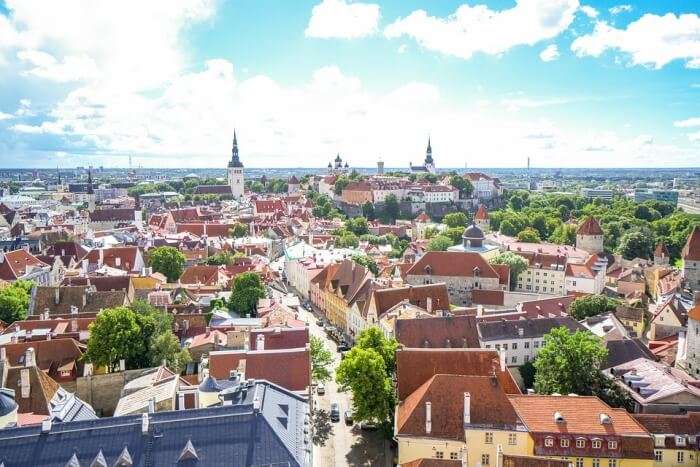
Image Source
It would be immoral of us to not have mentioned Tallinn in the numero uno spot, for it deserves it. Among the many famous places to visit in Estonia , Tallinn is the foremost in the running. The main attraction or heart of the city is Toompea and it still has kept the ancient and historic ambience very much alive with Cobblestones Street and 15th Century establishments. The region is well preserved and is accessible by walking for history lovers. From the topmost region of Toompea, you can get a view of the hustling and bustling, Old City.
Must Read: 35 Best Places To Spend Christmas In Europe
Europe Holiday Packages On TravelTriangle
Explore the most beautiful places to visit in Europe, from Paris to the Venice canals and from the Greek islands to the Swiss alps. Book customized packages by expert agents on TravelTriangle. Inclusive of airport transfers, cab, resort, sightseeing and meals. Best holiday experience Guaranteed. Book Now

Magnificent Switzerland Holiday 6D/5N Package @ Rs 69,999
Plan your trip today!

Magnificent Europe Tour 7D/6N Package @ Rs 70,975
Get quotes from multiple travel experts.
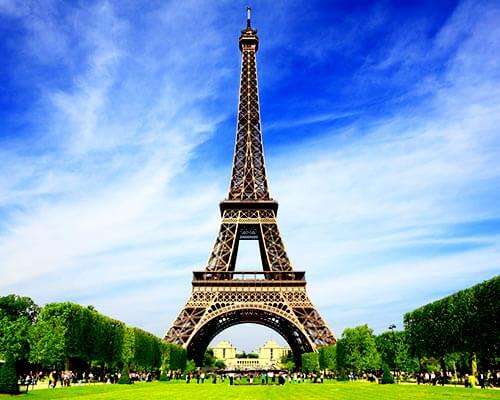
France & Switzerland Tour Package 8D/7N @ Rs 90,000
Compare & customize quotes before booking.
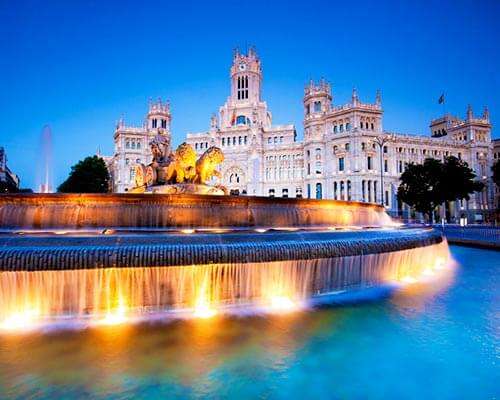
Scintillating Spain & Portugal Tour 11D/10N @ Rs 101,150
Have Questions? Talk to our travel experts today.
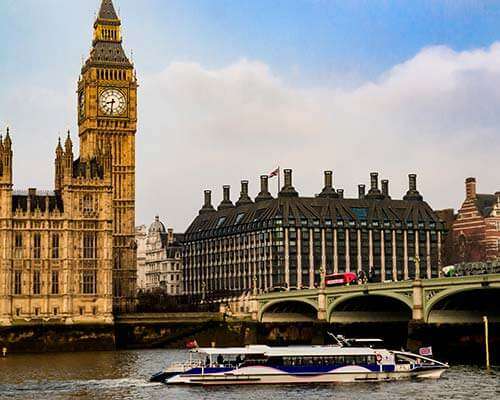
6 Country Europe Tour Package 12D/11N @ Rs 118,650
Best prices guaranteed. EMI option available.

See more at TRAVELTRIANGLE.COM
2. Lahemaa National Park

The Lahemaa National Park is certainly the most famous places to visit in Estonia . This park is just an hour’s drive from the capital and makes for an ideal day trip. When in the park, do not miss out the Viru Bog or Viru Raba. With an ethereal quality that comprises the beauty of this place, a fascinating thing is the trees poking from the swampy ground. To explore the Viru Bog take the 3-mile broad walk, which is a dry path that helps keep you away from the water for you to enjoy the scenery closely? Also, you can visit the Sagadi Manor, a fascinating spot in the Sagadi Village, located in the center of the park.
3. Saaremaa

Saaremaa is the best places to visit in Estonia . The island comprises a history that is 8000 years old. It was ruled by the Swedes, Danes, Russians and the Germans over the years. Visitors who come here spend their time in the capital city of the island, Kuressaare, where you can explore the intact medieval castles. You can even opt for hiking, birdwatching, sightseeing, and photography in and around this area, with the Saaremaa’s Sorve Peninsula’s spectacular scenic destination for visitors to explore.
Suggested Read: 13 Frolicsome Beaches In Europe For All The Excited Beach Bums Across The Globe
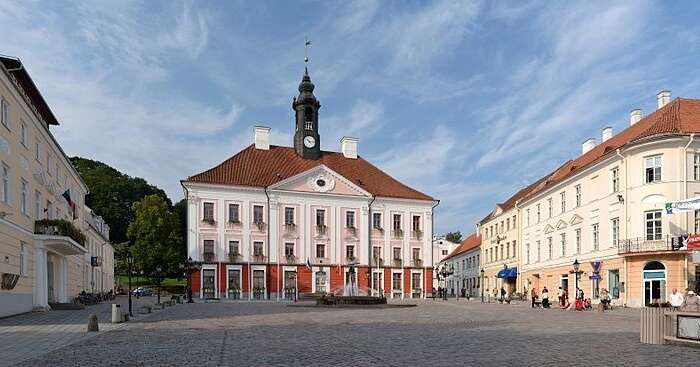
Considered as the intellectual hub of the country, Tartu is well known for the University of Tartu. It is the oldest city in the nation which makes it more interesting to visit. The city centre is classically designed with 18th Century buildings, most being an outlet for innovative requirements. The soup neighbourhood is the quirkiest attraction of the city, with street names being named after soup ingredients like beans! It is touted as the best places to visit in Estonia .
5. Narva Castle
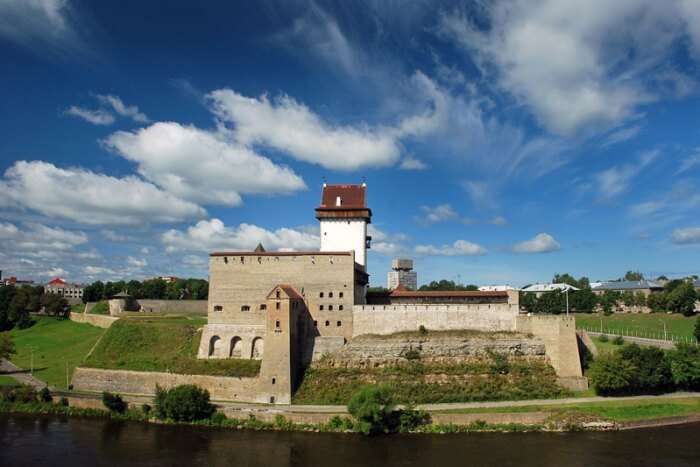
The easternmost destination on the map of Estonia is the city of Narva. This particular city was heavily bombed during the WWII. However, the beautiful and historic castle of Narva still stands today. The castle is also known as the Hermann Castle, wcentrehich was built in the 13th Century. The castle repletes a good collection of handicraft workshops for people to learn which also includes a museum. The most gorgeous view here is the tower of the Narva castle that overlooks the Russian side of the river.
Suggested Read: 17 Spots For Snorkeling In Europe Every Underwater Enthusiast Must Visit

The coastal resort city of Parnu is located where the Parnu River falls into the Gulf of Riga. The major attraction here is the beach of Parnu, boasting off about the gorgeous dunes and powdery white sand. Parnu is also famous as the summer capital because most of the Estonians choose to spend their summer vacations here. You can also visit the indoor water park in the area named as the Vee Park. Well, it is one of the best places to visit in Estonia in winter.
7. Rakvere Castle
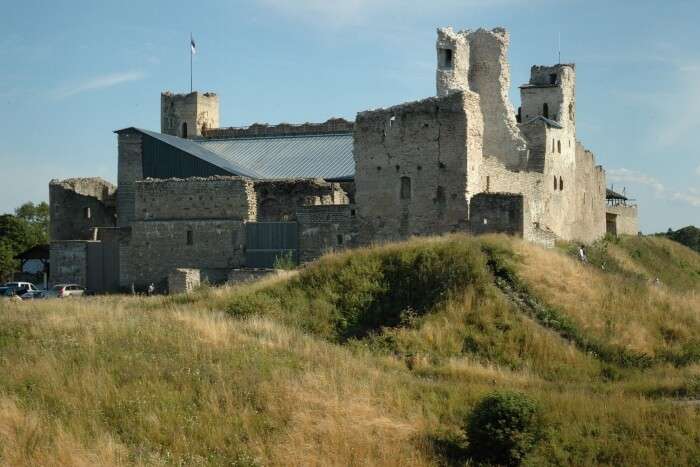
The Rakvere Castle lays in the northern part of Estonia. Rakvere is a city where humans have lived for 1500 years and the biggest attraction of this place is the Rakvere Castle. It is like a cosplay event every day, where people are dressed. You will find knights polishing their armour, alchemist’s workshops and also get a tour of the ancient wine cellar. There is a place in the castle called Shenkenberg Tavern for you to enjoy a history-themed, ancient dining experience. The Rakvere Castle is among the famous places to visit in Estonia .
Suggested Read: Guess Which European City Gets The Title Of World’s Most Liveable City This Year!
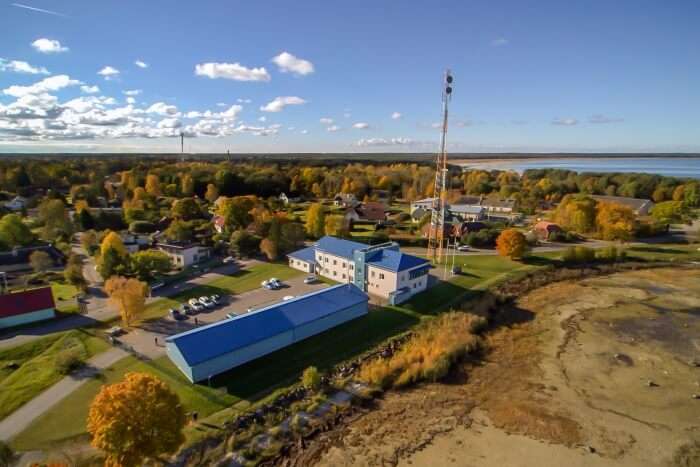
If you were to think of Estonia, the island would probably not make it to your imagination. However, Hiiumaa is one of the many islands in Estonia. You can reach this gorgeous piece of land by taking a plane from Tallinn or avail to ferries from multiple coastal cities. Hiiumaa Is a great place to visit for relaxation and having a stress free quiet day. There is a lighthouse from the 19th century of cast iron known as the Tahkuna Lighthouse. It is the tallest in the country.
9. Soomaa National Park
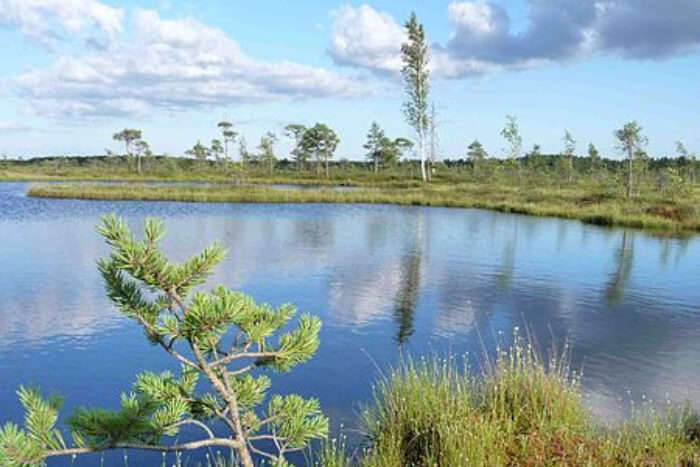
Another one of the fascinating destinations of Estonia is the Soomaa National Park. It was primarily a peat bog, which was formed as a result of glaciers melting more than 10000 years ago. In this area, canoeing is the most popular activity. Also, you can spot deer, elk, beavers, boars, golden eagle and many other animals in this park. The most suggested season to visit this park is the spring season. For its amazing weather and natural feature changes.
Suggested Read: This Winter, Escape To The Best Honeymoon Destinations In Europe!
10. Viljandi

Viljandi is located in southern Estonia. It is a small city but has a rich history, which dates back to 2600 years. The historic architecture though not all, some of which still remains for the world to see. Among which, the Viljandi Order Castle is a major attraction. It is a ruin from the 16th century, which attracts visitors every year. In the month of July, the city attracts around 20000 visitors for the annual folk music festivals and concerts that are held here. It makes for the largest music festival in all of Estonia.
11. Lake Peipus
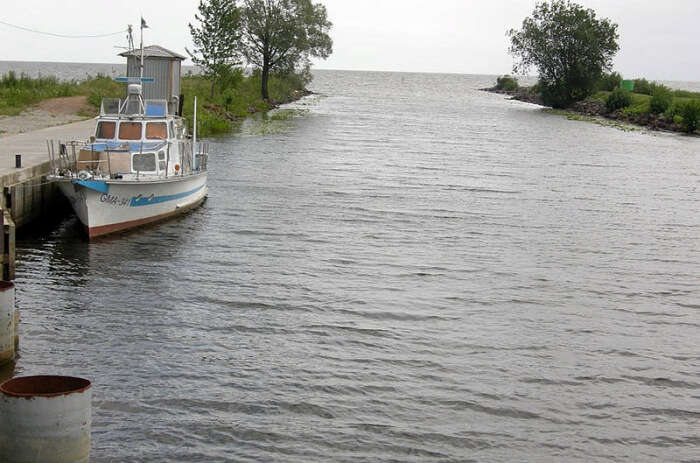
One of the largest lakes in Western Europe, Peipus is located on the border between Russia and Estonia. The abundance of fishes and wide country roads make this lake a popular holiday destination among locals and foreigners alike. You can explore mansions, traditional markets, lighthouses, and traditional cottages here. It is fairly clean. You can stop by here while you’re visiting Estonia with your family and friends to a picnic by the lake.
Suggested Read: 17 Fascinating Things To Do In Estonia For An Extraordinary Trip
12. Matsalu National Park
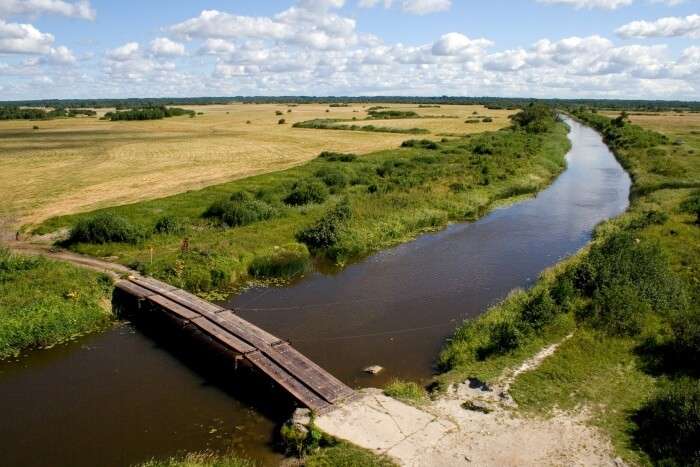
Matsalu National Park is located in the key part of the East Atlantic Flyway. This is a 48,610-hectare nature park created to preserve a plethora of migrating, nesting, and molting birds. It houses a number of highly endangered species, like the white-tailed eagle. Matsalu is famous among bird watchers. All nature lovers must stop by here. This experience will last with you for a lifetime.
Further Read: 31 Festivals In Europe That Will Up The Fun Factor Of Your Euro Tour
Well, to conclude, we should look at Estonia more than just a country that barely exists in the European Union. There is so much history that resides in this place, which compels a die-hard history lover to come here and relive the beauty of it. Also, there are many good places to visit in Estonia. If you are looking for a new place, this is it. So, plan a trip to Europe , visit Estonia and indulge in the fun!
Disclaimer: TravelTriangle claims no credit for images featured on our blog site unless otherwise noted. All visual content is copyrighted to its respectful owners. We try to link back to original sources whenever possible. If you own the rights to any of the images, and do not wish them to appear on TravelTriangle, please contact us and they will be promptly removed. We believe in providing proper attribution to the original author, artist or photographer.
Please Note: Any information published by TravelTriangle in any form of content is not intended to be a substitute for any kind of medical advice, and one must not take any action before consulting a professional medical expert of their own choice.
Frequently Asked Questions About Places To Visit In Estonia
Which is the famous food of Estonia?
Räim is touted as the most famous traditional dish of Estonia. Some other delicacies that one must try include Sült, Rosolje, Mulgikapsad, Lillkapsas Juustukastmes, and Kruubipuder.
What is Estonia famous for?
Estonia is known for its wonderfully preserved Medieval Architectures which has earned itself the title of UNESCO World Heritage Sites. Two such locations are the city of Tallinn and the Struve Geodetic Arc.
Can I visit Estonia during the current Covid situation?
Yes, you can now plan a visit to Estonia. To ensure a safe trip, adhere to the Government protocols, maintain required social distance, keep wearing a mask when in public, and keep sanitizing your hands at certain intervals.
Which are the best places to visit in Estonia?
The top-rated tourist attractions in Estonia are: 1. Tallinn 2. Lahemaa National Park 3. Saaremaa 4. Tartu 5. Narva Castle 6. Parnu 7. Rakvere Castle 8. Hiiumaa 9. Soomaa National Park 10. Viljandi
Which is the best time to visit Estonia?
The summer months of May to late August is the best time to visit Estonia. These dry and warm months are the best time to enjoy the Baltic beaches and inland lakes.
Is Estonia safe for tourists?
Estonia is quite safe for tourists. It has very low crime rates, and though there are areas to avoid, pickpockets, mugging or other types of assault are not common. However, the capital city of Tallinn can get a bit dangerous, like any other major city.
What is there to do in Estonia?
Some of the amazing things to do in Estonia are: 1. Explore the Karula National Park 2. Watch a puppet show at the NUKU Theater 3. Enjoy a relaxing day at the Parnu Beach 4. Enjoy birdwatching at Matsalu National Park 5. Enjoy the scenic landscape around Jägala Waterfall 6. Explore the Alexander Nevsky Cathedral
Which is the best area to stay in Estonia?
The best areas to stay in Tallinn, the capital of Estonia are the old town and the city center. If you are coming to Tallinn by ferry, these two areas are just a short walk from the port.
Are there Beaches in Estonia?
Yes, you can find a number of stunning Estonian Beaches. Some of the best ones include Parnu Beach, Pirita Beach, Mandjala Beach, Paralepa Beach, and Lake Tamula Beach.
Looking To Book An International Holiday?
Book memorable holidays on TravelTriangle with 650+ verified travel agents for 65+ domestic and international destinations.

Trip to Sri Lanka at Rs 13,500/-
Plan Your Vacation Today!

Trip to Singapore at Rs 20,499/-
Get Quotes From Local Experts

Mauritius Holiday Starting at Rs 65,000/-
Talk to Our Experts Today

Maldives Honeymoon Trip at Rs 39,800/-
Pay with easy EMI Option

Europe Trip at Rs 89,999/-
All Inclusive Deals

Vacation in Dubai at Rs 27,499/-

Hong Kong Holiday at Rs 24,999/-
Money Safe Guarantee

Thailand Holiday at Rs 7,999/-
Flights Excluded
People Also Read
Places To Visit In Latvia Places To Visit In Poland Places To Visit In Cyprus
Recent Posts

Explore Masroor Rock Cut Temple For A Spiritual Venture

Explore The Gaiety Heritage Cultural Complex A Vintage Theatre

Discover The Pristine Beauty Of Kareri Lake

A Trip To Indrahar Pass For A Coastal Getaway
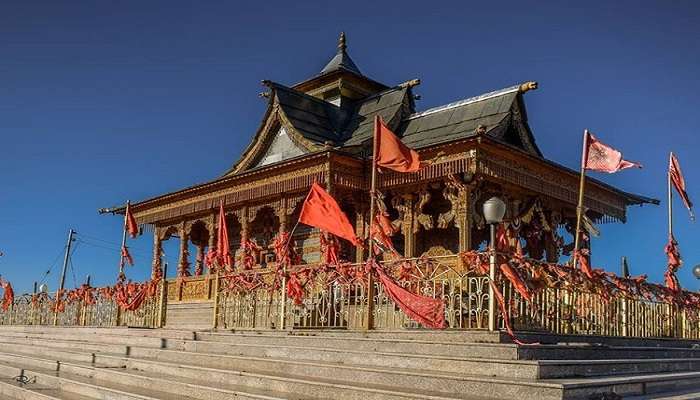
An Unforgettable Spiritual Destination Of Hatu Mata Temple
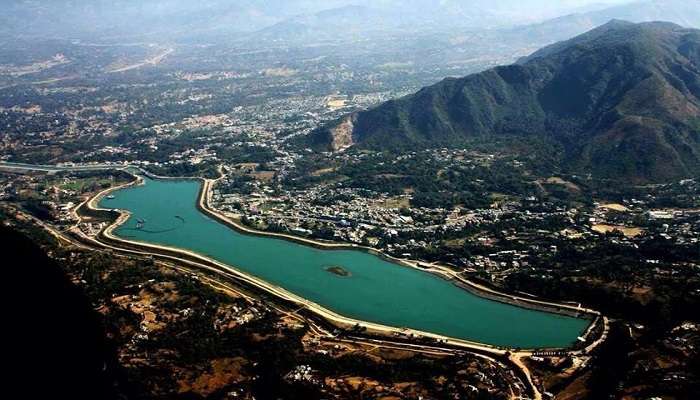
Sundar Nagar Is A Hidden Gem In Himachal Pradesh
Trending Blogs

20 Mysterious Places In India To Visit In 2024 More Bizarre Than The Bermuda Triangle

10 Scariest Roads In India That Are A Driver’s Nightmare

101 Places To Visit In India Before You Turn 30 in 2024

35 Exotic Places To Visit In December In India 2024 To Enjoy A Surreal Vacation

60 Best Honeymoon Destinations In India In 2024

95 Best Honeymoon Destinations In The World In 2023 For A Romantic Escape!
Best Places To Visit In India By Month
Best places to visit outside india by month.
- TravelTriangle
- International
- Places To Visit »
- Tour Packages
- Honeymoon Packages
- Family Packages
- Budget Tour Packages
- Luxury Tour Packages
- Adventure Tour Packages
- Group Tour Packages
- Maldives Tour Packages
- Bali Tour Packages
- Dubai Tour Packages
- Singapore Tour Packages
- Thailand Tour Packages
- Europe Tour Packages
- Sri Lanka Tour Packages
- Tour Packages From Delhi
- Tour Packages From Mumbai
- Tour Packages From Bangalore
- Tour Packages From Chennai
- Tour Packages From Kolkata
- Tour Packages From Hyderabad
- Tour Packages From Ahmedabad
- Thailand Tourism
- Bali Tourism
- Singapore Tourism
- Maldives Tourism
- Mauritius Tourism
- Dubai Tourism
- Europe Tourism
- Hotels in Thailand
- Hotels in Maldives
- Hotels in Mauritius
- Hotels in Bali
- Hotels in Dubai
- Hotels in Singapore
- Hotels in Sri Lanka
20 Best Places to Visit in Estonia
- Pinterest 2.9K

Interested to see the Baltic countries? Why not start at the very north! We compiled the best places to visit in Estonia you must not miss!
Estonia, located in Northern Europe, is a beautiful and historic country with a rich cultural heritage. It offers many tourist attractions, making it an ideal place to visit. One of the must-visit places in Estonia is Toompea Hill, which holds historical and cultural significance.
Situated in Tallinn’s Old Town, this hill offers breathtaking views of the city and the Baltic Sea. Toompea Hill has been a focal point for centuries, witnessing numerous historical events and preserving its architectural wonders.
The hill is home to the Estonian Parliament and several other important government buildings. As you explore this area, you’ll notice the blend of different architectural styles from various periods.
This adds a distinct cultural flavor to the area and further enriches Estonia’s diverse heritage. Southern Estonia also boasts some beautiful places that are worth visiting.
Tartu, the second-largest city in Estonia, stands tall as a cultural hub with its vibrant university life and renowned Estonian National Museum. This museum showcases fascinating exhibits that delve into Estonia’s history and traditions.
For maritime enthusiasts, Seaplane Harbour should be among their top choices. Located in Tallinn on the northern coast, it’s an impressive seaplane hangar turned museum that showcases Estonia’s maritime history through interactive exhibits and displays.
Apart from these prominent attractions mentioned above, rural Estonia hides many other places waiting to be discovered by intrepid travelers. The countryside landscapes are picturesque, with vast open fields dotted with charming wooden farmhouses and barns painted in traditional shades of red.
Whether you’re exploring Toompea Hill with its captivating views or immersing yourself in Tartu’s cultural scene at the Estonian National Museum – there is something for everyone when it comes to exploring beautiful places in Estonia. From the maritime allure of Seaplane Harbour to the rustic charm of rural Estonia, this country has many attractions that will leave a lasting impression on any visitor.
Follow me on Instagram , where you’ll see more personal tips about living in Finland from a local resident chef and content creator 🍃🍃🍃
📚 Do you want to learn the Finnish language for FREE ? Check out Spark Your Finnish course! 🇫🇮 How about diving into Finland’s culture? Here’s another FREE culture class to learn how to connect with Finns ❗️ Be insured before your trip to Finland and get a SafetyWing FREE insurance quote 📚 Read our post about why you should always have insurance ✈️ Find out how to find cheap flights to Finland using Skyscanner or find deals now
Table of Contents

Tartu, the second-largest city in Estonia, is a vibrant and culturally rich destination that should be noticed on your visit to Estonia. Along the Emajõgi River’s banks, Tartu offers a unique blend of historical charm, academic excellence, and natural beauty.
As you explore Tartu, visit its most famous landmark – the University of Tartu. This prestigious institution was founded in 1632 and has significantly shaped the city’s identity.
Take a leisurely stroll through its picturesque campus with beautiful buildings and tranquil gardens. Enjoy visiting the university museum showcasing fascinating Estonian history and culture exhibits.
In addition to its academic prominence, Tartu boasts an enchanting old town that transports visitors back in time. Walk along narrow cobblestone streets with charming medieval buildings adorned with colorful facades.
The Town Hall Square is a focal point of activity with its bustling cafes and restaurants where you can sample traditional Estonian cuisine while soaking up the lively atmosphere. For art enthusiasts, visiting the Tartu Art Museum is an absolute must.
This museum houses an impressive collection of Estonian art from different periods, offering insight into the country’s artistic heritage. From classical paintings to contemporary installations, there is something for every taste.
Nature lovers will find respite in Toomemägi Park, atop a hill overlooking the city. This peaceful oasis features lush greenery, winding paths, and several historical monuments, such as ruined cathedral walls and observation towers.
It’s an ideal spot for picnics or simply taking in panoramic views of Tartu. If you’re interested in maritime history or simply want to experience something extraordinary during your trip to Estonia, consider visiting the Estonian Maritime Museum’s branch located at Patarei Sea Fortress-Prison in Tallinn or Suur Tõll submarine at Seaplane Harbour (Lennusadam).
These unique attractions provide a glimpse into Estonia’s seafaring past, where you can explore old prison cells, climb aboard a submarine, or learn about maritime traditions. Tartu offers an array of experiences for travelers seeking a combination of history, culture, and natural beauty.
Whether captivated by its medieval architecture or intrigued by its academic legacy, this charming city has something for everyone. So make sure to include Tartu in your itinerary when planning your visit to Estonia, and allow yourself to be enchanted by its allure.

Pärnu, often referred to as the “ summer capital” of Estonia, is a charming coastal city in the heart of the country. Known for its beautiful sandy beaches and vibrant atmosphere, it is one of the best places to visit when exploring the cities in Estonia. The main attraction in Pärnu is its stunning beach, stretching along the Baltic coast for about 4 kilometers.
With soft golden sand and crystal clear waters, it has earned a reputation as one of Estonia’s most beloved summer destinations. Whether you’re looking to soak up the sun, take a refreshing swim, or indulge in beachside activities like volleyball or frisbee, Pärnu’s beach offers something for everyone.
Aside from its picturesque coastline, Pärnu also boasts a rich historical heritage. The city has been an important trading hub since ancient times. It bears witness to various architectural styles throughout its streets.
Strolling through Old Town will transport you back in time with its well-preserved wooden houses and cobblestone streets. Don’t miss out on visiting St. Elizabeth’s Church with its impressive spires or exploring Tallinn Gate—the only remaining gate from the medieval city walls.
If you’re interested in immersing yourself in nature during your visit to Pärnu, Soomaa National Park is just a short trip away. This vast wilderness covers nearly 400 square kilometers. It is famous for its large floods during springtime when rivers overflow their banks.
Visitors can explore this unique landscape by canoeing or hiking through pristine forests and wetlands while encountering various wildlife species. For those seeking cultural experiences, Pärnu offers several museums and galleries worth exploring.
The Estonian Museum of New Art showcases contemporary works by local artists alongside international exhibitions—an absolute treat for art enthusiasts. Additionally, The Museum of Pärnu introduces visitors to the city’s history through interactive displays that provide insight into life during different periods.
Don’t forget to indulge in the delectable cuisine that Pärnu has to offer. The city is known for its vibrant dining scene, with numerous restaurants serving traditional Estonian dishes and international flavors.
Be sure to try the local specialties such as smoked fish, black bread, and kama—a traditional Estonian dessert made of roasted grains. Pärnu is undoubtedly one of Estonia’s amazing places that should be on every traveler’s list.
Its stunning beaches , rich history, natural wonders like Soomaa National Park, cultural attractions such as museums and galleries, and delicious cuisine offer diverse experiences. Whether you’re seeking relaxation by the sea or eager to delve into Estonia’s past and present, Pärnu has something for everyone.

Located off the western coast of Estonia, Saaremaa is a captivating island you want to visit when exploring this beautiful country. Known for its picturesque landscapes, rich history, and unique culture, Saaremaa offers a truly enchanting experience for travelers. With plenty of attractions and activities, let’s dive into what makes Saaremaa a must-visit destination.
One of the highlights of Saaremaa is its remarkable nature. The island boasts an abundance of lush forests, pristine beaches, and tranquil lakes that are perfect for leisurely strolls or picnics with loved ones.
Hiiumaa, another nearby island often referred to as Saaremaa’s sister island, is easily accessible from here and well worth visiting. Saaremaa also houses the UNESCO-listed Kuressaare Castle.
Built-in the 13th century, this medieval fortress is one of Estonia’s oldest and best-preserved castles . It offers visitors a glimpse into Estonia’s rich history while exploring its ancient walls and towers.
The castle also hosts various cultural events throughout the year. Aside from historical landmarks, Saaremaa is known for its charming coastal villages, such as Kuressaare Old Town and Panga Village.
Kuressaare Old Town exudes a quaint atmosphere with its narrow cobblestone streets lined with colorful houses and delightful cafes. Panga Village is renowned for its stunning cliffs that offer breathtaking views over the Baltic Sea.
If you’re seeking some adrenaline-pumping activities on your trip to Saaremaa, head over to Angla Windmill Hill, where you can witness traditional windmills dating back to the 19th century. You can even try windmill climbing or learn about traditional Estonian handicrafts at the on-site museum.
A journey to Saaremaa would only be complete with visiting one of its iconic lighthouses. The Sõrve Lighthouse, located on the island’s southern tip, is among Estonia’s best places to see.
Standing tall and proud at 52 meters, this maritime beacon offers panoramic views of the surrounding area. It serves as a reminder of Saaremaa’s rich seafaring heritage. Saaremaa is a hidden gem that should definitely be on your list of places to visit in Estonia.
With its natural beauty, historic landmarks, and unique cultural experiences, this island offers something for everyone. From exploring ancient castles and charming villages to immersing yourself in breathtaking landscapes and traditional activities, Saaremaa will leave you with lasting memories and a deep appreciation for this remarkable corner of Estonia.

Hiiumaa is a hidden gem in Estonia that is definitely worth a visit. Located in the Baltic Sea, this island offers a unique blend of stunning landscapes, rich history, and a laid-back island vibe.
It’s a great place to visit if you want to escape the hustle and bustle of city life and immerse yourself in nature. One of the main attractions in Hiiumaa is the Kõpu Lighthouse.
Standing tall at 36 meters, it is one of Estonia’s oldest lighthouses and offers breathtaking views from its observation deck. The lighthouse has an interesting history dating back to 1531 when it was first mentioned in historical records.
If you’re interested in history, visit the Tahkuna Peninsula, where you’ll find remnants of old military structures. These bunkers were used during World War II to defend against potential enemy attacks.
Exploring these bunkers gives you a glimpse into life during those turbulent times. For nature enthusiasts, Hiiumaa offers several stunning beaches, such as Kärdla Beach and Ristna Beach, where you can relax on golden sands and dip in the refreshing waters of the Baltic Sea.
The island also boasts beautiful forests and walking trails, perfect for hiking or biking. When visiting Hiiumaa, explore its charming villages, such as Käina and Kassari.
These villages are known for their traditional wooden houses that showcase authentic Estonian architecture. You can also visit local artisans who create handmade crafts using traditional techniques.
Try local delicacies such as smoked fish from Hiiumaa’s coastal waters or fresh honey produced by local beekeepers to satisfy your taste buds. Cozy cafes and restaurants allow you to enjoy traditional Estonian cuisine with locally sourced ingredients.
Hiiumaa is one of Estonia’s hidden treasures waiting to be discovered. Its stunning landscapes, rich history, and charming villages offer a unique experience for travelers seeking an off-the-beaten-path adventure.
Whether you are interested in nature, history, or simply unwinding on beautiful beaches, Hiiumaa has something for everyone. So pack your bags and embark on a memorable trip to this enchanting island in southern Estonia.

Nestled on the eastern border of Estonia, Narva is a hidden gem often overlooked by travelers visiting the country. Despite being overshadowed by its more popular counterparts like Tallinn and Tartu, Narva has unique charm and historical significance that makes it worth visiting. Narva Castle is one of the main attractions in Narva, which stands proudly on the banks of the Narva River.
Built-in the 13th century, this medieval fortress has witnessed countless battles and sieges. As you explore its ancient walls and towers, you can’t help but feel transported back in time.
The castle also offers stunning panoramic views of the Russian side of the river and Estonia, allowing visitors to appreciate the city’s cross-cultural influences. Another must-visit spot in Narva is Hermann Castle, located just across from Narva Castle on the Russian side.
This grand fortress is one of Estonia’s oldest lighthouses. It serves as a symbol of both strength and cooperation between two neighboring nations. Standing atop Hermann Castle’s tower provides a breathtaking view of the Baltic Sea coastline in all its natural beauty.
For those seeking to immerse themselves in rural Estonia, I recommend a trip to Kreenholm Island. This picturesque little island is home to the Kreenholm Factory Complex, once one of Europe’s largest textile mills in operation during the 19th century.
It has been transformed into a cultural hub that houses art studios, galleries, workshops, and even a museum showcasing the island’s industrial heritage. History enthusiasts will also find plenty to explore in Narva’s Old Town district.
Strolling through its narrow cobblestone streets feels like stepping into a time capsule filled with beautiful, historic buildings that have managed to withstand centuries of change. The Alexander Church is particularly striking with its eye-catching blue façade and intricate architectural details.
Last, nature lovers can escape the buzz of the city by visiting the Narva River Promenade. This scenic walkway stretches along the riverbank, offering mesmerizing views of the flowing water and lush greenery.
Take a leisurely stroll or rent a bike to fully appreciate this delightful spot, especially during sunset when the sky paints a breathtaking canvas of colors. While Narva may not feature prominently on everyone’s list of places to visit in Estonia, it is undoubtedly a place worth exploring.
From its medieval castles and historic landmarks to its natural beauty and cross-cultural influence, Narva has something to offer every type of traveler. So, if you find yourself in Northern Europe craving an off-the-beaten-path experience, include this charming city in your itinerary.
Are you planning your travels? Here’re my top travel resources!
I’m a serial planner both in life and in travel – I have bucket lists, things to do, see, and everything. So, I always love when my life is sorted easily using tools and resources that would make my general planning a little smoother and easier. Therefore, in my many years of traveling the world, I’ve seen myself returning to these travel resources repeatedly. And here I am, sharing my tips to make your life easy and breezy so you can stress less, travel heaps, and focus on the fun part of travel!
- Booking.com – I book all my hotels through this website and don’t honestly use anything else. They always have the best prices, in my opinion.
- Airbnb – If I’m traveling long-term to one destination, I book my flats through Airbnb.
- Skyscanner – The best place to find cheap flights on flexible dates. I use this a lot to score cheap flights within Europe!
- SafetyWing – Always travel insured! Never leave your home country without one. It is worth the extra money, I promise you!
- GetYourGuide – Hands-down, the best place to find cool and unique tours if you don’t feel like winging it, and go straight to a local expert. I use this a lot in new destinations to get acquainted with the area!
- My Pretty Wild World Travel Diary (coming soon) – A book you can write down your travel plans, create itineraries, track down your budget, and dot down memories along the way! A handy book you can keep and read later to revisit memory lane.
- Pretty Wild World Travel Planning Printables (coming soon) – Are you a nut like me when it comes to planning? Yes? Good. My travel planning resource in one zip file is an easy-to-use printable planner that comes with tips that helps you plan your travels during the planning stage, a pre-flight checklist, an itinerary planner, and so on.

Nestled on Estonia’s western coast lies the picturesque and charming town of Haapsalu. This hidden gem is a must-visit destination in Estonia, offering a unique blend of natural beauty, rich history, and captivating architecture.
Known for its stunning seaside location and historic charm, Haapsalu is an idyllic getaway that will leave you enchanted. As you make your way to Haapsalu, you’ll be greeted by the sight of the famous Haapsalu Castle.
This medieval fortress stands proudly overlooking the town and its surrounding lush greenery. Stepping into the castle grounds feels like stepping back as you explore its ancient walls and towers that once served as a stronghold against invaders.
A visit to Haapsalu would only be complete with experiencing one of its most iconic landmarks – the hauntingly beautiful Railway Station. This ornate wooden station transports you to a bygone era with its intricate detailing and old-world charm.
As you stroll along the platform or sit on one of the benches, you can almost imagine yourself awaiting a train bound for distant lands. Haapsalu is also home to numerous historic spas that have long been renowned for their healing powers.
Embrace relaxation at one of these rejuvenating havens as you indulge in soothing treatments or dip in mineral-rich waters. These spas offer an oasis of tranquility where visitors can unwind amidst elegant surroundings while enjoying stunning views of the Baltic Sea.
For those with an appetite for cultural exploration, Haapsalu boasts several museums showcasing its fascinating history and artistry. The Museum of Coastal Swedes provides insight into the region’s Swedish heritage. At the same time, the Ilon’s Wonderland Museum offers delightful exhibits dedicated to children’s book author Astrid Lindgren.
Take some time to wander through these captivating venues; they will spark your curiosity and deepen your appreciation for Estonian culture. As evening descends upon Haapsalu, be sure to catch a glimpse of its breathtaking sunsets.
Head down to the waterfront and watch the sky ablaze with orange, pink, and purple hues as the sun dips below the horizon. The tranquil atmosphere and awe-inspiring views make for an unforgettable experience, creating lasting memories of your visit to Haapsalu.
Haapsalu is just one of the many amazing places to visit in Estonia. This charming coastal town offers a captivating blend of historic landmarks, natural beauty, and cultural experiences that enchant you.
Whether exploring its medieval castle, indulging in spa treatments, or immersing yourself in its rich history through museums, Haapsalu has something for every traveler seeking an authentic Estonian experience. So pack your bags and embark on an unforgettable journey to this hidden gem in northern Europe – you won’t be disappointed!

Rakvere is a charming northern Estonia town known for its rich history and captivating attractions. Situated about 100 kilometers east of Tallinn, the city’s heart is a delightful mix of old-world charm and modern conveniences.
Many places to visit in Rakvere will leave you with lasting memories. One of the must-see attractions in Rakvere is the imposing Hermann Castle.
This medieval fortress stands proudly on a hill overlooking the city and offers panoramic views of the surrounding landscape. Inside, you can explore fascinating exhibitions that showcase the castle’s history and learn about its role as a stronghold throughout different periods.
The castle also hosts various events, such as medieval festivals, bringing its colorful past to life. Head to Rakvere’s beautiful parks to embrace nature’s tranquility.
The central park is located near the castle and is ideal for leisurely strolls or picnics. As you wander through its lush greenery, you’ll encounter charming pathways, serene ponds, and well-maintained gardens.
It’s truly a peaceful oasis amidst the bustling city. For those interested in exploring Estonian history further, visit Rakvere’s Tarvas Statue – an iconic symbol of the town’s heritage.
This bronze sculpture represents an aurochs (an extinct type of wild cattle). It serves as a tribute to ancient Estonian mythology. Take time to admire this striking monument while learning about its significance from nearby information boards.
Additionally, Rakvere offers abundant opportunities for cultural immersion through its museums and galleries. Visit Eesti Tuletornide Muuseum (Estonian Lighthouse Museum) to delve into Estonia’s maritime heritage or explore Võhmuta Manor Museum, which displays artifacts showcasing rural life in bygone eras.
To relax after exploring all these captivating sights, treat yourself to some local cuisine at one of Rakvere’s cozy restaurants or cafes. Indulge in traditional Estonian dishes like sült (jellied meat), verivorst (blood sausage), or kama (a mixture of crushed grains).
Remember to savor a glass of locally brewed beer or sip on some Vana Tallinn liqueur, a staple in Estonian culture. Rakvere is a hidden gem among the many amazing places to see in Estonia.
From its medieval castle to its picturesque parks and cultural landmarks, this town offers an immersive experience of Estonia’s rich history and vibrant culture. So, if you’re planning a trip to this Baltic Sea country, make sure Rakvere is on your itinerary for an unforgettable adventure.
Lahemaa National Park

Lahemaa National Park is a gem nestled in the beautiful country of Estonia. This park covers around 725 km² and is a nature lover’s paradise with diverse landscapes and rich cultural heritage.
It is no wonder that Lahemaa National Park is often referred to as the “jewel of the Baltic.” One of the highlights of visiting Lahemaa National Park is its picturesque coastline along the Gulf of Riga .
The park boasts an impressive stretch of sandy beaches, rocky cliffs, and charming fishing villages that glimpse traditional Estonian coastal life. Strolling along the shoreline, you can take in the fresh sea breeze and soak up breathtaking views that are truly unrivaled.
For history buffs and culture enthusiasts, Lahemaa National Park also has much to offer. The park is home to several manor houses that date back to the 13th century when Estonia was part of the Teutonic Knights’ Livonian Order.
These majestic estates, such as Palmse Manor and Sagadi Manor, provide a fascinating insight into what life was like for Estonia’s noble families throughout history. Exploring deeper into the park’s lush forests and meandering trails will lead you to hidden lakes and pristine wetlands teeming with wildlife.
Keep an eye out for native species like moose, lynx, bears, and various birds while immersing yourself in Estonian nature at its finest. One must-visit attraction within Lahemaa National Park is Viru Bog — an enchanting natural wonderland filled with wooden boardwalks winding through marshy terrain blanketed by vibrant green mosses and colorful wildflowers.
The ethereal atmosphere created by the mist rising from bog pools makes Viru Bog an otherworldly experience you won’t forget. To fully appreciate all that Lahemaa National Park offers, consider embarking on one of its many hiking trails or cycling routes.
These paths will take you through dense forests, past scenic lakes, and charming villages where you can stop and interact with friendly locals, discovering firsthand the warm Estonian hospitality. Lahemaa National Park is undeniably one of Estonia’s greatest treasures.
With its stunning coastal landscapes, historic manor houses, diverse wildlife, and captivating natural wonders like Viru Bog, this park is an absolute must-visit for anyone planning a trip to Estonia. So next time you find yourself in this Baltic beauty of a country, be sure to carve out some time to explore Lahemaa National Park and experience the magic it has in store.

Kuressaare, located on Saaremaa Island, is a charming town that offers visitors a unique blend of history, natural beauty, and relaxation. As you explore the streets of Kuressaare, you’ll feel transported back in time with its well-preserved medieval castle and picturesque surroundings. One of the main highlights of Kuressaare is its magnificent castle.
The Kuressaare Castle stands proudly in the heart of the town and is one of Estonia’s best-preserved medieval fortifications. Take a leisurely stroll around the castle walls and imagine life centuries ago.
You can visit the Saaremaa Museum inside the castle to learn more about the island’s fascinating history. If you want to unwind and enjoy natural beauty, head to Spa Hotel Meri.
This spa resort offers treatments and therapies to rejuvenate your body and mind. After a relaxing massage or a soak in one of their mineral water pools, take a peaceful walk along Kuressaare’s coastal promenade and enjoy breathtaking sea views.
For those who appreciate nature, visit Kaali Meteorite Crater Field. This unique natural wonder consists of several meteorite craters formed thousands of years ago.
Explore the walking trails surrounding it and marvel at this geological phenomenon. Another attraction worth visiting is Panga Cliff.
Located just outside Kuressaare, Panga Cliff offers stunning panoramic views over the Baltic Sea. As you stand atop this steep cliffside, let yourself be mesmerized by nature’s grandeur as waves crash against the rocks below.
After exploring all that Kuressaare offers, indulge in some delicious local cuisine. Try traditional Estonian dishes such as mulgipuder (potato porridge) or sült (head cheese).
Be sure to pair your meal with a local craft beer or a shot of Vana Tallinn, a popular Estonian liqueur. Kuressaare is a great place to visit for its historical and natural attractions and its peaceful and laid-back atmosphere.
Whether you’re seeking relaxation or adventure, this charming town on Saaremaa Island has something to offer everyone. So, add Kuressaare to your list of must-visit places in Estonia and discover the hidden gems this coastal town has in store for you.
Otepää
Otepää, a small town in southern Estonia, is often referred to as the “ winter capital” of the country. Its picturesque landscape and abundance of outdoor activities attract locals and tourists throughout the year.
If you’re a nature lover or an adventure seeker, Otepää has plenty to offer. One of the highlights of Otepää is its stunning natural surroundings.
The town is surrounded by forests and picturesque hills, making it an ideal destination for hiking and biking enthusiasts. The Pühajärve Lake, located just outside the town center, offers a tranquil setting for leisurely walks and picnics.
During winter, the region transforms into a winter wonderland with opportunities for skiing and snowboarding. Otepää has its own share of attractions for those interested in history and culture.
One must-visit site is Tehvandi Sports Center, which hosted several events during the 2010 Winter Olympics. Here, you can try your hand at various winter sports or simply enjoy watching professionals in action.
Additionally, Otepää boasts one of Estonia’s oldest churches – St Mary’s Church – which dates back to the 13th century. This historical gem showcases stunning medieval architecture and provides insights into Estonia’s rich heritage.
Food lovers will also find delight in Otepää’s culinary scene. The town offers several cozy cafes and restaurants where you can sample traditional Estonian dishes made from locally sourced ingredients.
Don’t miss out on hearty Estonian soups like rosolje (beetroot salad) or verivorst (blood sausage) – they will satisfy your taste buds! When planning a trip to Estonia, visiting Otepää is highly recommended for those seeking an authentic experience beyond Tallinn’s old town or coastal destinations along the Baltic Sea.
With its captivating natural beauty, historical sites, and delicious cuisine, Otepää stands out as one of Estonia’s best places to explore. So whether you’re an adrenaline junkie looking for adventure or a history buff craving a glimpse of Estonia’s past, Otepää should definitely be on your list of must-visit destinations.

Viljandi is a charming town located in the southern part of Estonia. Often overshadowed by bustling cities like Tallinn and Tartu, Viljandi is a hidden gem that deserves more recognition.
With its rich history, picturesque landscapes, and vibrant cultural scene, this town offers travelers a unique and memorable experience. One of the highlights of visiting Viljandi is exploring its historical sites.
The ruins of Viljandi Castle provide a stunning view of the city and offer insights into what life was like during medieval times. As you wander around the castle grounds, you can imagine knights in shining armor patrolling the walls and hear echoes of ancient tales whispered through the centuries.
In addition to its historical charm, Viljandi also boasts numerous cultural events throughout the year. The Viljandi Folk Music Festival, held annually in July , attracts musicians from all over Estonia and beyond.
This event brings the town to life with lively performances on street corners and in cozy cafes, creating an unforgettable atmosphere. Nature enthusiasts will find plenty to explore in Viljandi as well.
The nearby Soomaa National Park offers breathtaking landscapes with pristine forests, winding rivers, and bog areas that transform into magical wonderlands during different seasons. Hike along nature trails or hop on a canoe to immerse yourself in this natural paradise.
If you’re looking for relaxation or family fun, visit Viljandi’s indoor water park – Aqua Spa. With multiple pools, slides, saunas, and jacuzzis, it’s a perfect place to unwind after exploring all Viljandi offers.
You can also take advantage of spa treatments available at Aqua Spa for an extra dose of pampering. But certainly not least on your list should be enjoying local cuisine at one of Viljandi’s cozy restaurants or cafes.
Indulge in traditional Estonian dishes such as herring salad or blood sausage, or try international flavors that have found their way into the town’s culinary scene. Viljandi offers a range of dining options to suit various tastes and budgets.
Viljandi is a place to visit in Estonia that should be noticed. While it may not be as well-known as the capital or the summer capital, this charming town has unique charm and attractions.
From exploring historical sites like Viljandi Castle to immersing yourself in nature at Soomaa National Park, there is something for everyone in Viljandi. So, if you plan a trip to Estonia, include this underrated gem on your itinerary.
Hold up! Have you thought about the importance of travel insurance?
Remember this: anything can happen. Travel is fun, but your health is more important; thus, I always, always, always recommend getting insured during the duration of your trip. I have benefitted from having one multiple times, and it has been covered for thousands of euros!
The latest one is not necessarily “health” related – it was during the peak of the unspeakable terrible C that consumed the world. I was living in Vietnam when I received an email from SafetyWing (my travel insurance) that if I want they’ll fly be back home to Finland as the world goes through a global emergency alert. I flew back fully covered, and dealing with SafetyWing was a breeze despite the roar of people in contact with them trying to get back home.
I can’t highly recommend them enough. Otherwise, I rarely get sick; hence I don’t always need to head to a hospital, but knowing that I have travel insurance makes me feel safe at the very least.
Read my post about why you should get travel insurance for more information. Otherwise, you can get a free quote from SafetyWing – they’re the best, in my opinion.
Alatskivi Castle

When exploring the charming countryside of Estonia, a visit to Alatskivi Castle is an absolute must. Nestled amidst serene surroundings in southern Estonia, this majestic castle returns you to a bygone era of grandeur and opulence.
Built in the 19th century, Alatskivi Castle is a striking example of neo-Gothic architecture. It offers a fascinating glimpse into the country’s rich history. As you approach the castle, you are immediately greeted by its imposing presence.
The intricate detailing on its exterior walls, with turrets and impressive towers, will leave you awestruck. Once inside, you’ll be transported to a world where nobility reigned supreme.
The castle boasts beautifully furnished rooms that reflect the elegance and sophistication of its former occupants. One of the highlights of Alatskivi Castle is the stunning park surrounding it.
Spread across vast acres of land, this park offers breathtaking views of the castle and the picturesque Estonian countryside beyond. Whether strolling through manicured lawns or wandering along meandering pathways shaded by ancient trees, there’s no denying this park’s tranquility and beauty.
Within Alatskivi Castle grounds lies an enchanting lake where visitors can enjoy leisurely boat rides or simply relax on its shores while enjoying the peaceful ambiance. This serene setting provides an ideal backdrop for capturing memorable photographs or immersing yourself in nature’s embrace.
For history enthusiasts, a visit to Alatskivi Castle is particularly rewarding as it houses an impressive museum dedicated to showcasing Estonia’s rich heritage. Here, you can learn about life during different periods and understand how people lived centuries ago.
This museum offers a comprehensive understanding of Estonia’s past, from ancient artifacts to historical documents and interactive displays. Alatskivi Castle is one of Estonia’s hidden gems that should be noticed during your trip to this Baltic nation.
Its stunning architecture, picturesque park, and captivating history make it a worthy addition to any itinerary. So, if you find yourself in southern Estonia, take the time to visit this remarkable castle and indulge in its timeless beauty.
Kadriorg Palace and Park

Kadriorg Palace and Park is undoubtedly one of Estonia’s most beautiful and historic places to visit. Located in the capital city of Tallinn, this stunning complex is a must-see for anyone exploring the country. The palace was built by Peter the Great in the early 18th century, and its grand architecture is truly awe-inspiring.
As you step into Kadriorg Palace, you’ll be transported back to an era of opulence and grandeur. The interior is adorned with exquisite artwork, intricate sculptures, and luxurious furnishings, all meticulously preserved to showcase its former glory.
Walking through its halls feels like stepping into Estonia’s rich history. But it’s not just the palace that makes this place special; it’s also the surrounding park.
Spread over 70 hectares, Kadriorg Park is a tranquil oasis filled with picturesque gardens, meandering paths, and charming fountains. It offers a perfect escape from the bustling city life. It is an excellent spot for a relaxing stroll or a romantic picnic amidst nature’s beauty.
One of the highlights of Kadriorg Park is definitely its stunning Swan Pond. This idyllic water body is home to graceful swans gliding across its surface, creating a serene atmosphere that soothes your soul.
Sitting by the pond and feeding these elegant creatures while enjoying the peaceful surroundings can be an incredibly calming experience. Another gem within this park is the Russalka Monument.
Standing tall at the edge of Tallinn Bay, this majestic sculpture represents souls lost at sea during shipwrecks. Not only does it carry immense historical significance, but it also offers breathtaking views of the Baltic Sea and Gulf of Riga.
If you love art or history, visit Kumu Art Museum, located within Kadriorg Park grounds. This contemporary art museum houses an impressive collection spanning several centuries. It showcases both local Estonian talent as well as international artists.
Exploring its galleries will undoubtedly leave you inspired and enriched by the artistic expression. Kadriorg Palace and Park is one of Estonia’s hidden gems that should be discovered and appreciated.
Whether you’re interested in history, art or simply seeking a peaceful escape amidst nature, this place offers it all. So make sure to include a visit to this remarkable destination when exploring the captivating beauty of Estonia.
Tuhala Witch’s Well (Tuhala Nõiakaev)

If you find yourself wandering through the enchanting landscapes of Estonia, a stop at Tuhala Witch’s Well should be on your list. This fascinating natural wonder is nestled in the heart of Tuhala, a small village located just 40 kilometers from Tallinn, the capital of Estonia. Tuhala Witch’s Well is one of those hidden gems that charms visitors with its mystical allure.
Legend has it that the well is connected to an underground river, which awakens during heavy rainstorms and causes water to gush out dramatically. This phenomenon creates a spectacle known as “witches’ whirlpools,” where water swirls around in mesmerizing patterns.
It’s truly a sight to behold! Visitors flock here to witness this unique display and marvel at nature’s power.
To get to Tuhala Witch’s Well, rent a car, drive from Tallinn, or take public transportation. The journey is an adventure as you go through Estonia’s picturesque countryside.
Imagine driving past rolling hills, dense forests, and quaint villages. It’s like stepping into a fairytale !
Upon arrival in Tuhala, an unassuming path will lead you to the well. As you approach it, you’ll notice its distinctive wooden cover adorned with intricate carvings that depict scenes from Estonian folklore.
It adds an extra touch of magic to this already mystical place. The best time to visit Tuhala Witch’s Well is during heavy rainfall when the underground river springs to life.
However, even if luck isn’t on your side weather-wise, don’t worry! The charm of this place transcends seasons and still captivates visitors with its tranquil surroundings.
Aside from witnessing the witches’ whirlpools at Tuhala Witch’s Well itself, many other places are worth exploring nearby. For instance, Lahemaa National Park—a true haven for nature lovers—is far away.
You can embark on scenic hikes, discover hidden waterfalls , and immerse yourself in the beauty of Estonia’s wilderness. Tuhala Witch’s Well is a must-visit attraction in Estonia that showcases the country’s captivating folklore and natural wonders.
Whether you’re a fan of mystical legends or simply appreciate the beauty of the natural world, this place will leave you spellbound. So make sure to include it in your itinerary when planning your journey through Estonia, and get ready to experience something truly magical!
Estonian Open Air Museum

Suppose you’re planning a trip to Estonia and looking for a unique experience. In that case, the Estonian Open Air Museum is a must-visit destination. Located in Tallinn, the capital of Estonia, this museum offers visitors a fascinating glimpse into the country’s rich cultural heritage. Situated on 72 hectares of beautiful coastal land by the Gulf of Riga, it is one of Northern Europe’s oldest and largest open-air museums.
As you enter the museum, you’ll be transported back to rural Estonia from centuries ago. The museum features over 80 buildings brought here from various regions across the country.
These traditional wooden houses, farms, mills, and other structures authentically represent Estonian village life. Walking through these historical structures gives visitors a truly immersive experience as they explore different eras and architectural styles.
The museum offers various activities and exhibits that showcase traditional Estonian crafts and customs. You can witness artisans demonstrating age-old techniques such as blacksmithing, weaving, pottery making, and woodworking.
It’s fascinating to watch these skilled craftsmen create beautiful handmade items right before your eyes. Additionally, there are numerous workshops where visitors can try their hand at these crafts under expert guidance.
One highlight of the Estonian Open Air Museum is its collection of traditional farm animals such as sheep, cows, horses, and chickens. These animals roam freely around their farmsteads just like they did in old times.
It’s delightful to see children interacting with these friendly creatures or even taking pony rides along designated paths within the museum grounds. Exploring the museum’s vast expanse can work up an appetite, but worry not – there’s also a cozy café serving traditional Estonian cuisine where you can take a break and indulge in local delicacies.
And if you’re visiting during summer months or on weekends throughout the year, make sure not to miss out on performances by folk dance groups that bring the vibrant Estonian culture to life. In addition to its cultural and historical significance, the Estonian Open Air Museum also offers breathtaking natural beauty.
The museum is surrounded by lush forests and has a stunning view of the city’s skyline in the distance. The coastal location provides a refreshing breeze from the Baltic Sea, making it ideal for a leisurely stroll or a picnic with family and friends.
Overall, the Estonian Open Air Museum is one of the top attractions in Estonia that shouldn’t be missed. It provides visitors with an immersive journey back in time, allowing them to experience the country’s cultural heritage firsthand.
Whether you’re interested in history, architecture, traditional crafts, or simply looking for beautiful places to visit in Estonia, this museum offers something for everyone. So add it to your itinerary and enjoy this unique blend of past and present that awaits you within its enchanting premises.
Setomaa is a captivating region with a rich cultural heritage located in southeastern Estonia. Nestled between the Russian border and the vastness of Lake Peipus, Setomaa offers a unique blend of traditions, folklore, and picturesque landscapes.
The area is home to the Seto people, an ethnic minority known for their distinct language and customs. Exploring Setomaa is like stepping into a world where time seems to have stood still.
The heart of Seto culture can be found in the charming village of Värska. Here, you can immerse yourself in the traditions and way of life preserved for centuries.
Strolling through the village, you’ll encounter traditional wooden houses adorned with vibrant colors and intricate patterns. The Seto Museum provides fascinating historical insights, showcasing traditional costumes, handicrafts, and musical instruments.
One of the highlights of visiting Setomaa is experiencing its vibrant folk music and dance traditions. The annual Seto Folk Festival held in Värska attracts performers from all over Estonia who come to celebrate this unique cultural heritage.
The rhythmic melodies played on traditional instruments like kannel (zither) and troupial (bagpipe) will transport you to another time. Nature enthusiasts will be delighted by the pristine beauty that surrounds Setomaa.
The vast expanse of Lake Peipus offers breathtaking views as its waters merge with the horizon. Nearby wetlands provide a haven for birdwatchers, with Matsalu National Park being particularly renowned for its diverse avian population.
Taking a boat ride along the serene coastline or exploring one of the many hiking trails will allow you to fully appreciate this natural wonderland. A visit to Petseri (Pechory in Russian) is highly recommended for those interested in history.
This town boasts one of Estonia’s oldest monasteries – Pskovo-Pechersky Monastery – dating back to the 15th century. Its stunning frescoes and serene atmosphere make it a must-visit for spiritual seekers and admirers of Byzantine architecture.
As you journey through Setomaa, you’ll encounter quaint villages adorned with ornate wooden Orthodox churches. These magnificent structures display unique architectural styles that blend elements from both Estonia and Russia.
The village of Obinitsa is renowned for its beautiful church, a testament to this region’s cultural fusion. Visiting Setomaa is like stepping into a different world within Estonia.
The warm hospitality of the locals, their dedication to preserving centuries-old customs, and the awe-inspiring natural beauty make this region one of the most enchanting destinations in Estonia. Whether you’re exploring historic villages, indulging in traditional cuisine, or simply immersing yourself in the tranquility of nature, Setomaa promises an unforgettable experience that will leave you longing to return again and again.
Aegna Island
Aegna Island, located in the Gulf of Riga, is a hidden gem in Estonia that offers a tranquil escape from the bustling city life. Accessible by boat from the Pirita district in Tallinn, this small island is just a short ride away.
Once you step onto its shores, you’ll be greeted by pristine white sandy beaches and an untouched natural landscape. As you explore Aegna Island, visit its quaint village center.
Here, you can find charming wooden houses that give you a glimpse into rural Estonia’s traditional architecture. Take a leisurely stroll through the village, soak in the peaceful atmosphere, and interact with friendly locals happy to share stories about their island life.
For nature enthusiasts, Aegna Island boasts some breathtaking landscapes worth exploring. Hike along the island’s nature trails that wind through lush forests filled with diverse flora and fauna.
Remember to bring your camera because you might spot some rare bird species or encounter small wildlife. One of the island’s main attractions is its stunning coastline.
Aegna Island offers several pristine beaches where you can relax and soak up the sun in tranquility. Whether swimming in crystal-clear waters or enjoying a peaceful picnic on the sandy shores, these beaches provide an ideal spot for unwinding and reconnecting with nature.
History buffs will also find intrigue on Aegna Island. You can visit one of Estonia’s oldest lighthouses perched atop a rocky hill overlooking the Baltic Sea.
The lighthouse has guided sailors since 1756 and is still a testament to Estonia’s maritime heritage. Aegna Island is one of those hidden treasures that make Estonia truly special.
From its serene beaches to picturesque forests and captivating history, this little paradise has something for everyone seeking solace amidst nature’s beauty. So, when planning your trip to Estonia, take advantage of the chance to explore Aegna Island and experience its unique charm.
Valaste Waterfall
Valaste Waterfall is one of Estonia’s natural wonders that should definitely be on your list of places to visit in this beautiful country. Located on the northern coast of Estonia, it is a breathtaking sight that will leave you in awe. With a height of 30 meters, Valaste Waterfall is the highest waterfall in the country, offering a mesmerizing display of cascading water and stunning scenery.
As you approach Valaste Waterfall, you’ll find yourself surrounded by the picturesque landscape of rural Estonia. The journey to this natural wonder is just as enchanting as the destination.
As you go through winding paths and lush greenery, you can truly immerse yourself in the tranquility and serenity that nature offers. Once you arrive at Valaste Waterfall, prepare to be captivated by its sheer beauty.
The powerful rush of water creates a mesmerizing spectacle as it crashes into the depths below. The mist rises from the waterfall’s base, creating an ethereal atmosphere that adds to its allure.
To fully appreciate Valaste Waterfall, take your time to explore its surroundings. Several viewing platforms are strategically placed along the cliffs, allowing you to admire this natural wonder from different angles.
As you stand there, gazing at the cascading water against the backdrop of lush forests and rocky cliffs, it’s impossible not to feel a profound sense of peace and connection with nature. While visiting Valaste Waterfall, bring your camera along because you’ll want to capture this awe-inspiring beauty forever.
Whether a close-up shot capturing every detail or a panoramic view showcasing its grandeur against the horizon, each photograph will be a cherished memory of your trip to Estonia. Valaste Waterfall is more than just a tourist attraction ; it’s where nature unfolds its magnificence right before your eyes.
So, if you plan a trip to Estonia, include Valaste Waterfall on your itinerary. It is undoubtedly one of the best places to visit in Estonia. It will leave you with memories that will last a lifetime.
Koguva Village
Koguva Village is a hidden gem nestled in the heart of rural Estonia. This quaint village is like stepping back in time, with its well-preserved traditional Estonian architecture and charming cobblestone streets.
As you stroll through the village, you’ll feel transported to another era, away from the hustle and bustle of modern life. One of the highlights of Koguva Village is its fascinating open-air museum.
Here, you can explore historic buildings that have been carefully restored to showcase traditional Estonian life. Each structure tells a story of Estonia’s rich cultural heritage, from traditional farmhouses to old fishing huts.
Visiting the Koguva Maritime Museum is a must for those interested in history. This small museum provides insights into Estonia’s seafaring past and offers a glimpse into the lives of local fishermen.
The exhibits are thoughtfully curated and provide an engaging experience for visitors of all ages. If you’re looking for outdoor activities, Koguva offers plenty of opportunities to enjoy nature’s beauty.
Take a leisurely hike along one of the scenic trails surrounding the village, or rent a bike and explore the picturesque countryside at your own pace. After exploring Koguva Village, visit nearby attractions such as Tartu or Narva.
Tartu is known for its vibrant university-town atmosphere. It boasts numerous historical sites like Toompea Hill, which offers stunning panoramic cityscape views. Conversely, Narva lies on the banks of the beautiful Baltic Sea. It is home to several medieval cities recognized as UNESCO World Heritage Sites.
Whether you’re a history enthusiast or simply want to immerse yourself in rural Estonia’s beauty, Koguva Village should definitely be on your list when planning your trip to Estonia. From its charming streetscapes to its fascinating museums, this hidden treasure promises an unforgettable experience that will leave you wanting to return for more.
What are my favorite travel must-haves?
As a frequent traveler, I’ve learned a lot throughout my years of travel, and there are five items that I always carry with me regardless of where I go and how long the trip is. Here are my five travel must-haves!
- Warm packable jacket – I always carry a light jacket, even when heading to warm countries. There hasn’t been a time I never used it, especially in airports and planes.
- Transparent toiletry bag – I often bring a carry-on if I’m only traveling within Europe for a few days. Life is so much easier to go through security checks with a transparent toiletry bag.
- Kindle Paperwhite – I love a good read and always take my Kindle everywhere. It keeps me entertained during long flights and waiting times.
- Powerbank – I don’t know how I could travel without one! Having a power bank saved me a ton since I carry a lot of electronic devices with me.
- Travel Adapter – I never leave my luggage without a travel adapter! I carry one with me all the time. It is just one of that travel-must haves that doesn’t hurt to have in your bag at all times.
So, ar eyou planning to visit Estonia soon?
As we come to the end of our journey exploring Estonia’s beautiful places and hidden gems, it is clear that this Baltic gem has so much to offer. From the historic charm of Tallinn’s Old Town, a UNESCO World Heritage Site , to the stunning coastal landscapes of Northern Estonia, this country truly captures the essence of old-world charm and natural beauty.
We strolled through cobblestone streets in Tallinn, discovering centuries-old buildings and vibrant cafes at every turn. The city’s heart, its medieval center, transported us back in time with its well-preserved architecture and picturesque squares.
Exploring Tallinn’s ancient city walls and climbing up to Toompea Hill for panoramic views were some of the many highlights during our stay. Venturing further north, we found ourselves in Narva, a town on the border with Russia.
This unique location gave us a glimpse into Estonia’s rich history as part of various empires. The imposing Hermann Castle stood proudly by the riverbanks, symbolizing resilience and strength.
We couldn’t help but marvel at its medieval architecture and imagine what life was like within its walls. To experience Estonia’s maritime charm, we went to Kuressaare on Saaremaa Island – the second-largest island in Estonia.
This picturesque town captivated us with its quaint streets, colorful houses, and charming cafes. We took leisurely walks along Kuressaare’s coast, enjoying breathtaking views of the Baltic Sea while breathing in fresh sea air.
Reflecting on our journey through Estonia leaves us feeling incredibly fortunate to have discovered such an enchanting destination. Whether you are drawn to historical sites like Tallinn’s Old Town or crave nature’s tranquility on Saaremaa Island’s coastlines, there is something here for everyone.
Estonia’s rich cultural heritage and unspoiled natural landscapes make it a truly remarkable place to visit. So, pack your bags and plan your trip during the summer when Estonia truly comes alive with festivals, outdoor markets, and various events.
Whether you’re exploring the capital of Estonia or venturing off the beaten path to discover hidden castles and coastal towns, this Baltic gem is worth visiting. Estonia offers abundant charm and allure that will leave any traveler spellbound.
From its historical sites to its breathtaking natural beauty, it is a country that continues to surprise and delight at every turn. So go ahead, embark on your adventure in Estonia, and make memories that will last a lifetime!
Planning to visit Estonia? Check out these posts!
- Best time to visit Estonia
- Estonia Points of Interests: Places to visit , Visit Helsinki on a day trip , Castles to visit , and Islands to visit
- Places to visit in Estonia: Tallinn , Rakvere , Pärnu , Tartu , Haapsalu , Harjumaa , and Viljandi
- What to do in Tallinn: Day trips from Tallinn
Are you on Pinterest? Pin this for later reading!

Evan Kristine a.k.a Pretty Wild World is a professional blogger with over 10 years of experience in content creation. Originally from the Philippines, she's been living in Finland for 15+ years working as a chef and entrepreneur in Tampere, Finland.
She's an expert in Finland travel and explores the country often sharing her insights and tips in this blog and social medias. She also splits her free time either going for weekend getaways in Europe on her holidays or exploring different home decor ideas for her future house in the lush Finnish forest.
This blog curates the best of travel, interior design, minimalist fashion, DIY wedding hacks, and a bit of beauty. Its a safe space for everyone who have various interests!
Evan Kristine is also the food blogger behind at The Kitchen Abroad and on her free time, she enjoys decorating her 75m2 apartment and shares her experience over at Solía Avenue .
A true master of her own life and despite her busy schedule juggling life as a chef, blogger, and entrepreneur, she still finds time to read 50+ books a year and indulge in several hobbies like hiking, working out, yoga, and painting.
25 thoughts on “20 Best Places to Visit in Estonia”
Love this post!!!
Thanks Amy!
This is fantastic. I’ve only been to Tallinn before and loved it, so it’s so good to read about some of the other places to visit in Estonia!! Thanks for this awesome post!
Did you know that more than half of Estonia is made up of rural villages, farmland and forests? We visited Tallinn back in March, but only for two days – we would have loved to do the KGB Museum & Tallinn Legends but we just didn’t have enough time. We definitely want to go back & also explore Estonia’s fabulously green countryside!
“If you are seeking for an adventurous trip, you definitely have to visit Harjumaa County.” What I think that, during your trip, take some challenges, you might find more fun.
Seems like Estonia has everything a tourist could look for;Medieval history, beaches,National parks,hyped city life,rural lifestyle,serene cities where one can just relax and unwind. I should visit this wonderful paradise.
Yep! It really does 🙂
Estonia sounds like a wonderful addition to my ‘must visit’ list. i particularly find Lahemaa National Park very interesting. It is hard to believe i have never heard of Estonia before today.
A lot of people haven’t and it still surprises me till this day but other than that, it is a beautiful country!
Comments are closed.
Sharing is Caring
Help spread the word. You're awesome for doing it!
National Geographic content straight to your inbox—sign up for our popular newsletters here
10 best things to do in Estonia
From browsing renowned art museums to hiking cross-country trails, here are the top travel experiences.

Estonia has more unicorns than anywhere else in the world. No, not the mythical creature, but tech start-ups that have reached more than a billion-dollar valuation. Aside from its buzzy businesses, this compact nation of 1.3 million people is a trove of nature, off-grid oases, and UNESCO-recognized cultural sites. Here are the top 10 ways to visit.
Meet ghosts in Tallinn’s Old Town
Tallinn’s well-preserved Old Town is best explored via guided walking tours , where you can learn about the Gothic architecture and Hanseatic legacy of this city dating to the Middle Ages. But be wary of the restless spirits that are said to haunt this UNESCO World Heritage site. A ghost and legends tour tells the tales of those who came before, providing deeper insight into Estonia’s turbulent past.

Discover the distinct flavors of historic Estonia
Want to know what it was like to dine with a wealthy merchant during the Hanseatic era? At Olde Hansa , in Tallinn, dishes made from 700-year-old recipes are served in a medieval-style dining room, complete with roving troubadours playing works by 15th-century composers.

Sip a beer at Estonia’s first microbrewery
Estonia is experiencing a brewery boom. Try a citrusy grapefruit or gently roasted caramel IPA or join a tour at the Põhjala Brewery , the country’s first microbrewery in the historical Noblessner district. After a round, take a brisk walk to Telliskivi Creative City , a former industrial site turned artistic space featuring galleries, indie shops, restaurants, and the famed international photography art center and museum, Fotografiska Tallinn .

Sail like an Olympian
Estonia has never hosted the Olympics. But during the 1980 Moscow Games, the sailing events were held in the Gulf of Finland, off Tallinn. You can channel this chapter of Olympics sailing history at the Tallinn Olympic Sailing Center in Pirita , a 15-minute drive from the capital, or join a boat trip to nearby Tallinn Bay.

Immerse yourself in a world of color and design
With more than 40 art museums, Estonia is a powerhouse in the international art world. Stop into the Tallinn Design House , in the Rotermann Quarter , for a unique Estonian-made souvenir and then walk along Stalkers Path , featured in Andrei Tarkovsky’s sci-fi drama Stalker . The short trail leads to the new PoCo Pop & Contemporary Art Museum , displaying works by artists from Basquiat to Warhol.
Stroll the streets of the European Capital of Culture
In a two-hour drive by bus, train, or car from Tallinn to south Estonia, travelers can explore the blooming university town Tartu , the European Capital of Culture in 2024 . Visitors will be able to join the dozens of events showcasing the historical and cultural heritage of Estonia’s second-largest town, such as Kissing Tartu , and Surrealism 100 . During the summer, ride the wooden barge “Jõmmu,” a unique medieval vessel locally designed for inland waters, or the Viking ship Turm in the Emajõgi River , the only waterway in Estonia that is fully navigable.
Gaze into the cosmos
Take a tour of Tartu Observatory’s Stellarium , the largest astronomical observatory in Estonia, to see why the nation is a promising player in the European space industry. While there, learn about Estonia’s student satellite project ESTCube , the prototype of Estonia’s first satellite ESTCube-1, which launched into space in 2013.
Travel back in time at Estonia’s largest museum
At the Estonian National Museum , or ERM, visitors can dive into Estonia’s fascinating history. Don’t miss the permanent exhibition “Echo of the Urals,” an indispensable primer on the folkloric traditions and customs of the Finno-Ugric people, and consider taking a class on traditional embroidery and needlecraft.
Walk across Estonia on forested trails
Dozens of walking trails extend from one end of the country to the other, making it possible to walk the length of the country. If you’re up for the challenge, try the 500-mile Peraküla-Aegviidu-Ähijärve hiking route , which begins in Peraküla in the north to Ähijärve in the south. Such forested routes are best tackled from early July to late October, when plants and mushrooms are in abundance. Going with a guide is recommended, especially if you want to try foraging.

Spot rare birds in Matsalu National Park
Matsalu National Park , in west Estonia, is one of Europe’s most important waterfowl resting areas between the Arctic and Western Europe. It is one of the few places in the Baltics where birdwatchers can see them migrate and nest every spring and autumn. Climb to the park’s birding tower , near the north shore of Matsalu Bay, to spot the rare capercaillie and more common broad-billed sandpiper.
( For more tips on what to do in Estonia, see our Explorer’s Guide .)
Introducing Nat Geo Kids Book Bundle!
Related topics.
- TRAVEL AND ADVENTURE
- FOOD CULTURE
- CULTURAL TOURISM
- CULTURAL CONSERVATION
- HISTORIC SITES
You May Also Like

Don’t leave San Diego without trying these 9 experiences

The essential guide to visiting Estonia

Visiting Estonia? Here’s what the locals love

China just had a museum building spree. Here are 6 of the best.

Atlanta isn’t all that Georgia has to offer. Here are 7 other worthy trips.
- Environment
- Paid Content
History & Culture
- History & Culture
- History Magazine
- Mind, Body, Wonder
- Destination Guide
- Terms of Use
- Privacy Policy
- Your US State Privacy Rights
- Children's Online Privacy Policy
- Interest-Based Ads
- About Nielsen Measurement
- Do Not Sell or Share My Personal Information
- Nat Geo Home
- Attend a Live Event
- Book a Trip
- Inspire Your Kids
- Shop Nat Geo
- Visit the D.C. Museum
- Learn About Our Impact
- Support Our Mission
- Advertise With Us
- Customer Service
- Renew Subscription
- Manage Your Subscription
- Work at Nat Geo
- Sign Up for Our Newsletters
- Contribute to Protect the Planet
Copyright © 1996-2015 National Geographic Society Copyright © 2015-2024 National Geographic Partners, LLC. All rights reserved

Estonia Popular Places to Visit
Löwenruh park, danish king s garden, tallinn television tower, museum of coastal folk, toompea castle, cathedral of saint mary the virgin (dome church), vabaduse väljak (freedom square), the tallinn synagogue, rotermann quarter, viimsi open air museum.

- 7 Special Services
- 2 Sightseeing
- 3 Activities
- 8 Places to Visit
- 5 Transportation
Newsletter Signup
Special offers.


Best Of The Baltics: 23 Unmissable Things To Do In The Baltics
Compared to other destinations in Europe, the Baltics are relative newcomers to tourism. However, you’ll find an abundance of things to do in the Baltics making them a great destination for anyone interested in culture, historical cities and stunning landscapes.
The 3 Baltic countries Latvia, Lithuania and Estonia were under Soviet rule until 1991, which meant they were pretty much off limits to the outside world. That hasn’t held them back with the Baltic tourism industry seeing a huge influx in visitors wanting to explore this once restricted region.
This article delves into the best of the Baltics and covers a multitude of bucket list worthy things to see in Estonia, Latvia and Lithuania.
With their outstandingly well preserved UNESCO listed mediaeval historical centres, rolling and untouched landscapes dotted with fairy-tale castles and captivating history, you can see why visiting the Baltics is on the up, and for good reason!
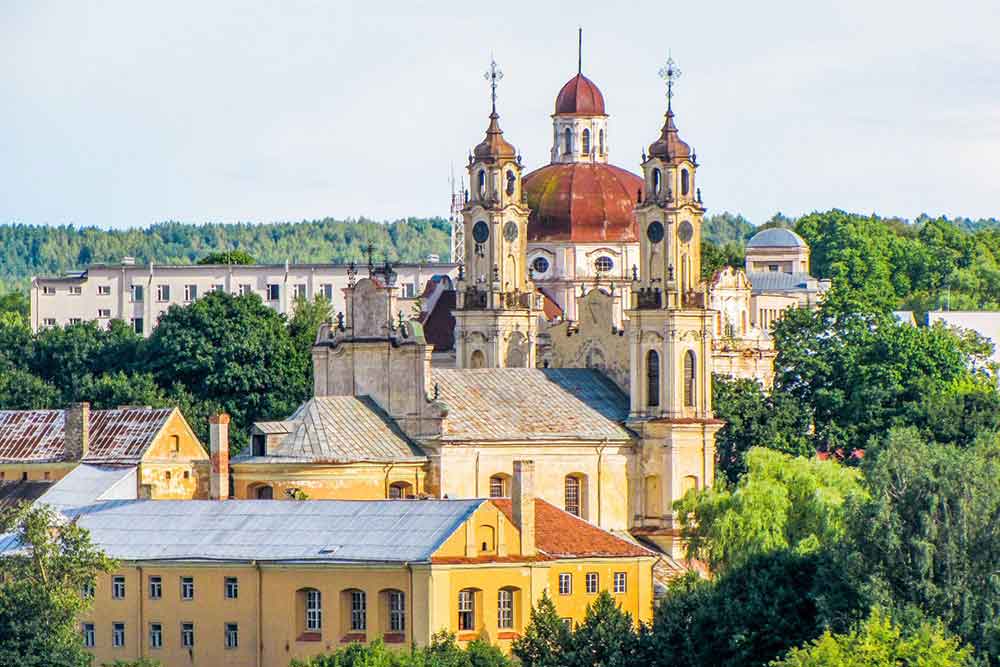
This post may contain affiliate links. To find out what this means and more information visit my disclosure page .
Top 3 Things To See In Lithuania
Organised tours of the baltic states, street art of tartu, druskininkai, what currency does the baltic states use, save it for later, best of the baltics – overview.
This best of Baltics travel guide is divided into sections. The first part gives a list of the 3 top things to see in the Baltic nations as well as gives some useful information to read before you visit.
The second section goes into the best things to see in each of the Baltic with insider information about what to expect, getting there, and the location.
Finally, there’s an FAQ section which answers any other questions you might have about planning your trip to the Baltics. You can also download this free checklist, planner and information sheet straight to your inbox.

Your download is on its way to your inbox 🙂
Top 3 Things To Do In The Baltics – By Country
If you’re planning your Baltic itinerary, and only have a limited amount of time then this section covers what to see in Latvia and Lithuania as well as Estonia. You could easily visit all these highlights within a week, especially if you have access to your own transportation .
Top 3 Things To See In Estonia
- Tallinn UNESCO Historical Centre
- Lahemaa National Park & Viru Bio reserve
- White Sandy Beaches of Pärnu
Top 3 Things To See In Latvia
- Riga UNESCO Historical Centre
- Art Nouveau District, Riga
- Jurmala Beaches & Villas
- Vilnius UNESCO Historical Centre
The Hill of Crosses
Trakai castle, baltic states travel guide – useful info.
So, you’ve got an overview of what to see in the Baltic states. If you’re in the planning stages of your Baltics vacation, this section covers some useful information to know before you get there.
You can easily do the items listed in this article by public transport, especially if you base yourself in one of the nation’s capitals. The Baltic states also make for a great road trip destination . If you want someone else to do the leg work, then you can also join a small group guided tour.
Getting To The Baltic States
It’s easy to get to the Baltic states, you have several options. The obvious is to fly, Tallinn, Riga and Vilnius all have international airports.
You could also opt for entry via land – the Baltic states share borders with Poland, Belarus and Russia with trains and buses going from each. To get the best deals on travel, book in advance using the Omio App .
Getting Around The Baltic States
When you plan your Baltics itinerary take into account how you’re going to get around. I started in Estonia and worked my way down through Latvia and then Lithuania. Each of these cities is connected by an efficient bus service.
You could fly between each country, but honestly, it’s not worth it. By the time you get to the airport, check in, and wait, it’s quicker to go by land.
An alternative is to rent a car and drive. Roads in the Baltic states are well maintained, and outside of the cities, there’s little traffic, so this is a great destination for a road trip.
If you’ve only got a limited time, don’t want to navigate the public transport system or hire a car, then an alternate way of visiting the Baltic States is on a small group guided tour .
Check Availability: Best of the Baltics Highlights 8 Days Tour
What To Do In The Baltics: 23 Things For Your Baltic Bucket List
This section goes into the best places to visit in Baltic States and is categorised by country. Don’t forget you can download this Baltic best-of guide straight to your phone for future reference.
Best Things To See In Estonia
Because of how close it is to Finland, a big chunk of Baltics tourism goes to Estonia as day trips between Helsinki to Tallinn . The city certainly has the most Scandinavian feel compared to the likes of Riga and Vilnius.
Aside from Tallinn, there’s an abundance of things to do in Estonia, and although I really liked all of the Baltic states, this country was my personal favourite. Here’s the lowdown on the best things to see.
Tallinn Historical Centre
Undoubtedly, one of the best things to do in the Baltic States is to spend time exploring the UNESCO listed city of Tallinn .
You might be wondering which is the best Baltic city. Truth is, they are all stunning. However, Tallinn, for me, was the most visually beautiful. The UNESCO listed historical centre ticks every box for being a quintessential mediaeval city, with walls, defence systems connected by a myriad of pretty cobbled courtyards and alleyways to spend hours getting lost in.
The city is also rich in history, which includes a pretty harrowing Soviet past. There is still an abundance of relics left from the Soviet era including the eerie KGB prison and headquarters, which is actually housed in a beautiful Art Nouveau building right in the heart of the old town.
Check Availability: Tallinn City Tour with Local Guide

Inside the historical centre, there are so many things to see. Tallinn is best explored on foot as the city is compact and mostly pedestrian. The city is surrounded by hills, and there are several look-out points dotted about to walk up to and take beautiful panoramic photos of the city going past the fantasy like Alexander Nevsky cathedral.
One of the most popular things to do in the historical centre is to walk around the remaining segments of the city walls. Once, these surrounded the entirety of the city to protect it from invaders. Today, they no longer make a complete circuit, but you can walk along parts of it. Lots of the sections still have watch towers to climb.
If you want to learn more about the history of the city, then it’s worth doing a walking tour of Tallinn with a local guide to give you more insight into the city.
Make sure you visit the gigantic and rotund Kiek in de Kok. Ideally, you’ll want to spend a couple of hours here. This building also houses the entrance to the super eerie Bastion passages which are built under the city and used in several wars. If you’re looking for a great Instagrammable spot, then be sure to visit St Katherine’s passage.

Tours of Tallinn
There’s a lot to do in the Estonian capital, it’s a great city to wander about by yourself. However, to make the most out of your time in Tallinn, I reccomend joining a tour.
Related Article: 33 Things To See In Tallinn
If you want to escape Tallinn and leave the other tourists behind, you should catch a bus to Kuressaare. This town, with its cute historic centre, is located on Saaremaa, Estonia’s biggest island.
Most travellers visit Kuressaare to see the Episcopal Castle, a huge fortification that dates back to the 14th century. From its towers, you have a great view of the town, but the highlight is the museum inside the castle.
Here, you can learn everything you’ve ever wanted to know about the history of Saaremaa. Oh, and did we mention the hidden passageways? The castle is full of them, small, winding staircases that you can take to get from one floor to another.

If you’re tired of climbing stairs, it’s time to relax. Kuressaare is famous for its spas, and here, you’ll have the chance to unwind in a typical Estonian sauna. If you travel to the Baltics in the low season, you could even look into renting a room in a spa hotel. They offer great discounts in winter.
In the evening, we recommend having dinner in a traditional windmill. Here, you can try lots of typical dishes from the region, like wild boar or kama jelly. Give it a try; we’re sure you’ll love it.
Explored by Daniel and Ilona from Top Travel Sights
Mooska Farm Smoke Sauna
Located in Võru County 3 hours from Tallinn, Mooska Farm Smoke Sauna is an Estonian must-see! Mooska Farm Smoke Sauna is a farm and smokehouse, but the traditional Estonian smoke sauna is by far the biggest attraction here.
No Baltics tour would be complete without experiencing a traditional sauna. The smoke sauna experience has been awarded a UNESCO Intangible Cultural Heritage of Humanity certificate and is meant to improve your overall sense of wellbeing – in body, mind, and soul. It gave us important insight into local traditions and was an experience we will remember for years to come.
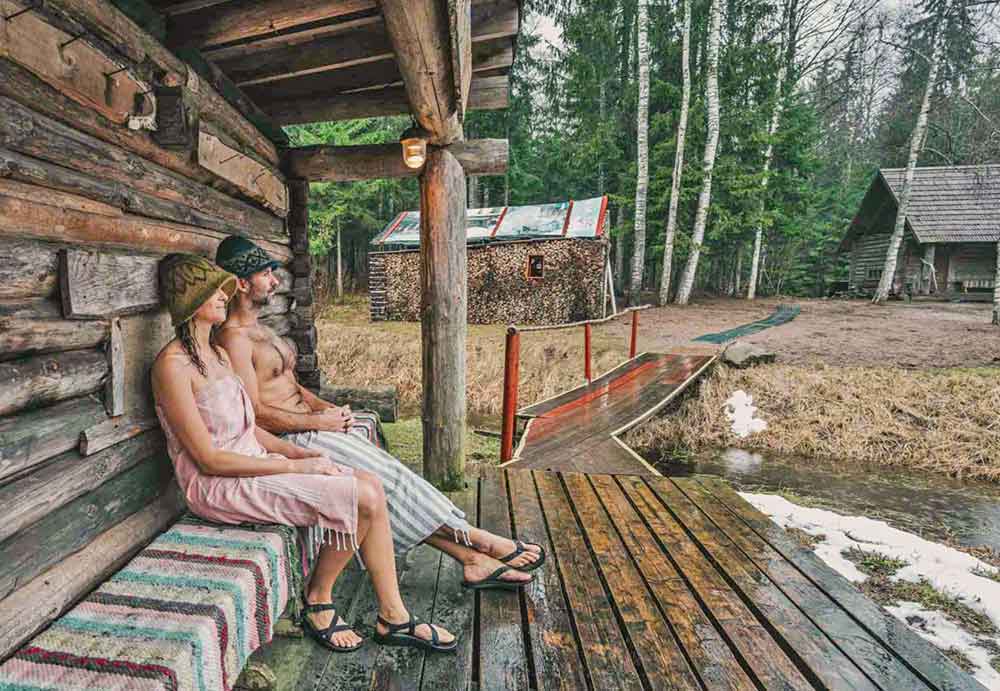
The 3-hour Smoke Sauna experience is guided by the mother of the smoke sauna and wonderful hostess, Eda. She’ll instruct you in and out of the sauna and lead the chanting, meditation, and whisking with leaves, twigs, and honey scrubs. There is also an optional ice-cold skinny dip!
Meats are traditionally cured inside the Estonian smoke sauna and after our sauna experience, we were given the chance to try some alongside other local products from the farm. The meal was homemade and made us feel like the food was reason enough to visit the farm.
Depending on the time of the year, you can also partake in a nature tour with Mooska Farm which typically involves snowshoeing, skiing, or walking through the local forest.
Explored by Oksana & Max from Drink Tea & Travel
Pärnu is home to one of the best Baltic beaches, and one of the most popular beach destinations across the three Baltic States. Czars and Russian officials made the journey here for their retreats and tourists continue the tradition every summer.
During the long summer days, the town roars to life with tourists and the sandy shores of the Baltic Sea become party central. When the temperature drops, though, it becomes quiet once again and a peaceful place to wander.

Did you know that Pärnu was where Estonia’s independence was first proclaimed? It was read in 1918, and not in Tallinn, from the balcony of the old Endla theatre. The Soviets may have demolished it and a new one was rebuilt in the city, but a replica of the balcony has sprung up in the original spot, with the proclamation inscribed on it. You’ll find it close to the bus terminal.
Away from the beaches, there is still plenty to see in Pärnu during the off-season : A leisurely walk (watch out for the black ice in winter!) takes in marshes teeming with birdlife, traditional wooden houses, including the poet, Lydia Koidula’s, childhood home. You’ll also find decorative art nouveau buildings such as the Villa Ammende, along with historic mud baths and ancient fortifications like the red tower and the Tallinn gate.
It’s enough to turn a rest stop on the Riga-Tallinn journey into an overnight stay.
Explored by Nicholas from Rambling Feet
The Struve Geodetic Arc
If you’re into the sciences or even interesting facts, then this is a must-see on your Baltic States itinerary. The Struve Geodetic Arc is a series of triangulations done by Tartu University astronomer and geographer Friedrich Georg Wilhelm Struve between 1816 and 1855.
The measurement of the meridian, which used the observatory at Tartu University in Estonia as its base point, represented the first accurate measurement of a long segment of an earthly meridian.
This work helped determine the exact size and shape of the planet and marked an important step in the development of earth sciences and topographic mapping.
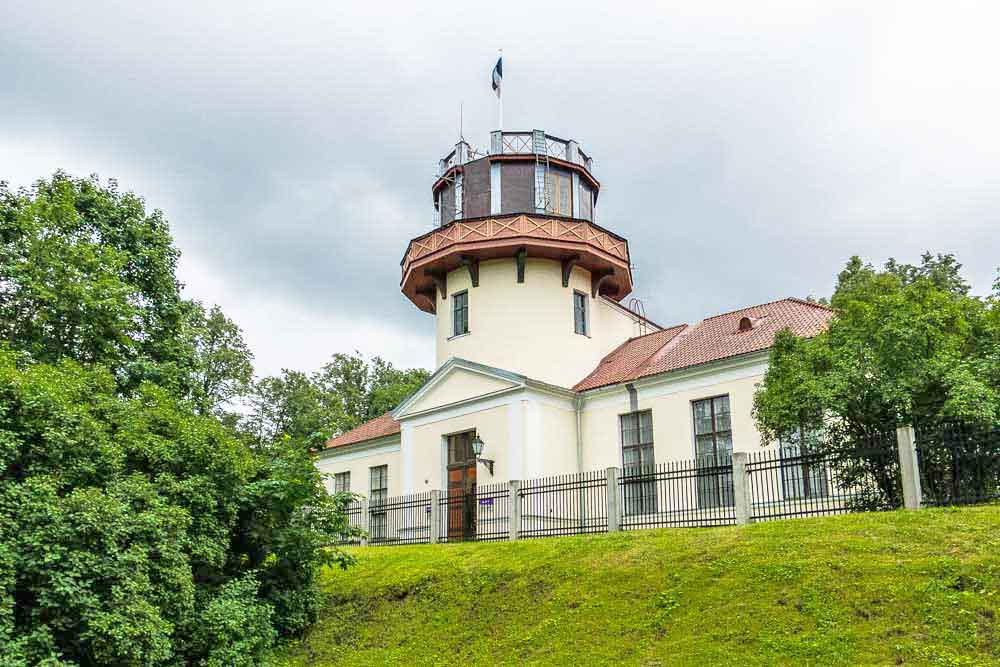
Struve did important early astronomy work on the nature of binary stars. But his actual thesis work was on determining the exact geographic coordinates of the Tartu Observatory. This, indirectly, led to his geodesic project.
The observatory is no longer in use, but now serves as a museum and includes many of the measuring instruments, many handmade by Struve, that he used in his work in mapping and astronomy.
The Tartu University site, along with other points along the meridian in 10 countries stretching from Norway to the Black Sea, are a UNESCO World Heritage site.
Explored by Tom from Travel Past 50
Lahemaa National Park
After touring the cities, it’s sometimes nice to take a break from the concrete and decompress in nature.
Estonia never gets its dues as a significant tourist attraction. When someone mentions Estonia, the first reaction is “Brrrrr. It’s cold.” Yes, the country borders Russia and the capital city of Tallinn is only a 2.5 hour ferry to Scandinavia, but summers in Estonia are a hidden gem.
Lahemaa, the largest national park in Estonia, is a short 1-hour bus ride from Tallinn. If you don’t want to go by bus, then book onto a full day tour of Lehemaa instead.
Summer days this far north of the equator mean EIGHTEEN hours of sunlight. The seemly endless days allow for exploring Estonia’s gorgeous national parks, of these fantastic natural areas, I highly recommend adding Lahemaa to your Baltic travel itinerary.
Check Prices: Tallinn To Lehemaa National Park Full Day Tour

The park is perfect for a picnic in the forest, exploring quaint seaside villages, overnight glamping at the eco-hostel at Projekt Kodu, and hiking the wooden planked path of the Viru bog. Viru bog hike is a uniquely Estonian nature walk.
The 2 to 4-mile hike is over a giant biodiverse peat bog. To keep from disturbing the ecosystem, you hike over wooden planks. The path is well marked, simply follow the planks, with information signs highlighting the plants you will commonly encounter.
The highlight is the view from the lookout tower overlooking the dark pools of bog water. From that viewpoint, I felt transported back into time, as if I was looking over a scene from Jurassic Park.
Explored by Marco from Nomadic Fire
The university city of Tartu is located 186 kilometres (116 miles) southeast of Tallinn and is the hub of Estonian street art . So much so that each year there is a street art festival, Stencitibility.
Although technically street graffiti is an illegal activity in Estonia, the festival has been running for over 10 years. If you’re a fan of street art, then this is one of the best Baltic cities to visit to find it, in abundance.
The styles differ and are created by local and international artists. With pieces ranging from playful and cartoon-like, to full on political satire. No matter where you walk in the city, you’ll pass some form of street art that adorns every possible surface.

Large murals decorate the walls of buildings, but you’ll also find artwork on letter boxes, street lamps, doors and roads. Don’t forget to look up and back over your shoulder. You’ll be surprised by how much artwork you will see.
Urban art is a constantly evolving medium, with new pieces cropping up all the time. I’m sure you’ve heard of the urban artist, Banksy, well Estonia has their own answer who uses a similar signature stencil style with pieces provoking political and social issues. Again, like Banksy, Edward von Lõngus keeps his real identity hidden.
Read Next: Visit Tartu – Estonia’s Street Art Capital
Best Things To See In Latvia
Baltic states tourism is alive and kicking in Latvia. Nestled between Estonia and Lithuania, this is the middle sister that attracts visitors passing through the states, with the capital Riga a solid favourite.
There’s an abundance of things to do in Latvia. Here’s the lowdown on the best things to see.
Riga Historical Centre
The Latvian capital has been dubbed the ‘Paris of the north’. It’s easy to see why; beautiful architecture, located on a river and plenty of café culture. If you’re spending any time in Latvia, make sure that you dedicate a couple of days to explore Riga city .
The Old Town of Riga is a listed UNESCO heritage site and is filled with remarkable buildings and picturesque cobblestone alleyways. The historic centre has been lovingly and painstakingly restored and brought back to their original glory after the city’s turbulent past.
The compact city is ideal to get lost in. When you visit Riga, be sure to see Town Hall Square and make sure to visit the House of the Blackheads . The colourful unmissable facade is one of Riga’s oldest and most beautiful buildings.
Book Here: Riga Guided City Walking Tour

Then climb one of Riga’s most iconic landmarks, featuring the bulbous spire, St Peter’s Church for an amazing view across the river and the city. If you want to learn more about the history of the city, then book onto a guided Riga city walking tour .
If you’re after one of the livelier places in Riga, then head to Livu Square or the areas surrounding the cathedral where you’ll frequently find street entertainers, live music and market stalls as well as plenty of places to drink. Don’t forget to try the local drink; Riga Balsam!
For the architecture aficionados, then Riga is also the Art Nouveau capital of the world . Albert Street is where you’ll find the highest concentration of them. It’s certainly worth half a day exploring the opulence of a bygone era. If you have more than a couple of days in Riga, then it’s also worth doing a day tour out to Rundale Palace.
Tours of Riga
There’s a lot to see in Riga. One of the most efficient ways to see the best of the city is on a tour. You might like these Riga city tours.
Read Next: The Complete Guide To Riga
Kemeri National Park
If you’re wondering what to do in Latvia to get away from the bustle of the city, then head out to explore some of the unique nature tucked away in the region.
Kemeri National Park is located about 45 minutes away from Riga, Latvia, and makes for a perfect day trip from the city . The park is home to stunning bogs, forests, therapeutic mud, and mineral waters.
Popular things to do here include hiking through the park including the Great Kemeri Boardwalk, Lake Sloka, Forest House, and Lake Kanieris. It’s also a great place for birdwatching and cycling.
Check Availability: Full Day Trip From Riga to Kemeri National Park

The most popular and beautiful thing you can do in the park is to walk the Great Kemeri Boardwalk at sunrise. You’ll be shrouded in mist, walking through the bog, enjoying the painted sky, wrapped in silence. Towards the end of the walk, climb to the top of the observation tower for amazing 360-degree views of the entire bog.
To get to the Great Kemeri Bog Boardwalk, you can take a train from Riga train station every 2 hours for just a few euros. Get off at the Kemeri Railway Station. It’s a bit of a walk from the train station to the beginning of the hike, follow the signs for “Leila Kemeru tirela taka”. If you don’t want to go by train book a tour to Kemeri from Riga .
If you’re travelling the Baltics by car, then you’ll be glad to hear there is plenty of free parking at the park.
Explored by Kelly from Snap Travel Magic
Gutmanis Cave
Gutmanis Cave is located in the Sigulda region of Latvia, about 1 1/2 hours by bus from Riga. It’s not very big, but what makes Gutmanis Cave famous is the number of legends that happened here. The most famous one is The Rose of Turaida, a Latvian love story.
This tragic tale is about a girl who was found as a baby during the Swedish – Polish war. She was adopted, baptised and given the name Maia. One day she fell in love with a gardener named Victor Heil and soon after they were engaged.

Legend says they met at Gutmanis Cave in the evenings, but an army deserter named Jakubowsky also fell in love with Maia. One day Jakubowsky sent Maja a love letter pretending to be Victor asking her to meet him at the cave. She arrived, and Jakuboswky appeared out of the shadows and attempted to force himself on her.
She begged for him to stop and said in return, she would give him a scarf that would protect him from all injuries, and if he didn’t believe her, he could try it out on her first. He stabbed her with his sword as blood gushed from her neck. She would have rather died than betray her fiancé.
Today, every Latvian knows this story, and if you visit the Sigulda region during your Baltics travel you will certainly come across it. It’s so famous that there is even an opera based on the legend.
Explored by Marika from Clumsy Girl Travels
A warm sea breeze, colourful art nouveau villas, flower-lined pedestrian streets, and a carefree attitude are just some of the signature hallmarks of Jurmala .
This cheerful little resort town is located right in the middle of the Gulf of Riga, and just 40 minutes from Latvia’s capital, Riga. For added effect, take the retro elektrichka (electric train). If you’re pushed for time, you can also book a half day trip to Jurmala .
If you’re travelling to Latvia, don’t miss visiting Jurmala – especially in the summer!
Although this town was known for its healing sanatoriums back in the USSR, it hasn’t lost its charm. It’s still the go-to place for travellers around Eastern Europe.
Book Here: Jurmala Half Day Tour From Riga

Grab a towel and start your trip at one of Jurmala’s beaches. My personal favourite is Majori beach, which is clean, has plenty of space to spread out, and is close to the centre. If you prefer something more active, then hire a bike and cycle along the coast .
Speaking of the centre: don’t travel to Jurmala without taking a casual stroll along Jomas Street! This is the main high street of Jurmala and is full of beautifully photogenic villas, boutique shops selling local Latvian goodies, and delicious cafes.
If you’re craving nature, the Dzintari Forest Park is the place to be: It’s the perfect spot for families, as there’s an entire children’s area. Whether you’re travelling to Latvia for a day or a week, Jurmala is a must for any Baltic States travel itinerary!
Explored by Luda from Adventures with Luda
Ventspils is a great stop off for a Baltic Road trip. Founded over 700 years ago this beach city is located on the western coast of Latvia. Ventspils is known as the Latvian capital of flowers and fountains.
Ventspils Port is Latvia’s oldest and one of Europe’s busiest ports. In the town centre, there is a beautiful historic carillon bell which plays the melody “Pie dzintara jūras” each hour. Other must-visit places are Livonian Order Castle and Ventspils Town Hall Square.
The entire city is adorned with flowers from spring to autumn. It is famous for its artistic spirit and numerous cow sculptures around the city. During the ‘City Festival’ in August, florists from Baltic states cover the Promenade of Ostas Iela with carpets of flowers. During this time, you will find several extraordinary flower sculptures and unusually shaped greenery, flower beds, and fountains all around the city.

Like many of the beaches in the Baltic States, Ventspils offers a beautiful white sandy beach with special areas for surfers and nudists as well as having plenty of amenities nearby.
If you want to learn more about the history of the area, you can discover Ventspils’s marine history in the Seaside Open Air Museum with its nostalgic collection of fishing boats, nets, and huts. Take a beautiful ride on a narrow-gauge steam train running from here.
If you’re after souvenirs, Ventspils market square is the best place for buying locally made products. The market was established in the 17th century and alongside the handmade gifts, you’ll find locals shopping for vegetables, fruits, clothes, flowers, plants and meat. If you have time, and you’re on a Baltic States road trip, you could spend at least a couple of days in Ventspils.
Explored by Moon Ray from Nomadic Mun
Sigulda is one of the most charming, yet underrated and lesser visited towns of Latvia . If you’re wondering what to see in Latvia that’s a little off the beaten track, then this is a true hidden gem.
Known as the ‘Switzerland of Latvia’, this region has an abundance of appeal for active travellers. I recommend renting an electric bike for half or a full day or joining a hiking tour of Sigulda . This way you can get closer to wonders like the Sigulda castle.
Take the cable car to the opposite slope passing over the Gauja river, the Sigulda’s bobsleigh track, and the hipster Jāņa market; a great option to stop for lunch and coffee.
Book Here: Full Day Tour From Riga to Sigulda with Castle, Ruins and Cave Visit

If you have your own vehicle, you can go a little further to discover places like Gutman’s cave, Krimulda manor, and Turaida museum. Finally, if you enjoy walking, don’t miss the nearby Cecili and Amata hiking trails in the wonderful Gauja National Park, a short distance from Sigulda.
If you don’t have a car, then book on to one a full day tour to Sigulda instead.
Ideally, you would want to visit Latvia between late spring or early autumn to make the most of the outdoor activities, however, if you visited during the winter, then be sure to add a visit to a local sauna into your plans.
Explored by Inma from A World to Travel

Best Things To See In Lithuania
Lithuania is the largest of the 3 Baltic states. Along with another UNESCO listed historical capital, there’s a load of stuff to see here.
Wondering what to see in Lithuania ? Here’s a list of the best things to see.
Vilnius Historical Centre
The Old Centre of the Lithuanian capital is one of the most beautiful Baltic cities, and as with Estonia and Latvia, is listed as a UNESCO world heritage site. The mediaeval city is known for its mixture of architectural styles with a huge emphasis on baroque style buildings.
A guided walking tour of Vilnius will give you loads of insight into this fascinating city. The main hub of the Old Town is Pilies Street and Gediminas Avenue. Both are lined with these exquisite buildings which are now a buzz with stylish cafes. boutique restaurants and often lined with street markets.
You could easily spend a couple of days in Vilnius getting lost and exploring the quaint cobbled paths, courtyards and alleyways. Be sure to visit Cathedral Square, the Vilnius Cathedral and the Town Hall Square as well as one of Vilnius’s most beautiful buildings, the Vilnius University – it’s got 13 courtyards!

Other must-see places are St. Anne’s Church and the Gate of Dawn, a 16th-century gate which once guarded the entrance to the original city.
One of the more interesting areas in Vilnius and certainly worth a few hours is the autonomous district of Užupis. This community within the city is filled with quirky artwork often made from recycled and reclaimed materials and thought-provoking and sometimes political messages.
Just outside of the historic city centre, you’ll find that Vilnius also has an outstanding street art scene.
Tours of Vilnius
Just like the other captials mentioned in this article, there’s a lot to see in Vilnius. This is another UNESCO listed city with an abundance of things to see. To make sure you don’t miss anything, book onto a guided city tour.
If you’re looking to get into a bit of Lithuanian history, Trakai Castle is for you. Completed at the start of the 15th century, this mediaeval castle stands proudly on an island in Lake Galvė in the town of Trakai. While the castle itself became obsolete centuries later, it stands as an important symbol of Lithuanian statehood.
To get to the Castle, you take a long wooden bridge from the shore across the lake. In the summer, the lake provides a beautiful relaxing escape from the city. In the winter, you can walk across the frozen lake to get to the Castle (ice conditions depending).
Inside the castle walls, there are numerous areas like the courtyard, keep, and chapel that you can explore. Spend some time wandering around the gallery rooms reading and exploring the artefacts. Trakai Castle is a great place to learn about the history of Lithuania .
Check Availability: Guided Tour of Trakai Castle

It is really easy to get to Trakai. The town is only about 40 minutes drive from the capital, Vilnius. Take the bus from Vilnius. The bus station in Trakai is south of the castle so you walk through the town – with cafes and shops – before spotting the castle across the water.
Because Trakai Castle is located on an island in the middle of a lake, there are various ways of seeing it; by kayak in the summer and by kick sledge in the winter when the lake is frozen.
Explored by Eric from Penguin and Pia
Located in the north Lithuania, not far from the small unassuming town of Šiauliai, you have perhaps the most fascinating thing to see anywhere in the country and also one of the best places to visit in the Baltics.
Thousands upon thousands of people flock here every year to visit the Hill of Crosses . A small hill in the countryside, dominated by more than 100,000 crosses!
Pilgrims have congregated here ever since the 1800s when there used to be a matter of hundreds of crosses here. In recent decades’ popularity has exploded and now it’s a wonderful sight to behold regardless of whether you are religious or not.
In 1993, the Hill of Crosses was so widely renowned that it was worthy of a visit from the then-reigning Pope John Paul II.
Book Here: Hill of Crosses Guided Tour with Transportation from Vilnius

Even if you aren’t religious, most people still find their visit here to be pretty magical. It’s fascinating walking up and over the hill taking in the incredible array of crosses, and the pictures look pretty cool as well!
After your visit, take some time to walk a bit further out from the hill, enjoying the large church behind as well as taking in views of the never-ending Lithuanian countryside in all directions.
A no-fuss option for visiting Hill of Crosses is to opt for a tour that includes transportation and a guide .
Explored by Bradley from Dream Big, Travel Far
If you’re looking for the perfect small city to visit in the Baltics, then you really can’t go wrong with the charming port city of Klaipeda. Often overlooked as simply a jumping-off point for the Curonian Spit, there are several things to do in Klaipeda that make it worth visiting in its own right.
As a very important ice-free port in the Baltics, Klaipeda has been a strategic city for centuries, giving it a robust and interesting history.
There is plenty of maritime history here that is worth learning about and a few museums that can help you to understand just how influential Lithuania’s third-largest city historically was. One of the most relaxing ways to explore Klaipeda is from the water in a handcrafted canoe .

Along with boasting a charming riverside pathway lined with lovely historic ships, Klaipeda also has a pretty old town worth wandering through and a great restaurant scene that showcases the newfound love for modern Lithuanian cuisine.
The city also has a couple of beautiful, white-sand beaches perfect for taking advantage of the long, sunny days of a Lithuanian summer.
Explored by Maggie from The World Was Here First
Grūtas Park
If you’re interested in either dark tourism, or Soviet history, then Grūtas Park will be one of the top things to do in the Baltics. Grūtas Park is located in southern Lithuania, not far from the border with Belarus. The nearest town is Druskininkai, about eight kilometres away.
When Lithuania declared its independence from the Soviet Union in 1990, the Soviet statues that had been on display in public spaces were pulled down and dumped in various places around the country. Then in 2001, a wealthy local man collected them and turned them into a kind of Soviet theme park, nicknamed “Stalin World”.
Check Availability: Dzukija National Park and Grutas Park Full-Day Tour

This idea was opposed by many at the time and remains controversial today, but the intention was never to glorify the Soviet regime. When you look at the park’s recreation of prison camps, barbed wire fences and guard towers, it’s clear that the purpose is to document the horrors of this difficult time in Lithuania’s history.
For a better insight, it’s worth exploring the parks and statues as part of a guided tour .
Among the 86 statues in the park, you’ll find a dozen or so of Lenin and even two of Stalin, which is pretty unusual. Even today, you’ll often come across Lenin statues while travelling in Russia and some other former Soviet countries. But de-Stalinization has been ongoing since the 1950s, so it’s rare to come across an image of him.
While I understand why some Lithuanians are not in favour of the park, I believe that it can help locals and visitors alike to better understand the country’s recent history.
Explored by Wendy from The Nomadic Vegan
Any trip to Lithuania, particularly in the summer, wouldn’t be complete without at least a day trip to Palanga! The Baltic sea brings large crowds together in the summer months when visitors can get their fill of swimming, sunning, and playing in the sand.
One of the most famous Baltic sea landmarks is the Pier of Palanga. It’s a great spot for photos as you head to the ocean, which you can also walk under depending on the tide. I highly recommend spending time at the Seaside Regional Park, a unique gateway to the sea with large trees that line the sand out to the water in some places.

This park is noted for the Dutchman’s Cap, which is a sand-dune climb to the highest elevation. Seaside Regional Park is also a breath-taking spot for sunsets. Bring a picnic basket and settle in the sand for a gorgeous light show through the trees.
Besides the typical beach activities, tourists can rent bikes to ride through green forest paths. A family favourite is the nearby Lithuanian Fairy Tale park, which features several interactive sculptures that kids like to climb and play on.
Palanga is located in the northwestern-most tip of the country, so it is an easy addition to any road trip through Lithuania and its neighbouring country, Latvia.
Explored by Monica from This Rare Earth
Dvina Missile Base and Žemaitija National Park
In September 1960 the Soviets started a top-secret construction. 10,000 soldiers moved to Žemaitija National Park, in northwest Lithuania to build a nuclear missile base that had the potential to destroy every city in Europe.
Once completed, its strategic importance to the Soviets in the Cold War was second only to Cuba. One of the best ways to enjoy the Žemaitija National Park is by canoe .
It was finally discovered in 1978 by U.S. reconnaissance teams but had been decommissioned 4 years earlier. Thankfully no missiles were ever fired.
Check Availability: Full Day Canoeing at Žemaitija National Park

Now it’s one of the very few nuclear missile silos in the world actually open to the public as a museum. The 100-foot deep missile silo is a highlight, tours also include displays of propaganda and the history of the Cold War.
You can easily visit the Cold War Museum when taking a road trip through the Baltics and enjoy the Žemaitija National Park that surrounds it. The vast parks, forests and lakes are home to rare wildlife such as Lynx and are well worth spending a day or two exploring while travelling in Lithuania.
Explored by Jo from Lost Wanders
Kaunas, the second-largest city in Lithuania, is one of the coolest places to visit in the Baltic States. The city has big historical value, it used to be an important trade centre in the region in the 15th century, in the interwar period Kaunas was the capital of Lithuania.
These are not the only reasons why you should visit the city! With its diverse history, old port and wars, Kaunus is steeped in ghostly stories.
With all the great things to do in Kaunas , you won’t be bored there for sure. Besides the traditional monuments; churches, old houses, and the remnants of the castle from the 14th century, Kaunas offers a great street art scene, exceptional modernist architecture from the interwar period, and some unique museums (like the only Devils Museum in the world).

This is also the only city in Lithuania with funicular trains, there are two of them in Kaunas, both built before World War 2. The coolest spot to visit in the city is the hidden Yard Gallery.
A local artist wanted to bring the community together and created a real wonderland, with numerous art installations, street art and photos of Jewish families that used to live in that complex.
When you get hungry numerous restaurants and cafes along Vilniaus street and Laisves avenue invite you to sit down, relax and enjoy the vibrant atmosphere of Kaunas.
Explored by Kami from My Wanderlust
Curonian Spit
On the western edge of Lithuania, drawing a line across the edge of the Baltic Sea lies the Curonian Spit; a thin strip of land 61 miles long and just over a mile wide that connects Lithuania to a small piece of Russia.
This idyllic gem is a UNESCO World Heritage Site shared by both countries and is the perfect destination for beachgoers, casual hikers, sailors, families and anyone who wishes to relax in nature. If you’re after something more active, then you can do a full day by canoe around the spit .
The Curonian Spit has a folkloric creation legend on the Lithuanian side. It was made by Neringa, a beautiful and good-hearted Lithuanian giantess, who collected sand in her huge skirt and poured it out to form the Spit so that it could protect the people on the coast from raging storms. Because of this, part of the land is named in her honour.
Book Here: Full Day Curonian Spit by Canoe

The town of Nida is also a draw for literary enthusiasts, as the Nobel Prize-winning author Thomas Mann spent summers in a holiday home he had built there in the 1930s.
In addition to this, on the Lithuanian side, the Curonian Spit is also home to the Hill of Witches – a supernatural-themed sculpture park in the village of Juodkrante, featuring wood carvings of people and creatures from mythology and supernatural lore.
The easiest way to get to the Curonian Spit is from the town of Klaipeda, and catch the ferry over to the spit.
Explored by Jeremy of Cultura Obscura
Druskininkai is a special place in Lithuania, this city is well known for spas, relaxation, healing mud, clean air, and mineral water. In the 50km spectrum, there are no factories, and Druskininkai is surrounded by forests that’s why the weather there is extremely fresh.
You can pick your own forest goodness like mushrooms, blueberries, cranberries, etc. Actually, this region of Lithuania has an old saying: “if there were no mushrooms and berries then Dzūkų women would be naked”. In the Lithuanian language, it rhymes.

If you love spa holidays or just want to relax for a weekend then Druskininkai is your destination. Also, there are many trekking roads, bicycle roads, lakes, and beautiful nature.
One of the top spas is UPA Medical Spa it is modern and minimalistic, the staff is super professional and they offer a variety of procedures. For top-notch Spa treatments and luxury accommodation, it’s well worth checking out this hotel.
I love that this city is small that’s why all restaurants and hotels personally take care of you and you make really warm memories of your stay. Also, I highly recommend going to a restaurant called “Sicilia” and trying their mussels, it’s just extremely delicious. It is one of the best restaurants in the city where you should come before dinner time during weekends or you will have to wait in line outside.
Recommended by To Youpiter
Best of Baltics – Frequently Asked Questions
So, are the Baltics worth visiting? Yes! I’ve given you plenty of great reasons to go.
This section has the answers to questions that frequently come up about the practicalities of visiting the Baltic states as well as useful travel tips .
What Are The Baltics Known For?
The Baltics are known for their UNESCO capitals, cultural richness, and unspoilt forests and lakes and white sandy beaches.
Can I do a small group tour of the Baltic States?
There are several companies offering tours of the Baltic States. Opt for a small group tour to get the most out of your visit. Check out this great small group tour of the Baltic States .
How do I get to the Baltic States?
Each country has their own designated international airport located just outside the capital. This makes getting to the Baltic States, from destinations within Europe or from as far away as the United States very easy.
Is it easy to travel around the Baltic States?
If you are travelling to the Baltic States without a car or not going on a tour, you’ll be pleased to hear that it’s easy to travel around the countries.
There are decent train and bus networks across all three countries, and services are very affordable and regular. If you really wanted you could get a flight between each of the capitals, but this isn’t necessary as they are only a few hours apart by bus.
A great travel app to search across bus, train and flight is the Omio App.
Where can I find a list of Baltic countries?
This article covers the three Baltic states, it’s made up of just three countries; Baltic countries list = Latvia, Lithuania and Estonia.
Which is the best Baltic country to visit?
It’s difficult to determine which Baltic country is the best to visit as the three Baltic states share a lot of common features as well as having a similar history.
Each of the Baltic capitals holds UNESCO world heritage status, fascinating history as well as beautiful landscapes. Purely based on the capital Tallinn, I thought Estonia was overall the most beautiful Baltic country, then Lithuania and then Riga but this is so subjective.
What are the best things to do in the Baltics?
Not sure what to do in the Baltic states? Here are some great tour ideas to give you some ideas.
When is the best time to visit Baltic States?
The winters in the Baltic States are cold, so unless you enjoy sub-zero temperatures, this probably isn’t the best time to visit the Baltics. However, that said, the festive season can be incredibly picturesque, with the pop-up Christmas markets, particularly in Tallinn.
Also, these countries are geared up for the cold weather, and things like saunas and ice skating are popular activities.
The best time to visit Baltic countries is from late spring through to early autumn, with July and August being the warmest months. Because the Baltic states are located high up in Europe, in June you can expect over 18 hours of daylight per day.
What should I pack for the Baltic States?
It can rain all year round, even in the summer. It’s best to pack layers of clothing, as well as have a lightweight, wind and rainproof jacket.
In the peak of winter, pack a thick jacket, hat scarf and gloves as well as thermal socks and waterproof shoes. It gets extremely cold.
For all year round, pack a pair of comfortable shoes as most likely, you will be doing a lot of walking. Take a pair of shoes with a good grip on the bottom, especially if you’re visiting historical city centres, as often they are cobbles and can be difficult to walk on.
You’ll be glad to hear that the three Baltic nations all use the Euro, so you won’t need to change currency when you enter a new country. Hotels and tourist places will accept cards and ATMs are frequently available.
Planning On Visiting The Baltic States?
If you had any doubts about are the Baltic states worth visiting, I hope this article has answered that.
How many of these places are you adding to your Baltic bucket list? I hope this Baltic travel guide has given you lots of inspiration.
Whether you’re backpacking the Baltics, on a short weekend break to just one of the countries, or on an extended Baltic States vacation, I’m sure you’ll find plenty of places of interest.
If you enjoyed this best Baltic places article , you might also like…
- Riga 3 Days Itinerary
- What To Do In Tallinn
- Estonia’s Street Art Capital of Tartu
If you found this article useful, or know someone that will, then please like and share. Don’t forget to pin it for future reference.
Have a question about visiting the best Baltic State? then head to the Contact page and drop me a message.

Hey, I'm Becki......and I'm a self-confessed travel addict and experience connoisseur!
In other words, I’m a bucket-list traveller, on a mission to experience the best things our fabulous little planet has to offer with the least environmental impact.
When I'm not climbing mountains, scuba diving, spotting wildlife or exploring ruins, you'll probably find me sipping coffee, or with a glass of wine in hand planning my next adventure.
Similar Posts

Best Croatia Bucket List: 27 Top Things To Do In Croatia
FacebookTweetPin Wondering what to put on your Croatia bucket list? You’re in the right place! In recent years, Croatia…

Taking the Transfăgărășan Road Trip, Romania
FacebookTweetPin For most people, Romania is associated with one of the most popular dark characters in the world –…

Most Famous Landmarks in Portugal: 36 Portugal Landmarks to Visit
FacebookTweetPin Planning your trip, and wondering where the most famous landmarks in Portugal are located? Great! This article tells…

White Water Rafting in Slovenia, on the Stunning Soča River (2023)
FacebookTweetPin Thinking of going white water rafting in Slovenia? Great choice! Slovenia is a dream destination for anyone who…

Barcelona Bucket List: 32 Best Things to Do in Barcelona, Spain
FacebookTweetPin Welcome to the ultimate Barcelona bucket list! If you’re planning a trip to this captivating city, get ready…

5 Places for the Best Glamping in Spain’s Southern Coast
FacebookTweetPin Are you eager to explore the south of Spain without the hustle and bustle of the cities? Discover…

11 Top Attractions & Things to Do in Tallinn, Estonia
Written by Joni Sweet Updated Dec 24, 2023 We may earn a commission from affiliate links ( )
With surprises around every corner, Tallinn bursts with charm like no other European city. The capital of Estonia is steeped in history, yet has all the modern offerings tourists expect from a destination in the 21st century.
The city is exceptionally photogenic, especially during the midnight sunsets in the summer. And if you want to see the city at its very best, plan your visit during the Estonian Song Festival. It brings together 30,000 of the best singers in Estonia onto one stage every five years to create music that vibrates throughout the city. The next festival is scheduled for July 3-6, 2025.
Tallinn's Old Town has managed to preserve its medieval heritage throughout centuries of domination by foreign rulers, rightfully earning a UNESCO World Heritage Site designation. You can still strut through the ivy-covered Viru Gate, explore the gothic Town Hall, and walk along the town walls like others have done for hundreds of years.
But you should spend equal time exploring Tallinn's modern-day offerings, as well. The city boasts Scandinavian-inspired restaurants, viewing platforms, lush parks, and sweets shop s.
Plan your sightseeing around this alluring city with our list of the things to do in Tallinn.
1. Tallinn's Old Town
2. estonian maritime museum, 3. tallinn tv tower, 4. toompea castle, 5. aleksander nevski katedraali, 6. kadriorg park, 7. kumu art museum, 8. estonian open air museum, 9. kalev chocolate shop and workshop, 10. st. olaf's church, 11. telliskivi creative city, where to stay in tallinn for sightseeing, map of attractions & things to do in tallinn, estonia, tallinn, estonia - climate chart.
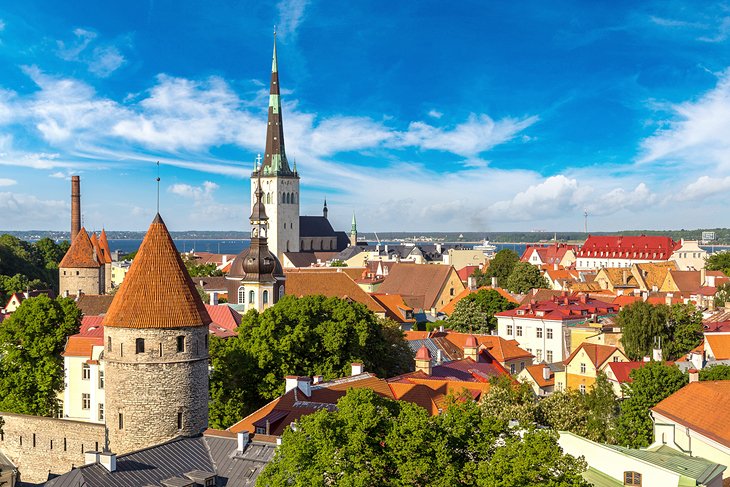
Tallinn's Old Town encompasses endless treasures for history buffs and culture hounds alike. Known for being one of the world's best-preserved Hanseatic town centers , the vibrant village-like area features cobblestone streets , lively cafés , and architecture from long-ago centuries.
Start your experience at the Town Hall Square. While you might be tempted to keep your eyes cast up at the colorful buildings, look down until you find the distinctive circular stone marked with a compass. Standing atop it gives you the unique vantage point to see the steeples of five historic churches around Tallinn. Then, make your way inside the church-like Town Hall. Erected in 1404, the oldest town hall in Northern Europe boasts magnificent Gothic arches and precious artworks .
Then, head across the square to one of Europe's oldest continually running pharmacies, Raeapteek. The establishment celebrates its history with a mini museum focusing on antique medical tools and early healthcare techniques. You can also sample herbal tea blends created from local ingredients in the pharmacy's basement.
Another prominent spot in Tallinn's Old Town is the Viru Gate. Once part of the city wall's defense system, this 14th-century structure features fairy-tale-esque, round towers topped with coned roofs fit for a princess. Nearly two kilometers of the original city wall is still standing. You can get a good look at this historic structure from the Patkuli viewing platform on Toompea Hill.
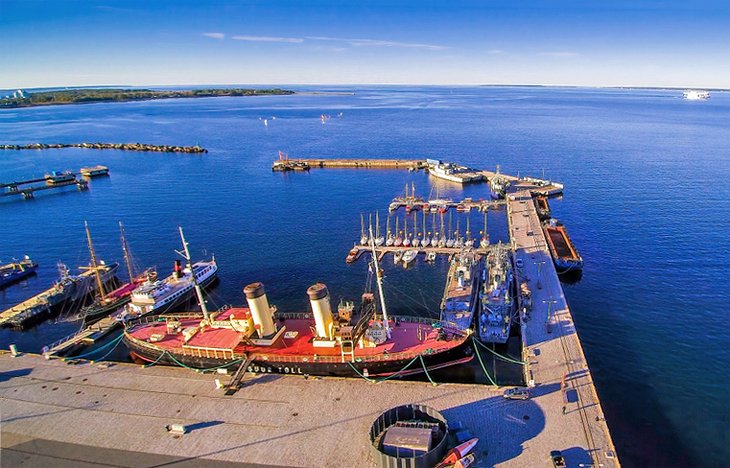
With more than 2,300 islands in its territory, Estonia has developed a strong maritime culture, and there's no better place to visit to experience it than at the Lennusadam Seaplane Harbour exhibit at the Estonian Maritime Museum.
This fascinating museum exhibit invites tourists to step inside Submarine EML Lembit , a 1930s-era vessel that is one of the few remaining submarines of its time. You can also hop aboard the Suur Tõll icebreaker and explore the powerful steamer's captain's cabin, crew rooms, and officers' mess hall. Hundreds of other artifacts displayed throughout the museum continue to tell the story of maritime history in Estonia.
The structure of the museum itself is just as interesting as its contents. Originally built to house seaplanes in Peter the Great's Naval Fortress, the hangar features "the world's first columnless thin-shell concrete domes of such volume." It remained in use until World War II. It's amazing that the cavernous space requires no vertical supports to hold its weight.
Address: Vesilennuki tänav 6, Põhja-Tallinna linnaosa, Tallinn
Official site: http://meremuuseum.ee/lennusadam/en/
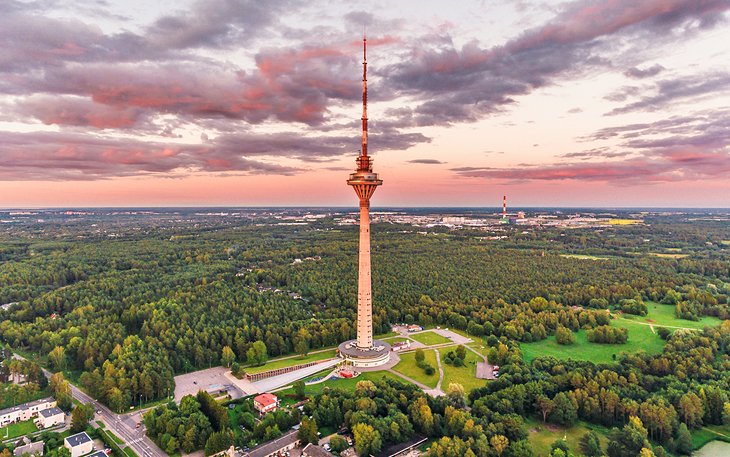
Proudly standing 314 meters in the clouds, the Tallinn TV Tower is a must-visit attraction in Estonia. A visit to the observation deck on the 21st floor –the highest open viewing platform in Northern Europe–is one of the most popular things to do. Tourists can get panoramic views of Tallinn and the Gulf of Finland. You won't want to forget your camera when sightseeing here.
Craving an adrenaline rush? Check out the Tallinn TV Tower's Walk on the Edge experience. It will strap you into a harness and let you walk along the ledge of the tower's outdoor terrace. You can even dangle your feet over the 175-meter drop. Don't look down!
This Tallinn attraction also features a number of other less fear-inducing attractions that prove fun for every type of traveler. There's a high-speed elevator that whisks tourists to the observation deck in just 49 seconds. Try out a career in broadcast journalism and record your very own news clip at the TV studio on the first floor. Enjoy multi-course meals in the clouds at the TV Tower Restaurant. And learn more about the history of Estonia's tallest building , including its construction for the 1980 Summer Olympics, at the TV Tower history exhibition.
Buy your tickets online in advance to avoid wasting time in a long line.
Address: Kloostrimetsa tee 58a, Pirita linnaosa, Tallinn
Official site: https://www.teletorn.ee/en/
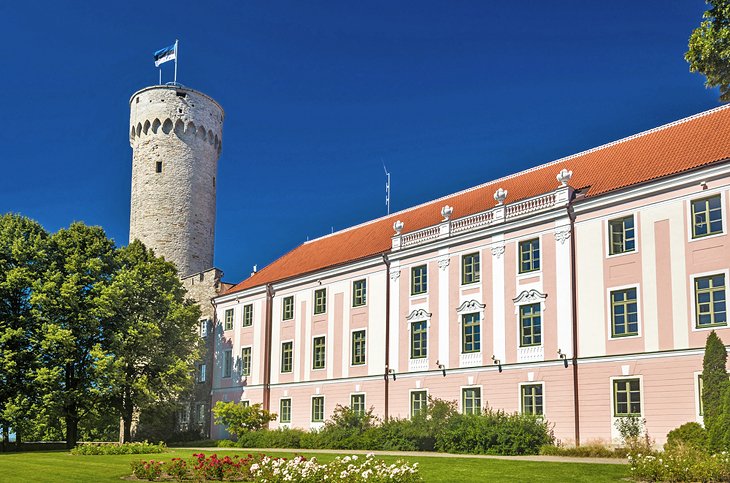
Toompea Hill has always been the core of power in Estonia. Various rulers of Estonia have changed the Toompea Castle to their liking over the last 800 years, starting with the initial stone structure built by the German Knights of the Sword in the 13th century and eventually turning into a tickle-me-pink Baroque palace, courtesy of Catherine the Great. It's now home to the Riigikogu (Estonian parliament), which commemorates the country's independence by raising the national flag atop the 14th-century Tall Hermann tower every morning.
Tourists can take free guided tours of the Toompea Castle in English, Russian, or Estonian on weekdays, with advance reservations. You'll get to explore the inside of the rosy building, hear about its storied past, and learn about the structure of the Riigikolu.
After your tour, walk 500 meters northeast to the Patkuli viewing platform for an epic panoramic vista of Tallinn. From here, you can see straight down to the port .
Address: Lossi plats 1a, Kesklinna linnaosa, Tallinn
Official site: https://www.riigikogu.ee/en/visit-us/toompea-castle/
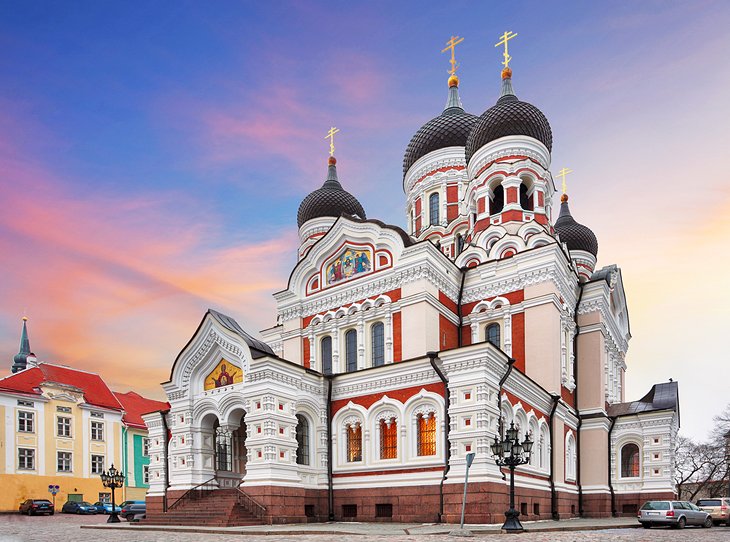
Take one look at the Alexander Nevski Cathedral, and you might think you've somehow stumbled into St. Petersburg. The 120-year-old cathedral, located directly across from the Toompea Castle , exudes sacred Russian Orthodox style, with five bulbous onion domes crowned by gilded iron crosses and an ornate brown and white exterior. It also houses 11 bells, including the largest one in Tallinn, which clocks in at a whopping 15 tons. You can hear their sounds ringing through the city throughout the day.
While beautiful and well-maintained, the cathedral hasn't always received a warm welcome from Tallinn. Many Estonians saw it as an oppressive symbol from Russia in the early- to mid-20th century and demanded it be demolished. However, that proposal didn't move forward, and the cathedral still stands today.
Address: Lossi plats 10, Kesklinna linnaosa, Tallinn
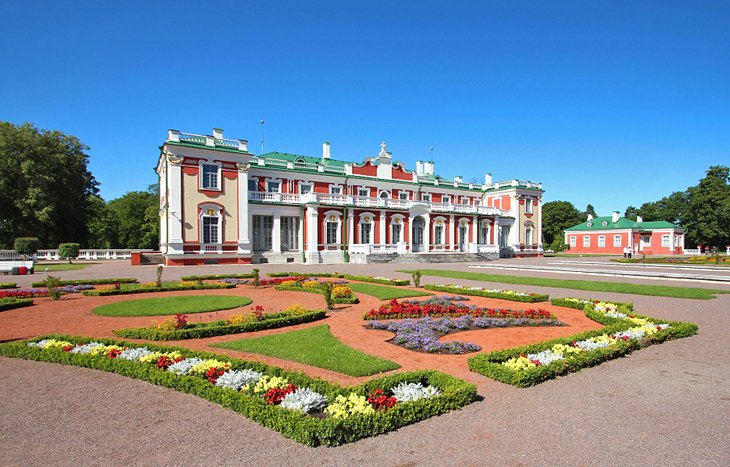
Aleksander Nevski Katedraali isn't the only remaining artifact of Russian influence in Tallinn. You can also see it at Kadriorg Park and the palace within it, both commissioned by Czar Peter the Great for his wife Catherine, in 1718.
About four kilometers east of Tallinn's Old Town , the lush 70-hectare expanse is the go-to place for a heavy dose of nature therapy in the city. Tourists will see blooming flower beds laid out in geometric patterns , a luxurious swan pond, a serene Japanese garden , and an English landscape park with an oak grove.
More than just nature, the park is also home to a few impressive structures, the most notable of which is the Kadriorg Palace. Built as an imperial summer palace in the early 18th century, the elegant three-level building was inspired by Italian palaces of the time and now houses the Estonian Art Museum 's collection of foreign works from the 16th to the 20th centuries. North of the palace, you can see the Office of the President of the Republic , a salmon-pink, Neo-Baroque building where the Estonian president works.
Address: August Weizenbergi tänav 10, Kesklinna linnaosa, Tallinn
Official site: http://www.kadriorupark.ee/park-eng/areas-of-the-park
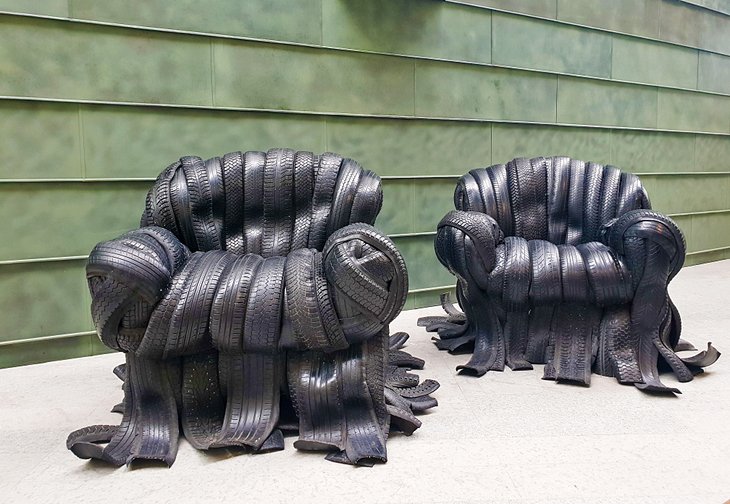
After you've had your fill of Kadriorg Park, stroll over to the Kumu Art Museum, an award-winning institution that serves as the headquarters of the Estonian Art Museum. It houses a vast collection of contemporary art and serves as a multifunctional space for educational programs and events.
The main permanent exhibition on the third floor offers tourists the opportunity to see Estonian art classics from the 18th century to the conclusion of World War II. Featured artists include Johann Köler, Kristjan Raud, and Konrad Mägi . The works are laid out in such a way that tourists can see how local art styles changed in parallel with the Estonian mentality.
On the fourth floor, a more recently opened part of the permanent exhibition focuses on Estonian Art during the Soviet Era . The collection dives into the many complexities of producing creative works under the strict rules of the Communist Party, as well as the changes that occurred as restrictions on art eased toward the 1980s.
You can also see how Estonian art evolved in the 1990s after the fall of the Soviet Union in another permanent exhibition on that floor.
The permanent collections give tourists plenty to ponder, but should you want an even deeper immersion in local art, check out the museum's fascinating temporary exhibits, which explore a variety of mediums and expressions.
Address: August Weizenbergi tänav 34, Kesklinna linnaosa, Tallinn
Official site: https://kumu.ekm.ee/en/
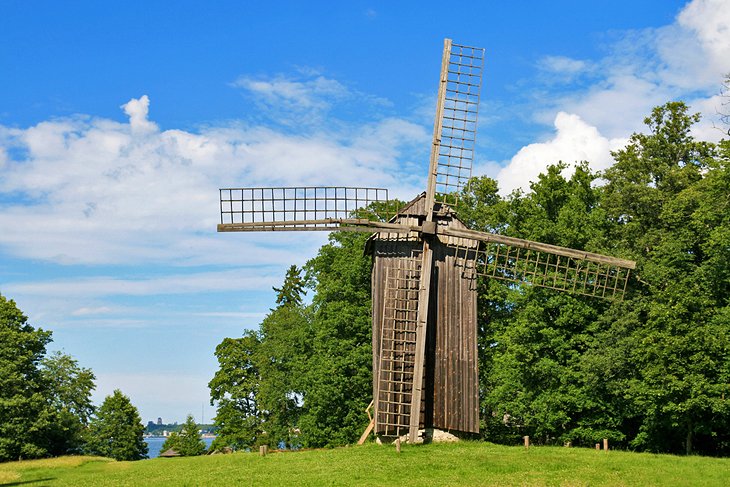
Experience the lifestyles of Estonians from hundreds of years ago at the Estonian Open Air Museum. Located in the seaside area Rocca al Mare , a 20-minute drive from the heart of Tallinn, this year-round, outdoor, educational attraction includes 14 farms that recreate the way rural Estonian villagers and fishing communities lived from the 18th century to the 20th century.
Tourists can wander through many of the 74 buildings scattered around the 72-hectare property. You'll see a traditional school house, seaside fishing sheds, historic homes, a fire station, and windmills, many of which were plucked from their original villages and brought to Tallinn.
When you work up an appetite, head to the authentic inn to refuel with heritage dishes, like wild mushroom soup, rye bread with salted herring and cottage cheese, and mashed potatoes with pan-fried meat and groat (hulled kernels of cereal grains). Tourists can also take part in fun activities from yesteryear, including folk dances, midsummer bonfires, and horse and cart rides.
Address: Vabaõhumuuseumi tee 12, Haabersti linnaosa, Tallinn
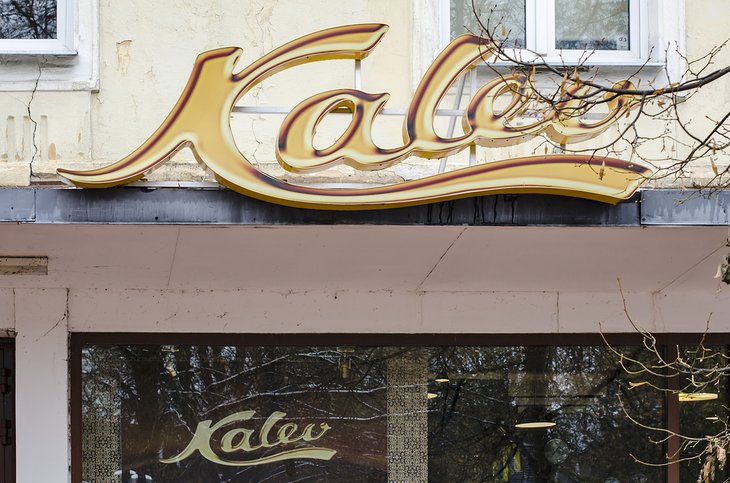
Marzipan, as with many traditional foods, has a disputed history. While some point to Germany as the birthplace of the almond sweet, others believe it was invented in Tallinn by a man who worked at the Raeapteek pharmacy.
What's not up for debate, however, is the best place to try marzipan in Estonia today: Kalev Chocolate Shop and Workshop. Located in the historic Rotermann Quarter , this sweets shop puts together tempting gift boxes of marzipan and handmade chocolates, along with quirky marzipan figures in animal shapes.
The shop also invites tourists to strap on an apron and try their hand at making their own treats in the workshop. This is a fun thing to do in Tallin if you have the time. The two-hour hands-on classes are guided by a master confectioner who will show you how to make chocolate truffles and mold and paint marzipan using centuries-old techniques. Don't be surprised if you eat as many sweets as you end up taking home at the end of this creative experience.
The Kalev Chocolate Shop and Workshop is just a short walk from the Port of Tallinn. If you're just visiting the Estonian capital on a cruise or day trip from Helsinki , you can easily squeeze in a class at the sweets shop, making your short experience even sweeter.
Address: Roseni tänav 7, Kesklinna linnaosa, Tallinn
Official site: https://kalev.eu/#73382
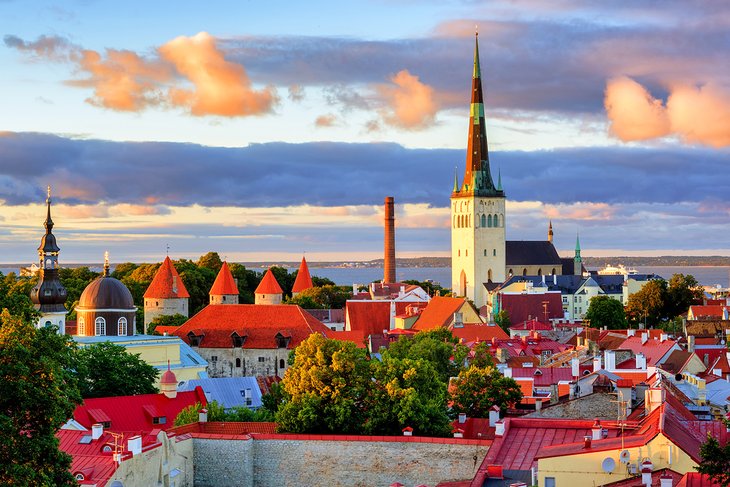
With its 124-meter steeple, St. Olaf's Church is Tallinn's tallest medieval structure . But more than just an eye-catching site, the attraction also has a fascinating history. It is believed to have been built in the 12th century as the center for the city's Scandinavian community before Denmark took control of Tallinn around 1219.
Fast forward a few centuries to the Cold War, and the church took on a new purpose as a radio and surveillance center for the Soviet KGB . Historical records also note that the church has been struck by lightning a whopping 10 times, three of which set the structure ablaze. A Baptist congregation now uses the church for regular services.
Tourists are welcome to visit the modest Gothic interiors and get great views of the city from its observation platform. Be sure to wear comfortable shoes to climb the 232 steps to the top of the steeple!
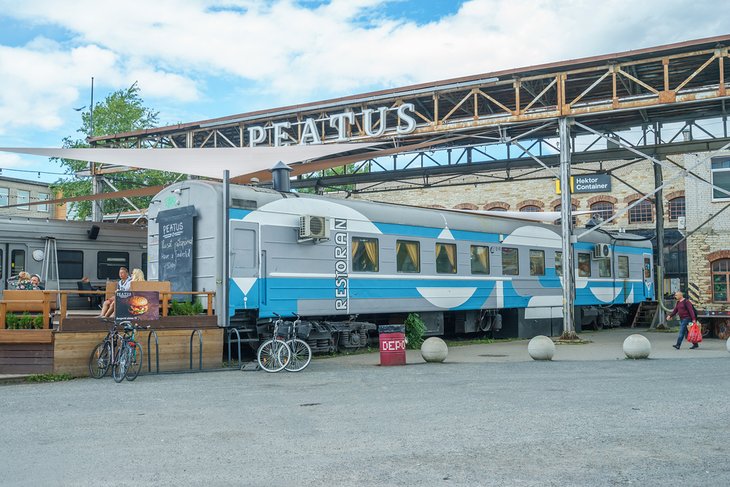
A 15-minute walk northwest of Tallinn's Old City brings you to one of the coolest places to visit in Estonia: Telliskivi Creative City. Located in what used to be Tallinn's industrial area, this "town within a town" brims with more than 200 businesses across its 10 buildings .
The Creative City's indie shops offer something for just about everyone, including sustainably-made leather bags, locally thrown ceramics, chic homewares, and vinyl records. You can also visit popular cultural attractions, including the Fotografiska photography museum; Sõltumatu Tantsu Lava contemporary dance theater; and the Juhan Kuus Documentary Photo Centre , which focuses on Estonian documentary film and photography.
Before leaving, be sure to grab a scoop or two from La Muu Ice Cream Shop. It offers more than 20 flavors of organic ice cream, including cookies and cream, peppermint stracciatella, and vegan brownie.
Address: Telliskivi 60a, 10412 Tallinn
Luxury Hotels:
- Right in the heart of Tallinn, where the downtown meets the medieval old town, the Savoy Boutique Hotel by TallinnHotels is a great 5-star pick if you're looking for an intimate boutique sleep. The hotel has an elegant vibe throughout, and the rooms are comfortable and spacious. Staff is very attentive. Amenities include a restaurant, free Wi-Fi, airport transport, and a concierge.
- At one time serving as an Estonian Telegraph Company exchange station, today the Hotel Telegraaf is a charming 5-star hotel. The building dates back to 1878, and the ambience is old-world European. Rooms and suites have plush furnishings and high ceilings with chandeliers and crown molding. Amenities here include a day spa and a restaurant serving Russian fare. The location in the heart of Old Town is also excellent, and this is the only property in this area to have an underground parking lot for guests.
- The Schlössle Hotel is another luxury option. On cobbled Holy Spirit Street between the old harbor and Old Town Square, the hotel has a historic ambience and features elegantly outfitted rooms and suites. Breakfast is included in the rate, and there is an on-site restaurant. In the summer there is live music in the courtyard terrace area. This property is also pet-friendly should you be traveling with a dog, but you must pay a pet fee and a deposit.
Mid-Range Hotels :
- Centennial Hotel Tallinn is an excellent mid-priced option. The hotel is located about seven minutes by foot from Old Town and is a new property. The rooms and suites are decorated in Nordic minimalist style and have mural accent walls. Amenities here include a free breakfast, sauna, and 100-seat restaurant. The Centennial Hotel is also kid-friendly.
- Next to Freedom Square, the 4-star Palace Hotel dates back to 1937. Designed by a famous Estonian architect, today it has a historic facade and a modern interior design. On-site amenities include a restaurant, steam bath and sauna center, and a fitness center. There is also an indoor swimming pool.
- Hilton Tallinn Park is another mid-range choice. It is located at the edge of Politseiaia Park and has great views of the Old Town and harbor from its modern rooms and suites. The property is family-friendly, and amenities include a restaurant, indoor swimming pool, and workout room. There is also a spa on-site and a sauna and steam room.
Budget Hotels :
- With a very affordable price point, the Hestia Hotel Seaport is a popular budget choice. Located next to the Port of Tallinn and not far from Old Town, it has cozy rooms with eco-friendly cork floors. Breakfast is included, and there is a restaurant and sauna on-site. Car hire can also be arranged here.
- Also try the Dorell Hotel for a budget option. The hotel has tidy rooms with blackout curtains. It is also kid-friendly with family rooms. Amenities include free breakfast, an outdoor swimming pool, sauna, and free Wi-Fi.

Travel Guide Estonia
Book your individual trip , stress-free with local travel experts
Select Month
- roughguides.com
- Travel guide
- Local Experts
- Travel Advice
- Accommodation
Plan your tailor-made trip with a local expert
Book securely with money-back guarantee
Travel stress-free with local assistance and 24/7 support
Visitors to Estonia encounter a mix of urbanity and wilderness, of the medieval and the contemporary, with crumbling castles and colourful design permeating urban landscapes. An efficient transport system makes it easy to get around, and the tech-savvy, dynamic residents welcome visitors with open arms. Friction between older generations of Russians and Estonians is a throwback to the Soviet era, while younger people mix freely, and those who get past the Estonians’ natural reserve find them to be gregarious, uninhibited hosts.
Where to go in Estonia
Travel ideas for estonia, created by local experts.

5 days / from 1403 USD
City hopping in Finland and Estonia
Helsinki enchants with its blend of modernity and nature, entertainment and tranquility accessible everywhere and all the time. Turku, in turn, was the first capital of Finland, and has a lot to teach about the Finnish History. Tallinn, the capital of Estonia, is not behind in terms of heritage.

10 days / from 1053 USD
Sustainable Baltic Capitals
Enjoy introductory tours and ample free time to suit your interests. In ten days, relish local accommodations, UNESCO town walks, quirky neighborhoods, and private guide tours, delving into the region's history and customs. Start your Baltic States adventure now for independent exploration.

16 days / from 3996 USD
Ultimate Baltics
Uncover both renowned attractions and hidden gems across the Baltic States and Southern Finland. Explore UNESCO sites, serene villages, and sandy dunes. From the capital cities of Vilnius, Riga, Tallinn and Helsinki to the beaches in Klaipeda in Pärnu.

10 days / from 1674 USD
Baltic Highlights
Witness unspoiled landscapes and vibrant capitals. From Vilnius to Riga and Tallinn, move all the way up to Helsinki. Along the way, visit national parks like Laheema and castles like the Trakai castle. Private transfers and unique accommodation choices are included.
Estonia’s capital, Tallinn, has a magnificent medieval centre and lively nightlife, rivalled only by that of Tartu, an exuberant university town. Pärnu, a popular seaside resort, is also worth a short visit. For inexpensive spa treatments, a fine castle and unspoilt countryside head for the island of Saaremaa, while Lahemaa National Park, outside Tallinn, offers a taste of pristine wilderness.
Discover more places in Estonia

- Population 1.3 million
- Area 45,227 sq km
- Language Estonian
- Currency Euro (€)
- Capital Tallinn
- International phone code t 372
Top image: Tallinn, Estonia © ESB Professional/Shutterstock
Travel advice for Estonia
From travel safety to visa requirements, discover the best tips for traveling to Estonia
- How to get to Estonia
- Culture and Etiquette in Estonia
- Eating and drinking in Estonia
- Getting around Estonia: Transportation Tips
- Sports and Outdoor activities in Estonia
- Travel Tips Estonia for planning and on the go
- Best time to visit Estonia
The Rough Guides to Estonia and related travel guides
In-depth, easy-to-use travel guides filled with expert advice.

Find even more inspiration here

Planning your own trip? Prepare for your trip
Use Rough Guides' trusted partners for great rates
written by Rough Guides Editors
updated 26.04.2021
Ready to travel and discover Estonia?
Get support from our local experts for stress-free planning & worry-free travels.
- Where to stay
- Travel advice
50 Amazing Things to Do in Estonia
Estonia is one of Northern Europe’s best kept secrets. This small country is tucked away between Finland and Latvia on the border of Russia.
From magnificent art to the sites of some of the world’s most impressive breakthroughs, this country has so much to do and see.
Let’s head on over to Estonia to explore the best things to do in Estonia.
Book your flight to Tallinn today.
Things to Do in Estonia
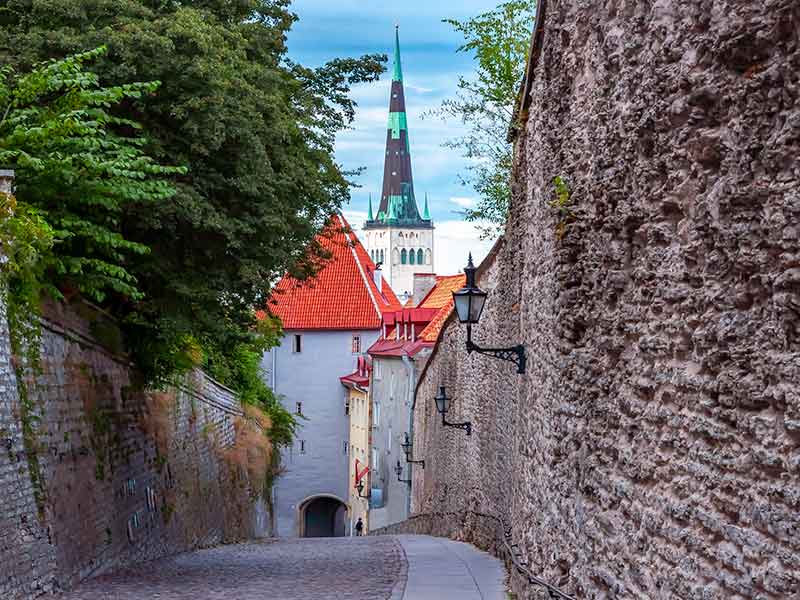
Estonia was a part of the USSR until 1991 when it gained its independence. Because of this. some of the most interesting things in Estonia are the remains and traces of war and the Soviet soldiers which help bring history to life.
From the rich history to the interesting art to the cool culture, Estonia is a wonderful destination for your holiday.
Check out some of the most amazing things to do in Estonia so you can plan your trip the right way!
1. Visit the Underwater Prison
Location : Ruumu
The Soviet’s old Underwater Prison in Ruumu is by far one of the most amazing places in all of Estonia. This abandoned prison is now a favorite spot of many divers and lovers of adventure. If you’re in Estonia during the warmer months, you absolutely have to arrange for a dive at this prison.
2. Explore an Abandoned Missile Hangar
Location : Türisalu
Abandoned sites are always a blast, especially when they were previously used as a missile hangar. The abandoned missile hangar in Türisalu is proof that they Soviets have left their mark all over Estonia.
3. Stop by the Estonian “Eiffel Tower”
Location : Reigi
Who needs to go to Paris when you have the fabulou Estonia? Jaan Alliksoo created his own version of the famous French Eiffel Tower. His creation was named after the original and is still known as “ Hiiumaa Eiffel Tower .”
4. See Tallinn’s Protector
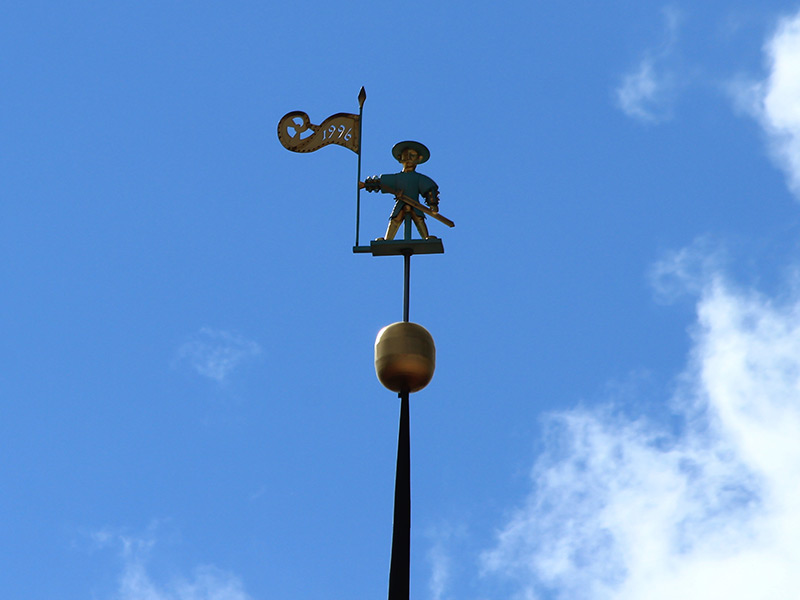
Location : Tallinn
Old Thomas, which is English for “ Vana Toomas ,” is thought to be the guardian of Tallinn, has an adorable story. This boy, whose mother was a fisherman, had such a good shot that the city guards asked him to join their squad when he was a young teen.
5. Visit the Türisalu Cliff
The Türisalu Cliff is one of Estonia’s most beautiful and impressive nature objects on the Northern Estonian coast. Popular spot for rappelling activity and for enjoying the Northern Lights in the vinter period.
6. Eat Your Way Through Estonia
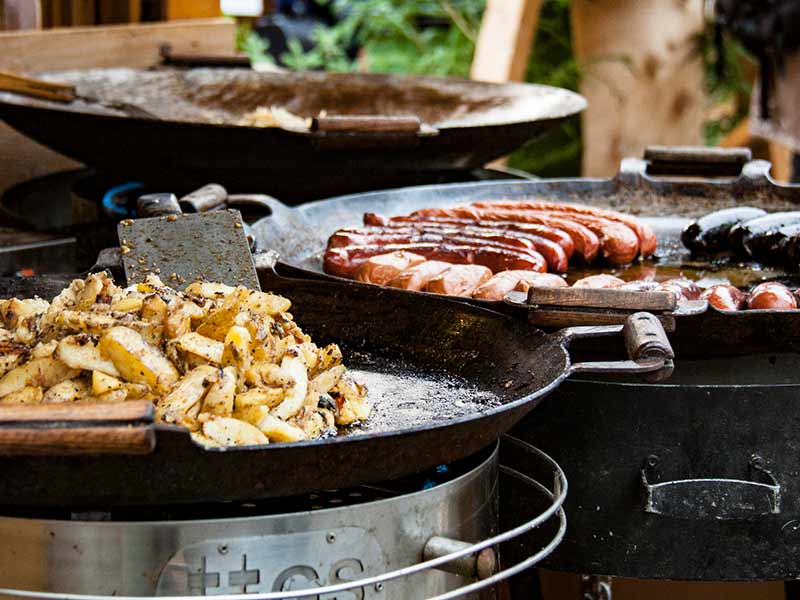
Cuisine is a phenomenal way to get to know a new city and culture. One of most popular food in Estonia is rye bread.
Check out some of the best places to eat in Estonia!
Best Places to Eat in Estonia
- Barrel Street Food
- Golden Piglet Inn
- Leib Restoran
7. Fall in Love All Over Again at Pärnu Seawall
Location : Pärnu
Want to hear a lovely legend? If you walk to the end of the jetty at Pärnu Seawall , you are bound to love the person you’ve walked with forever. Wouldn’t it be sweet if this story was true?
8. Learn About Estonian History at Noora
Location : Tartu
Want a first hand source of Estonian history? Stop by Noora , Estonia’s national archives headquarters.
9. Visit the Ruhnu Lighthouse
Location : Ruhnu
The Ruhnu Lighthouse offers an absolutely magnificent sight. It is located on the small island of Ruhnu, which is right off of the coast of mainland Estonia.
10. Admire Estonia’s Brown Bears
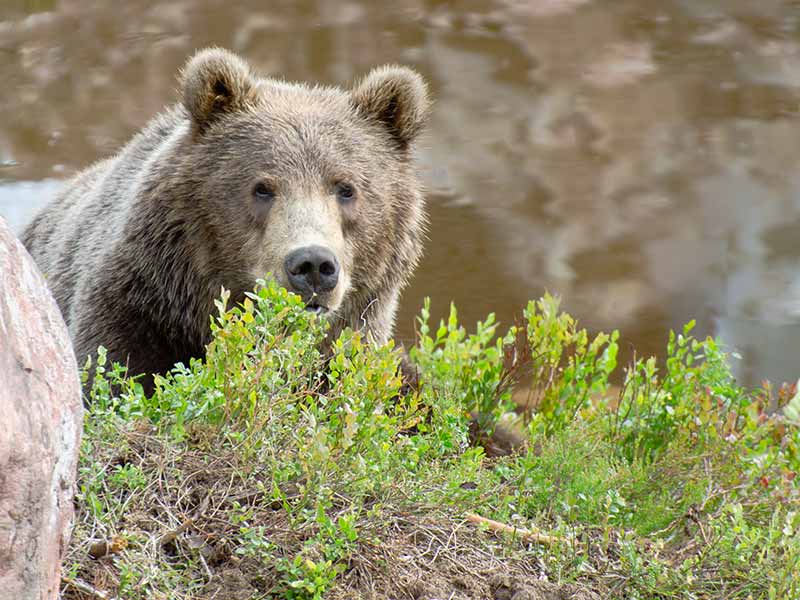
Location : Palasi
Brown bear watching hides are one of the coolest ways to get up close and personal with nature. These little cabins were designed so that visitors could hang out and view the brown bears safely.
11. Stop by the Bronze Soldier Statue
The Bronze Soldier Statue in Tallinn is heavily guarded because it is one of the most controversial spots in all of Estonia. This statue is a symbol of Estonian liberation, so it has angered the Russians over the years.
12. Search for the Graves in Madise’s Lost Cemetery
Location : Madise
The Madise Lost Cemetery isn’t completely lost, but some of the graves are. Make it your mission to find some of the lost graves in this old cemetery. Be sure to navigate the grounds with respect to the dead that lie beneath your feet.
13. Learn About the Cold War at the Tartu KGB Museum
Estonia is full of museums relating to the USSR, Soviet soldiers and the KGB. The KGB Museum in Tartu exhibits the cells that the KGB members lived in.
14. Have a Bowl of Soup in Supilinn
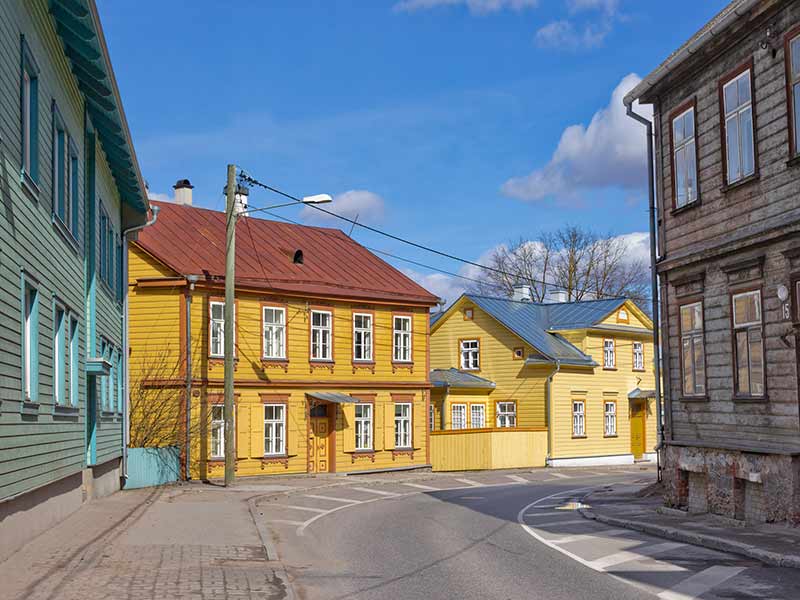
Supplinn, which translates to “Soup Town,” is one of the smallest towns in Estonia. The population isn’t quite 2000!
While you could surely find a bowl of soup in this neighborhood, this delicious dish isn’t how its name originated. It is quite silly, in fact! Each of the major streets is named after a delicious type of soup.
15. Explore the Tree Crosses in Rosma Forrest
Location : Põlva Parish
The Rosma Forest is filled with mysterious crosses engraved into trees. Spend your day exploring the woods and trying to discover connections between the mysterious symbols. Prepare for an adventure with a bit of imagination.
16. Ride Out to Kihnu Island
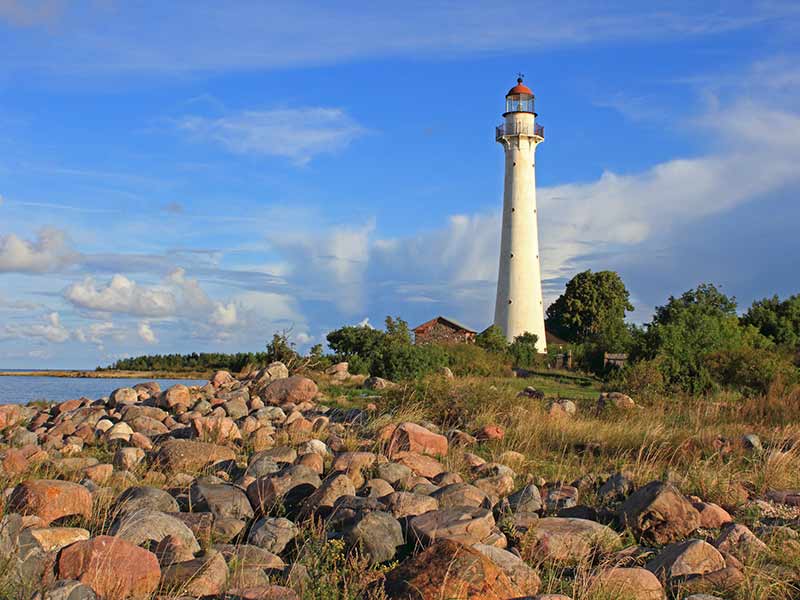
Location : Rootsiküla
Kihnu Island is a baby island off the coast of Estonia. This little island has a museum , lighthouse and more fun activities. It offers a great way to spend your afternoon.
17. Step into the Kingdom of Torgu
Location : Laadla
It’s all fun and games until a clerical error brings a fantasy land to life. This is what happened in the Kingdom of Torgu. Since this small area was mistakenly left out of the country’s constitution upon gaining independence, a joke of a monarchy was set in place.
18. Visit the Meteorite Crater Field

Location : Kaali
What better place to house an entire cult than a crater field? The Meteorite Crater Field of Kaali is believed to have been the home of an ancient cult due to animal skeletons that were positioned in a fashion indicative of sacrifices.
19. Feel the Magic Tuhala Witch’s Well
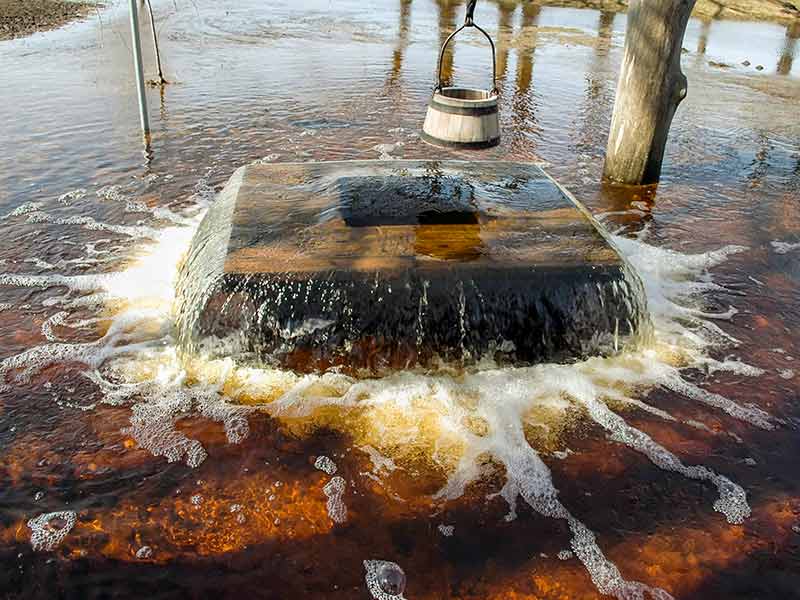
Location : Kose Parish
If you want to stop by a spookier attraction, head to the Tuhala Witch’s Well . This small geyser comes and goes from time to time. Is it magic or is it rainfall? Some may never know.
20. Learn How to Measure the Earth at the Struve Geodetic Arc
The Struve Geodetic Arc is a tool used to measure the size of the earth. It uses a collection of reference points to collect its data. This system is one of Estonia’s most impressive scientific accomplishments.
21. Honor the Dead at Vormsi Cemetery
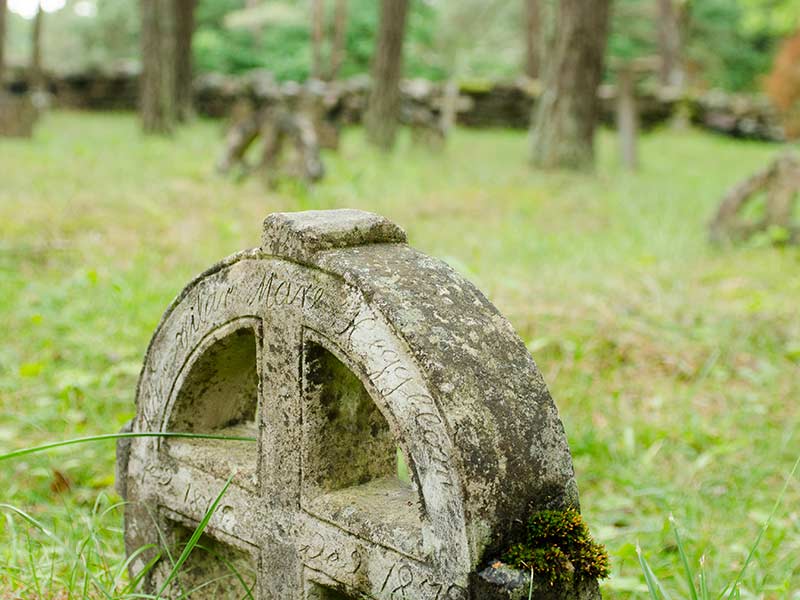
Location: Hullo
Estonia is full of famous cemeteries, but the Vormsi Cemetery is one of the most notable. Its array of cross shapes and grave markers are what makes it so unique.
22. Learn of the Ungru Manor’s Tragic Love Story
Location : Ridala Parish
According to legend, the Ungru Manor was created by a prince who yearned to marry a delightful princess who didn’t want to leave her father’s castle. The prince had the Ungru Manor built as a replica so that the princess could enjoy a copy of her father’s castle for the rest of her life.
When the prince returned to take the princess’s hand in marriage, he was informed that the young lady had passed away.
23. Make Your Way to the Top of the Tallinn Teletorn
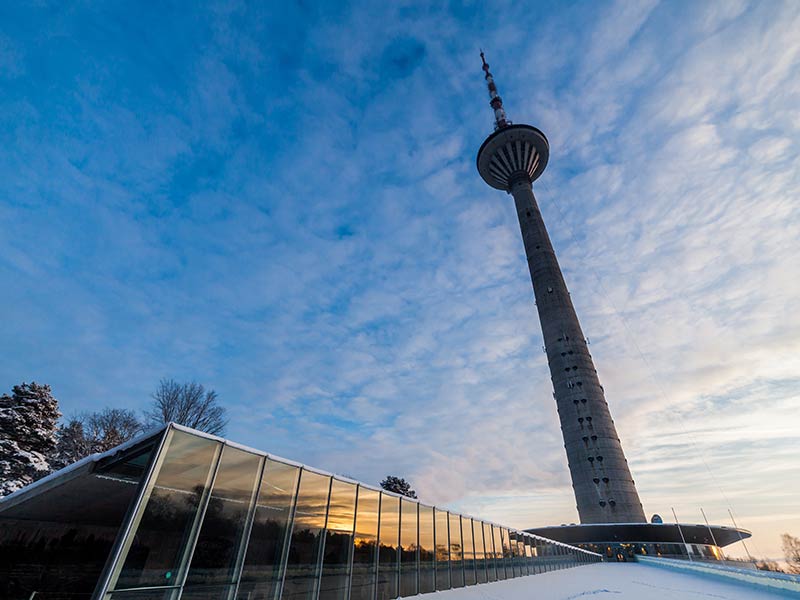
The Tallinn Teletorn , which is “TV Tower” in English, offers one of the best 360 degree views of Tallinn. You can go the whole way to the top of the tower, which is 22 stories off the ground, to see the beautiful city.
24. Visit the 2015 Tree of the Year
Location: Orissaare
Did you know there was such thing as the European Tree of the Year Award? In 2015, the Orissaare Oak was the lucky winner of this award. You can’t miss this famous tree!
25. Jump Back in Time at the Military Remains of Hiiumaa
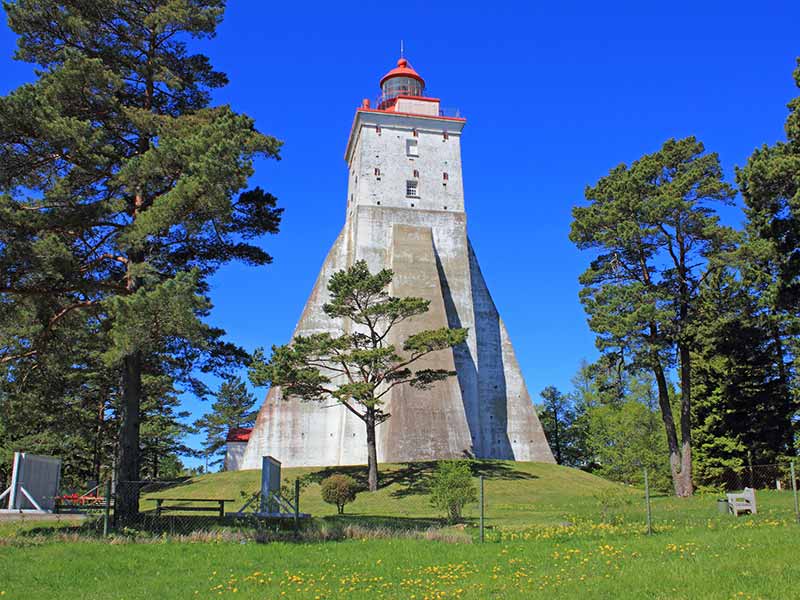
Location : Tahkuna
The Hiiumaa Military Museum is home of some of the oldest Soviet artillery. Some describe it as “the best military collection” in Estonia. If you are into war and history, you’ve got to stop by this museum. They’re open every day but Monday!
26. Move On Over to the Museum of Soviet Vehicles
Location : Järva-Jaani
Although Estonia is an independent state today, the Soviets are still deeply ingrained in the Estonian history and culture. The Museum of Soviet Vehicles houses an awesome collection of vehicles that the Soviets used many moons ago.
27. Appreciate the Art of the Lasva Water Tower
Location : Lasva
The Lasva Water Tower once operated as fully functioning water tower, but today is serves as a super unique art gallery. This empty tower houses rotating art exhibits. This is by far one of the coolest places in Estonia.
28. See the Remains of one 1980 Olympics Venue
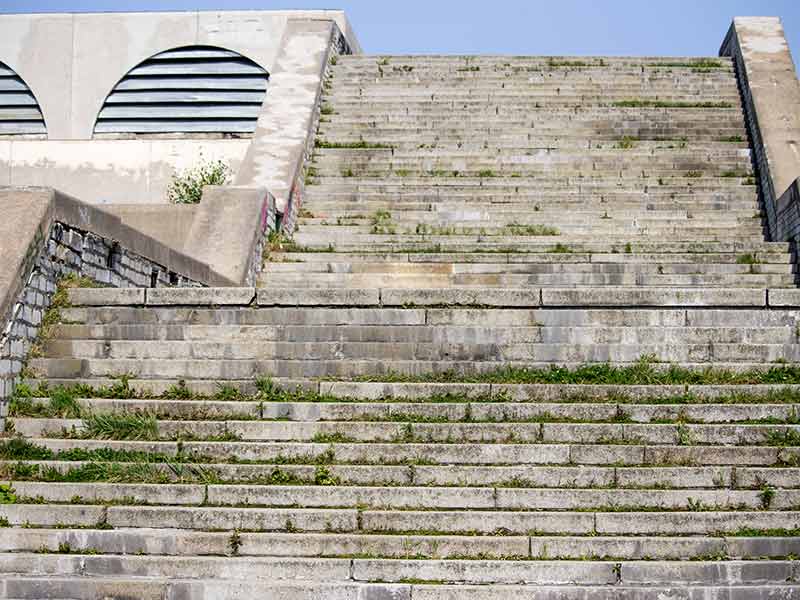
The 1980 Olympics was held in Moscow, but since Estonia was part of the USSR, the Tsar commanded that an additional arena must be quickly built. This building was named Linnahall .
The poor planning of this venue only took a could decades to notice. This venue is less than 40 years old and is deteriorating relatively quickly.
29. Say a Prayer or Make a Wish at the Hill of Crosses
Location : Hiiu Parish
The hill of crosses is thought to be one of the luckiest places in Estonia. You can go here to make a wish or say a prayer for good fortune.
30. Visit the Sacred Peko
Location : Jumalamägi
Peko is the Seto god of fertility. He has a magnificent statue on the top of Jumalamägi, which translates to “god’s hill.” This statue is a place where locals go to revitalize their energy.
31. Take a Walk Through the Man Made Sand Caves

Location : Piusa
Book your visit to the Piusa Sand Caves . These man made sand caves serve as the home of thousands of little bats. You don’t want to miss this experience.
32. Listen to the Music of Nature on Loud
Location : Varstu Parish
The Pähni Megaphones are a cool place to take a breather in the woods of Võru County. If you sit in these wooden megaphones, you can hear the amplified harmony of the nature around you.
33. Explore the Kohtla Mining Park
Location : Kohtla-Nõmme
The Kohtla Mining Park is not your average attraction. You can hike or ride your way around the mines, but either way, it will be an experience like no other.
34. Drive Over to the Hara Submarine Base

Location : Hara Harbor
If you’re looking for a cheap but wonderful attraction, the Submarine Base at Hara Harbor is the place for you! If you plan ahead, you can book a submarine adventure experience.
35. Admire the Art at Ichthus Art Gallery
The Ichthus Art Gallery is one of the coolest art galleries in the whole world. This gallery is housed in the basement of a medieval building and all of the art is by the man who rents the space. There is no set fee to enter, but it is asked that you leave a donation.
36. Feel the Breeze of the Ninase Windmills
Location : Mustjala Parish
Windmills are used as a source of clean energy around the world, but the Ninase Windmills simply serve as an icon of Estonian culture
37. Drive Through a Kilometer of Russia on the Saatse Boot
Location : Värska
The Saatse Boot is one of the strangest destinations in Estonia. It is a chunk of an Estonian road that dips into Russia for less than a kilometer.
Instead of putting up a border control station, the Russians decided that Estonians could continues to use this road as long as they never traveled by foot, kept their cars moving and didn’t pick mushrooms.
38. Be Wowed at the Seaplane Harbour
The Seaplane Harbour is one of the world’s most exquisite maritime museums. It is equipped with revolving exhibits and areas that are perfect for the whole family.
39. Indulge in the Eclectic Art of Glehn Park
Glehn Park is on the grounds of an old estate that was designed by the owner of the property. In addition to an interesting home, the man created an interesting collection of artwork to grace the lands.
40. Get Spooked at Tallinn’s Haunted Guest House
Legend has it that the Devil got married in Tallinn. A cloaked man is said to have requested to rent a room in a house that belonged to a man who was struggling financially. The homeowner agreed because the small chunk of change would help him pay his bills.
The cloaked man asked for privacy, but the man spied through the keyhole. The spying man was found withering away the next day and the only thing he could utter before he took his last breath was that he witnessed the Devil’s wedding.
41. Admire the Dance of Death
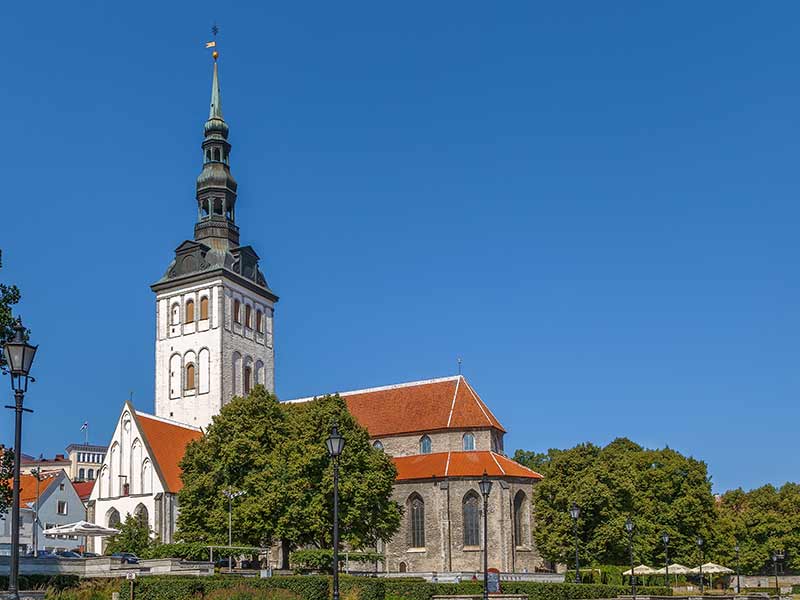
Danse Macabre, which translates to “Dance of Death,” is a beautiful 15th century painting located in St. Nicholas Church in the nation’s capital.
42. Visit the Old Observatory
The Old Observatory at Tartu is the first reference point of the Struve Geodetic Arc. The Arc is a large spanning tool that was first used to find the size of the earth, so that makes this attraction particularly important.
43. Street Race at Haapsalu Airfield
…or maybe just watch!
The abandoned Haapsalu Airfield was once used by small Soviet fighter planes, but it has not seen an aircraft in many years. The airfield is now used for street racing. While it might be fun, you probably should just watch instead of drag racing your rental car.
44. See the Coats of Arms at The Saint Mary’s Cathedral
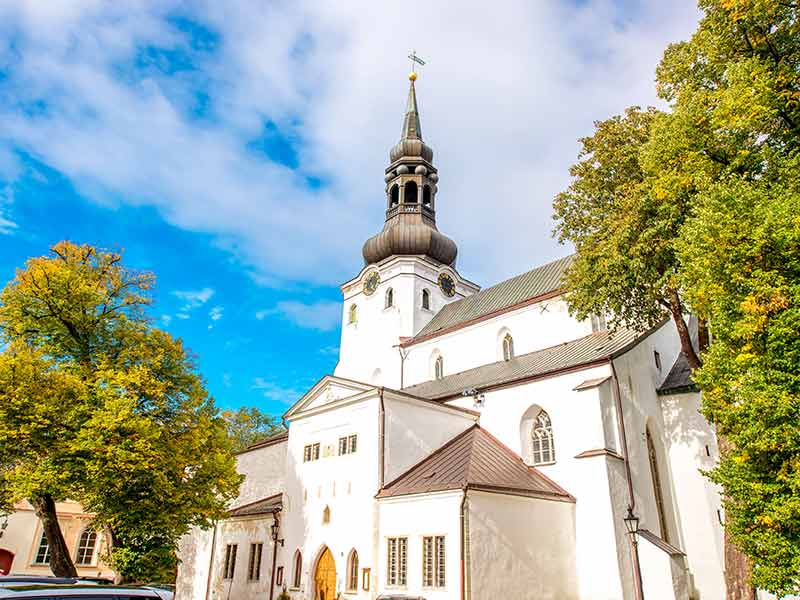
The Cathedral of Saint Mary in Tallinn has an interesting feature: a wall of coats of arms. While most churches are decorated with stained glass and religious symbols, this dome church is decked out in symbols of the nobel people that are buried on the church grounds.
45. Examine the Extinct Aurochs Statue
Location : Rakvere
The Aurochs is a large animal that once graced the lands of Europe, North Africa and Asia. To celebrate the 700th anniversary of Rakvere, an Estonian town, a giatn statue of an Aurochs was raised.
46. Explore the Nation’s Capital

Tallinn is certainly the center of Estonian culture. It is full of museums and activities that will help you learn about the country’s rich history. You’ve got to start your journey around Estonia with this seaside city.
47. Stop by the KGB Museum at the Viru Hotel
Tallinn’s KGB Museum is quite unique. It is located at a hotel that used to house KGB officers during the 1970s. Here, you will hear stories of the Soviet Union and how the history of the hotel has been shaped by some unwelcome guests.
48. Check out the Unique Graves at Ämari Pilots’ Cemetery
Location : Ämari
Many fallen Soviet soldiers lie in this interesting looking cemetery . The graves are decorated with large red stars. Many of the headstones are accompanied by the tail wings of actual planes.
49. Honor Karl Ernst von Baer at His Famous Statue
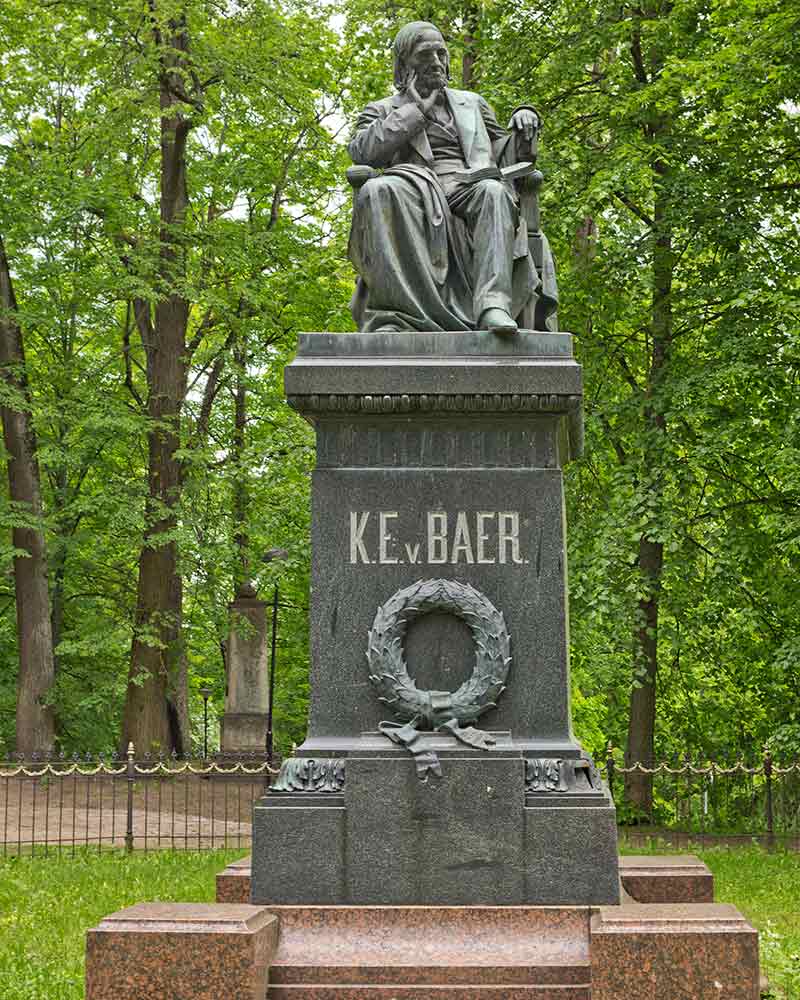
Stop by the statue that honors revolutionary biologist, Karl Ernst von Baer, who was an Estonian native. His most notable accomplishment was as a trailblazer in the science of descriptive and comparative embryology.
50. See the Sphere in the Science Center
Location: Tartu
The World’s Largest Hoberman Sphere is located in an Estonian Science center. The Estonians have made some great contributions to modern science.
Admission to the Science Center is very affordable. Be sure to add admission to the planetarium to your reservation when you book online !
Our Tours to Estonia
Hekla has a few tours that make stops in the beautiful Estonia. Since this country is so small, it is often lumped into larger nordic or Scandinavian tours.
- Baltic Highlights Light – 8 Day Tour
- Baltic Adventure – 16 Day Tour
- Baltic Lifestyle – 11 Day Tour
Explore all of our wonderful Northern European tours .
Other Helpful Travel Guide
When you’re in Northern Europe, it would be a shame to begin and end your travels with Estonia. Estonia is a wonderful place to visit, but the great Northern Europe offers so much more.
We’ve created a few travel guides to make planning your trip a breeze. Check out some of our favorite destinations.
- Reykjavik, Iceland
- Copenhagen, Denmark
- Stockholm, Sweden
- Oslo , Norway
- Riga , Latvia
Where else would you like to go?
Contact us today to learn about all of the places that you can go with Hekla.
Visit Estonia
Estonia is often overlooked by travelers who are out to explore Europe. Since it is less than 30 years old, it’s understandable that people do not recognize its name, but it certainly deserves more recognition!
It is clear that there are so many amazing things to do in Estonia. A trip to Estonia could be the holiday of a lifetime.
Are you ready to visit this wonderful country?

- Protected: Springs med produkter November 24th, 2023
- Protected: Test 7 January 8th, 2021

- No comments have been published yet.
Share This Story, Choose Your Platform!
- Tips & Planning
- Travel Product
7 Top-Rated Tourist Attractions in Kansas for 2024
7 top-rated tourist attractions in michigan for 2024, 7 top-rated tourist attractions in new hampshire for 2024.
10 Best Places to Visit in Estonia in June 2024
Estonia, a hidden gem nestled on the eastern shores of the Baltic Sea, offers a captivating blend of natural beauty, rich history, and vibrant culture. With its charming medieval towns, pristine beaches, and lush forests, Estonia enchants travelers with its unique allure. June, with its long daylight hours and pleasant temperatures, is an ideal time to explore this Baltic beauty. Dive into the heart of Estonia’s captivating charm with our guide to the 10 best places to visit in June 2024.
From the bustling streets of Tallinn to the serene shores of Saaremaa, Estonia’s diverse landscapes and cultural treasures promise an unforgettable journey. Immerse yourself in the medieval grandeur of Tallinn’s Old Town, a UNESCO World Heritage Site. Stroll along the cobblestone streets lined with pastel-hued buildings and admire the intricate architecture of ancient churches and guild halls. Ascend Toompea Hill for panoramic city views and delve into Estonian history at the Estonian History Museum.
Escape the urban hustle and retreat to the idyllic island of Saaremaa. With its pristine beaches, rolling dunes, and charming villages, Saaremaa offers a tranquil haven. Explore the island’s natural wonders at Sõrve Peninsula, a narrow strip of land renowned for its dramatic cliffs and picturesque lighthouses. Visit the ancient Kaali meteorite craters, remnants of a cosmic impact that occurred thousands of years ago, and marvel at the surreal landscape.
Venture into the heart of Estonia’s natural beauty at Lahemaa National Park, just a short drive from Tallinn. With its pristine forests, shimmering lakes, and cascading waterfalls, Lahemaa is a paradise for nature lovers. Hike through verdant trails, kayak amid serene waterways, and encounter diverse wildlife, including moose, wolves, and lynxes. Don’t miss the picturesque Viru Bog, the largest raised bog in Estonia, where you can witness the unique flora and fauna that thrive in this wetland ecosystem.
Experience the vibrant maritime heritage of Estonia in the historic port city of Pärnu. Stroll along the charming beach promenade, admire the elegant architecture of the old town, and soak up the lively atmosphere. Visit the Pärnu Museum to learn about the city’s rich history and maritime traditions. For a relaxing escape, indulge in a spa treatment at one of Pärnu’s renowned wellness centers and rejuvenate amidst the coastal serenity.
1. Tallinn Old Town
Step into a realm of medieval enchantment as you explore Tallinn Old Town, a UNESCO World Heritage Site. Wander through cobblestone streets lined with pastel-hued buildings, each whispering tales of Estonia’s rich history. Admire the intricate facades of ancient churches, such as St. Mary’s Cathedral and St. Nicholas’ Church, and delve into the fascinating stories they hold. Ascend Toompea Hill, the heart of Old Town, for breathtaking panoramic city views. Visit the Estonian Parliament and explore the medieval Toompea Castle, a testament to Estonia’s enduring spirit.
2. Saaremaa Island
Escape to the tranquility of Saaremaa Island, a haven of unspoiled beauty. With its pristine beaches, rolling dunes, and charming villages, Saaremaa offers a serene retreat. Explore the island’s natural wonders at Sõrve Peninsula, a narrow strip of land renowned for its dramatic cliffs and picturesque lighthouses. Visit the ancient Kaali meteorite craters, remnants of a cosmic impact that occurred thousands of years ago, and marvel at the surreal landscape.
3. Lahemaa National Park
Immerse yourself in the heart of Estonia’s natural beauty at Lahemaa National Park, just a short drive from Tallinn. With its pristine forests, shimmering lakes, and cascading waterfalls, Lahemaa is a paradise for nature lovers. Hike through verdant trails, kayak amid serene waterways, and encounter diverse wildlife, including moose, wolves, and lynxes. Don’t miss the picturesque Viru Bog, the largest raised bog in Estonia, where you can witness the unique flora and fauna that thrive in this wetland ecosystem.
Journey to the intellectual heart of Estonia, Tartu, a city renowned for its prestigious university and vibrant cultural scene. Explore the historic Old Town, with its charming cafes and independent boutiques. Visit the University of Tartu, one of the oldest and most respected universities in Northern Europe, and immerse yourself in its academic ambiance. Don’t miss the Tartu Art Museum, home to an impressive collection of Estonian and international art. Stroll along the banks of the Emajõgi River and enjoy the picturesque views as you delve into Tartu’s rich cultural heritage.
6. Viljandi
Discover the medieval charm of Viljandi, a picturesque town nestled amidst rolling hills and surrounded by shimmering lakes. With its well-preserved Old Town and ancient castle ruins, Viljandi transports visitors back in time. Explore the cobblestone streets lined with historic buildings and admire the intricate architecture of St. John’s Church. Ascend the Viljandi Castle ruins for panoramic city views and delve into the town’s fascinating history. Don’t miss the annual Viljandi Folk Music Festival, a celebration of Estonian folk music and traditions that attracts musicians and enthusiasts from around the world.
Venture to the easternmost corner of Estonia and uncover the historic city of Narva. Situated on the banks of the Narva River, which forms the border with Russia, Narva boasts a unique blend of Estonian and Russian influences. Explore the well-preserved Old Town, with its charming cafes and independent boutiques, and visit the Narva Castle, a testament to the city’s rich history. For a deeper dive into the region’s past, visit the Narva Museum, which showcases the city’s cultural and historical heritage.
8. Haapsalu
Escape to the charming coastal town of Haapsalu, renowned for its mud baths and picturesque old town. With its historic wooden buildings and narrow cobblestone streets, Haapsalu exudes a timeless charm. Visit the Haapsalu Castle, once home to the Bishop of Ösel-Wiek, and explore its fascinating history. Indulge in a relaxing mud bath at one of Haapsalu’s renowned spas and experience the therapeutic benefits of the region’s natural mud. Don’t miss the Haapsalu Lace Days, an annual festival celebrating the town’s centuries-old tradition of lace making.
9. Kihnu Island
Embark on a journey to the enchanting island of Kihnu, a UNESCO World Heritage Site. With its pristine beaches, traditional wooden houses, and vibrant cultural traditions, Kihnu offers a glimpse into a bygone era. Explore the island by bike or on foot, immersing yourself in its unspoiled beauty. Visit the Kihnu Museum to learn about the island’s unique history and traditions, including its centuries-old female-dominated society. Don’t miss the chance to experience the vibrant Kihnu folk culture, characterized by traditional music, dance, and costumes.
10.Hiiumaa Island
Escape to the tranquil embrace of Hiiumaa Island, a haven of natural beauty and historical charm. With its rugged coastline, pristine forests, and picturesque villages, Hiiumaa offers a serene retreat. Explore the island’s natural wonders at Käina Bay, a haven for birdwatchers, and hike through the lush forests of Hiiumaa National Park. Visit the Hiiumaa Museum to delve into the island’s rich history and cultural heritage. Don’t miss the chance to witness the traditional Hiiumaa sheep, known for their distinctive markings and friendly nature.
Estonia is a vibrant tapestry of cultures, where ancient traditions intertwine with modern influences. From the medieval grandeur of Tallinn Old Town to the folk traditions of Kihnu Island, Estonia’s rich cultural heritage is evident in every corner of the country. Immerse yourself in the Estonian language, a unique Finno-Ugric tongue, and discover the country’s fascinating history, shaped by centuries of Viking, German, and Russian influences.
Best Months to Visit
Estonia’s best months to visit stretch from May to September, when the weather is at its most pleasant. June, in particular, offers long daylight hours, with the sun setting well after 10 pm, providing ample time to explore the country’s natural beauty and cultural attractions. The average temperature in June ranges from 15 to 20 degrees Celsius (59 to 68 degrees Fahrenheit), making it ideal for outdoor activities.
Nearby Transportation
Estonia is easily accessible by air, sea, and land. Tallinn Airport (TLL) offers regular flights to major European cities, while ferry services connect Estonia to Finland, Sweden, and Russia. Once in Estonia, a well-developed public transportation system, including buses, trains, and ferries, makes getting around the country convenient and
Nathan David is a passionate traveler and an avid writer who delights in sharing his global adventures through captivating narratives. With an insatiable curiosity for exploring diverse cultures and uncovering hidden gems, Nathan has embarked on numerous journeys across the globe, each experience enriching his understanding of the world.
Related Posts
7 top-rated tourist attractions in louisiana for 2024, 7 top-rated tourist attractions in arizona for 2024, 10 best places to visit in cyprus in june 2024, 10 best places to visit in finland in june 2024, 10 best places to visit in malta in june 2024, 10 best places to visit in iceland in june 2024.
Comments are closed.
Type above and press Enter to search. Press Esc to cancel.
Map of Estonia
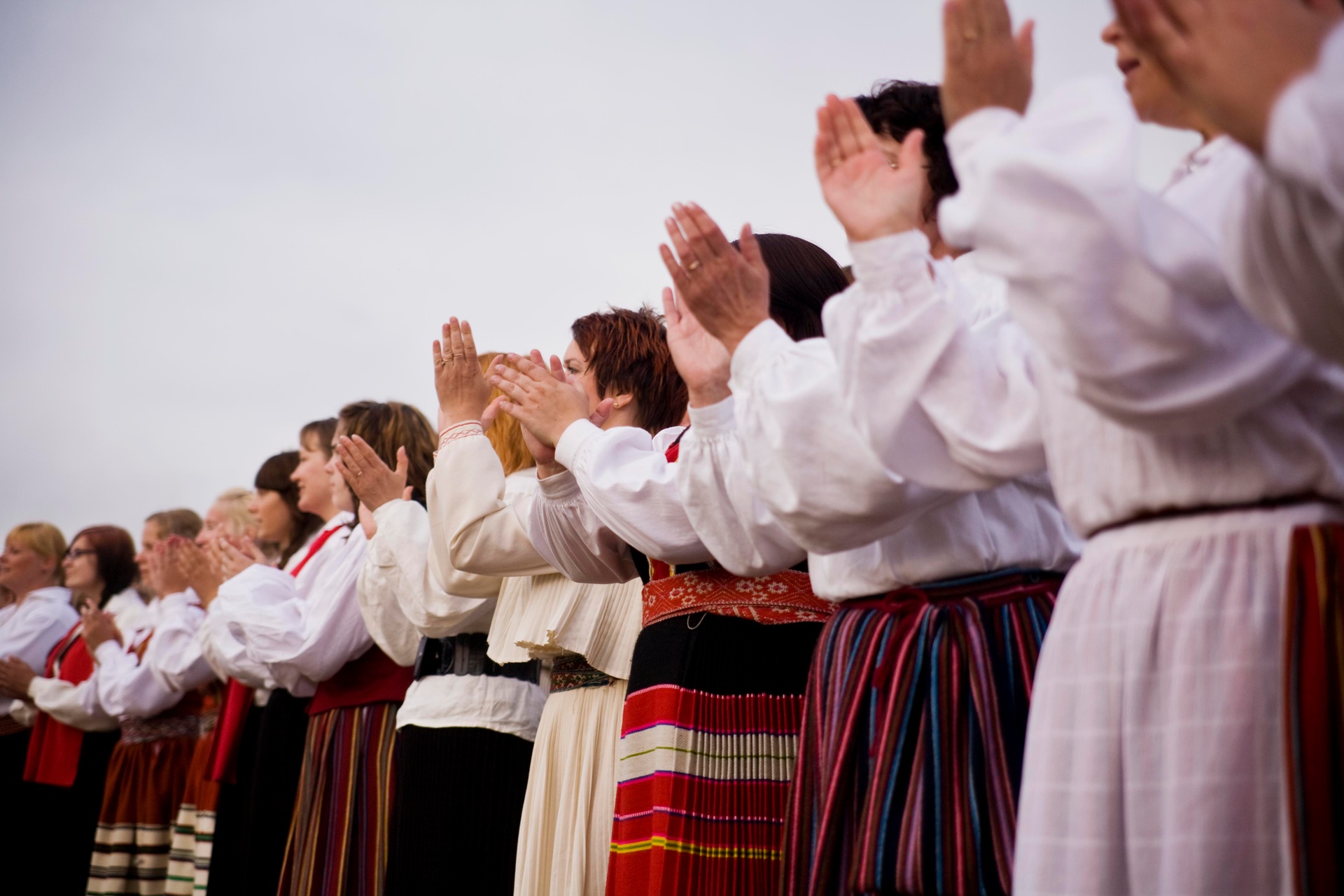
Your quick guide to Estonian culture
Estonia is a geographically compact country, but the pride estonians have in their culture overflows like the rivers during the fifth-season floods..
Even a short trip will allow you to experience the five pillars of Estonian culture: music, sauna, nature, food, and innovation. These five areas make Estonian culture Estonian – a blend of medieval and modern, handmade and high-tech, Baltic and Nordic.
Discover Estonian culture
Art, architecture, music and dance, history, traditions, and customs permeate everyday life.
Music — the heartbeat of a nation
The first Song Celebrations held in the 19th century were vital to establishing Estonia's national identity. Then came the Singing Revolution of the 1980s, when the masses gathered at the Song Festival Grounds in Tallinn to demand the restoration of national independence. Without music, Estonian culture as we know it would not exist.
Estonia has one of the world's largest repertoires of folk songs. These songs demonstrate the poetic and timeless beauty of the Estonian language and are often accompanied by dances. The UNESCO-listed Song and Dance Festival is held every four years, attracting nearly 100,000 performers and attendees. If you can't make it to Estonia for this stunning spectacle, then check out Tartu's Song Festival Museum . Plus, Tartu is the 2024 European Capital of Culture , making it the perfect time to visit.
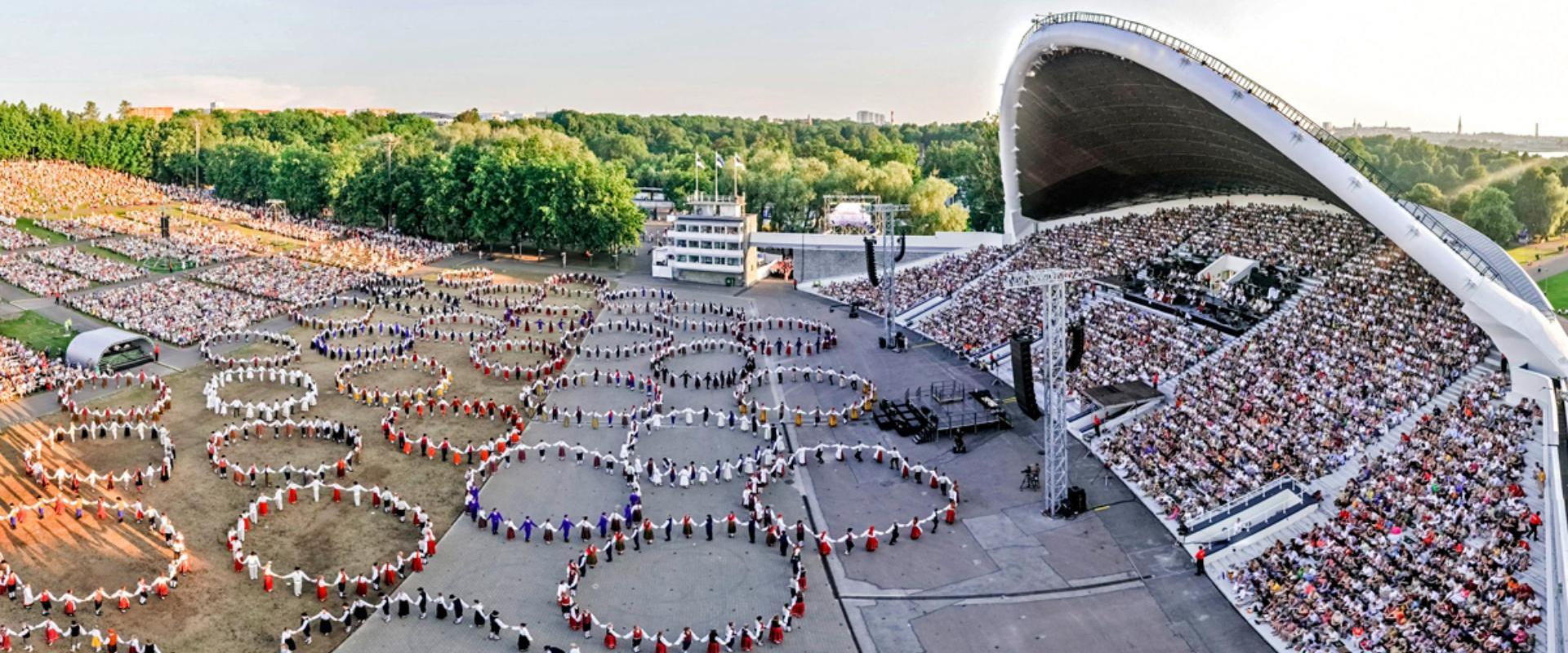
XXVIII Song Celebration and XXI Dance Celebration
3. july 2025 - 6. july 2025
The song and dance festival tradition has been included in the UNESCO intangible cultural heritage list. The song and dance festival is more than...
Kihnu Island's ancient wedding songs and Setomaa's leelo have also been added to UNESCO's List of Intangible Heritage . These singing styles preserve cultural memories, as traditions are passed down from generation to generation. By visiting during one of their many festivals, you'll have the exciting opportunity to see musicians in action on Kihnu Island and in Setomaa's villages.
If you like Estonian folk music, you may want to learn more about Estonian folklore by visiting the Kalevipoeg Museum . Kalevipoeg, Estonia's national epic, tells the story of a young man who battles foes and becomes King of Estonia. The museum explains the tale and its connections to real places in Estonia.
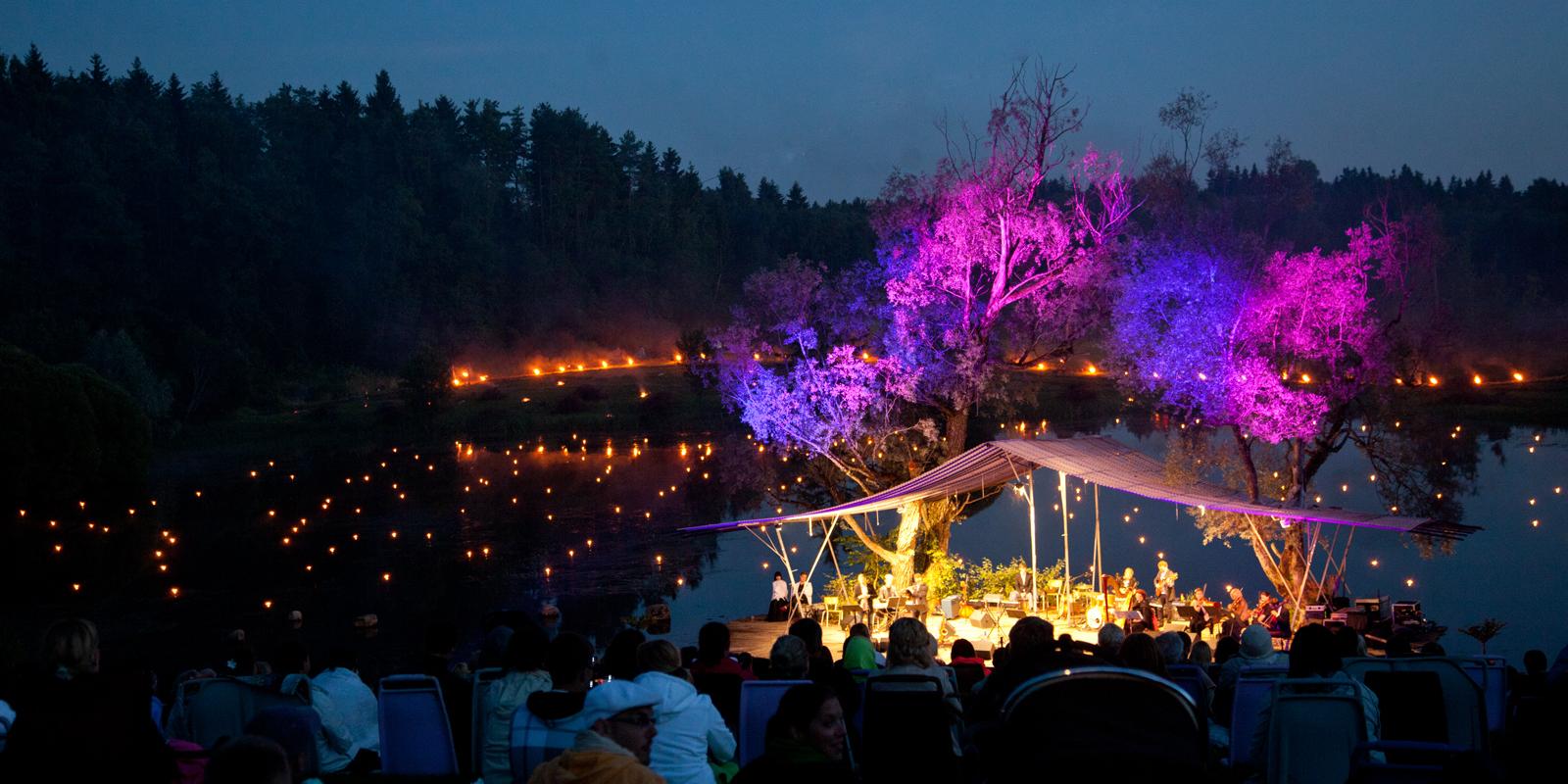
Leigo Lake Music Festival
9. aug 2024 - 10. aug 2024
The Leigo Lake Music Festival is a perfect example of how to bring together nature and music to create unique and truly memorable experiences....
Sauna – the original social network
Estonia's sauna tradition dates back to the 13th century when the first written mention of saunas appeared. Historically, saunas have been a place for cleansing and healing. The sauna welcomed babies into the world; wandering souls would stop by the sauna on feast days to bring good luck to the family.
Babies may be born in hospitals now, but the Estonian sauna tradition remains strong. Saunas are still a place for spiritual healing, connecting with family and friends, and relaxing and rejuvenating. In fact, the last census counted over 100,000 saunas for the country's 1.3 million inhabitants.
The smoke sauna tradition is a uniquely Estonian sauna ritual, recognized by UNESCO. You can experience an authentic smoke sauna for yourself at Mooska Farm . Smoke sauna is one of the most immersive cultural experiences you can have in Estonia – literally – as you will immerse yourself in ice-cold water during the process!

A traditional smoke sauna in the countryside
Sauna brings together families and friends from all generations.
Food – Estonian culture on a plate
Traditional Estonian food has a strong connection to the four seasons. Nobody expects to eat strawberries in December but in July, strawberries are abundant and can be found on every table for days. Estonians prefer fresh, local ingredients, and foraging is a family event. Forest mushrooms and berries from the bogs find their way into many dishes in Estonian homes and restaurants.
Estonian food is like the typical Estonian personality – straightforward, no frills, and honest. Today's young chefs use local building blocks, such as wild boar, rhubarb, and chanterelles, to create delicious New Nordic cuisine. Estonia even became the first Baltic country featured in the illustrious MICHELIN Guide in 2022.

Source: Priidu Saart
Innovation – Estonia's digital identity
After the restoration of Estonia's independence in 1991 , its leaders seized the opportunity to harness the country's youthful energy and transform society from agricultural to digital. Since then, at least 10 unicorns (companies valued at one billion dollars or more) either started in Estonia or were created by Estonian founders.
Digital services have become ingrained in Estonian culture. The only two things you can't do online in Estonia? Get married or file for divorce. You can get a taste of e-Estonia during your trip when you order a Bolt taxi or have your food delivered by a Starship robot. Even if you can't make it to Estonia, you can still become an e-resident and enjoy its business benefits remotely.

Source: Renee Altrov
Nature – a salve for the mind and soul
Estonians like their space – and they have a lot of it – as Estonia is one of the least dense countries in Europe. You're never far from nature in Estonia, even in the middle of Tallinn. Also, Estonians are typically quiet; you'll understand why when you visit the forest. The silence of nature even inspired Arvo Pärt , Estonia's most important living composer.
If you're here long enough, you'll likely hear the saying, "There's no such thing as bad weather, only bad clothing." Rain, snow, and ice don't keep Estonians from their favourite pastimes: hiking, camping, kayaking, ice skating, winter swimming, and skiing. Go for a hike , visit a bog , or spend the night in a tent and see for yourself how nature rejuvenates the soul.
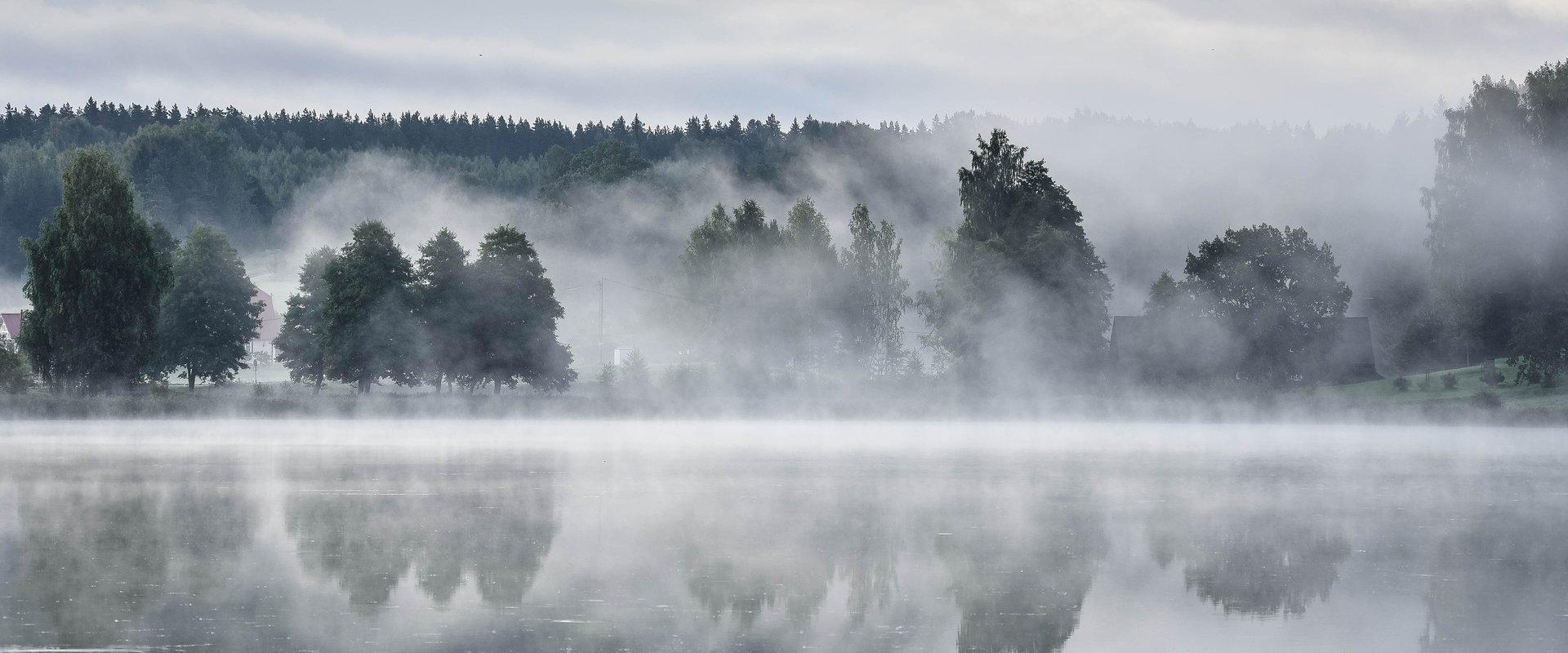
Ööbikuorg valley and Rõuge lakes
Nature sites.
There are seven lakes at Rõuge primeval valley, which is 10 km long and 52 metres deep. The lakes include Kahrila, Tõugjärv, Ratasjärv, Kaussjärv,...
Like Estonian history, Estonian culture is complex.
But these five pillars – music, sauna, food, nature, and innovation – will guide you toward the heart of the nation and its people.
Explore Estonia
Plan your trip with our interactive map.
Last updated
- History & Culture
- Hiking Trails
- Snowshoeing
- Smoke sauna
- Estonian food
Subscribe to our newsletter!
By signing up, you agree to personal data processing privacy policy .
If you’re planning a trip to Greece in 2024, visit these 10 top destinations

Mar 4, 2024 • 6 min read
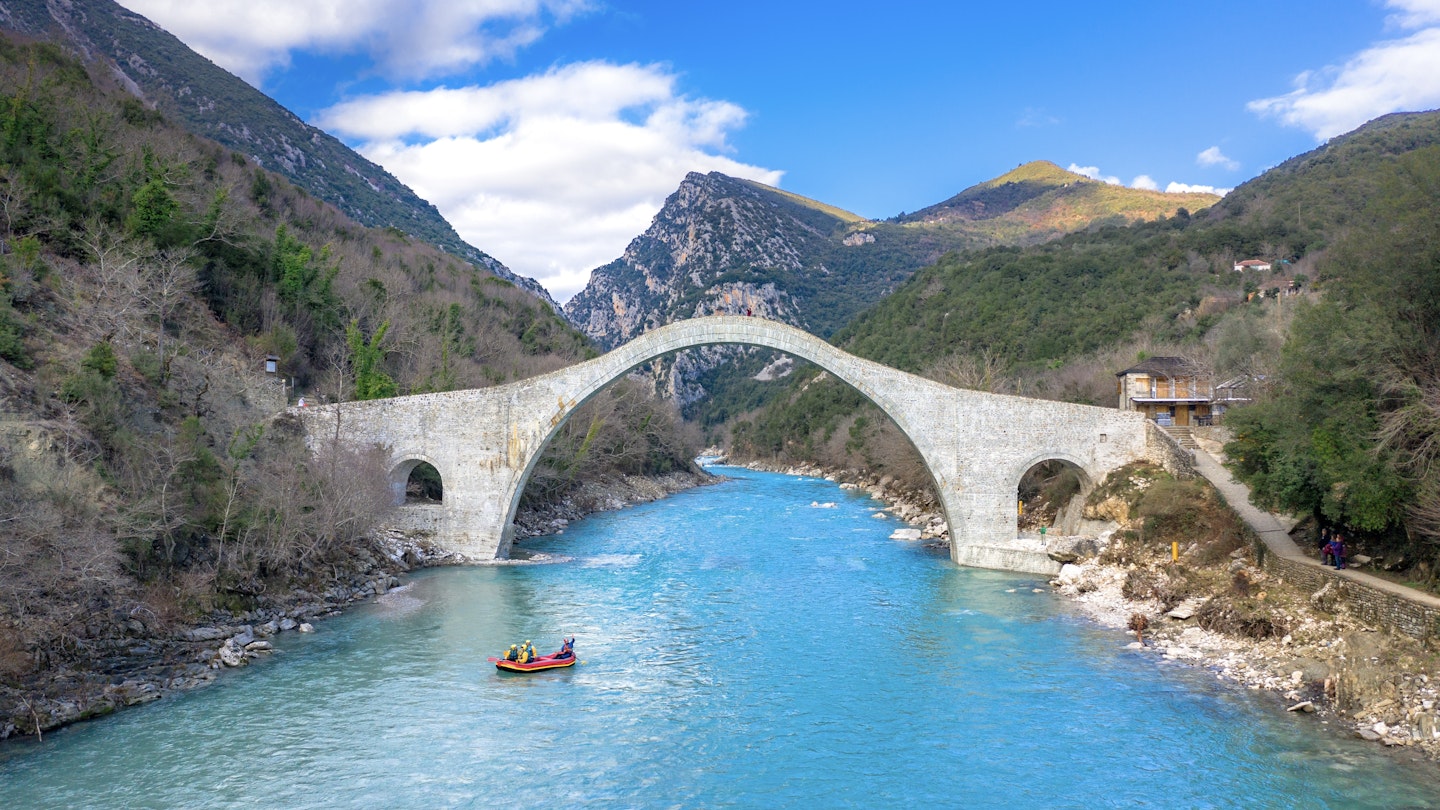
From iconic islands to major cities to the lesser-known, wild region of Epiros, our list of essential Greek destinations has a bit of everything © Georgios Tsichlis / Shutterstock
As its mythical Sirens were reputed to do, Greece has long lured travelers to its scintillating shores.
Across an expansive island archipelago, traditional whitewashed villages, azure seas and waterfront tavernas enchant visitors. Greece’s mountainous mainland, rich in UNESCO World Heritage–listed ancient sites, treasure-filled museums and spirited cities, is no less fascinating. As you contemplate your dream Greece itinerary, consider these 10 favorite places to add to it.
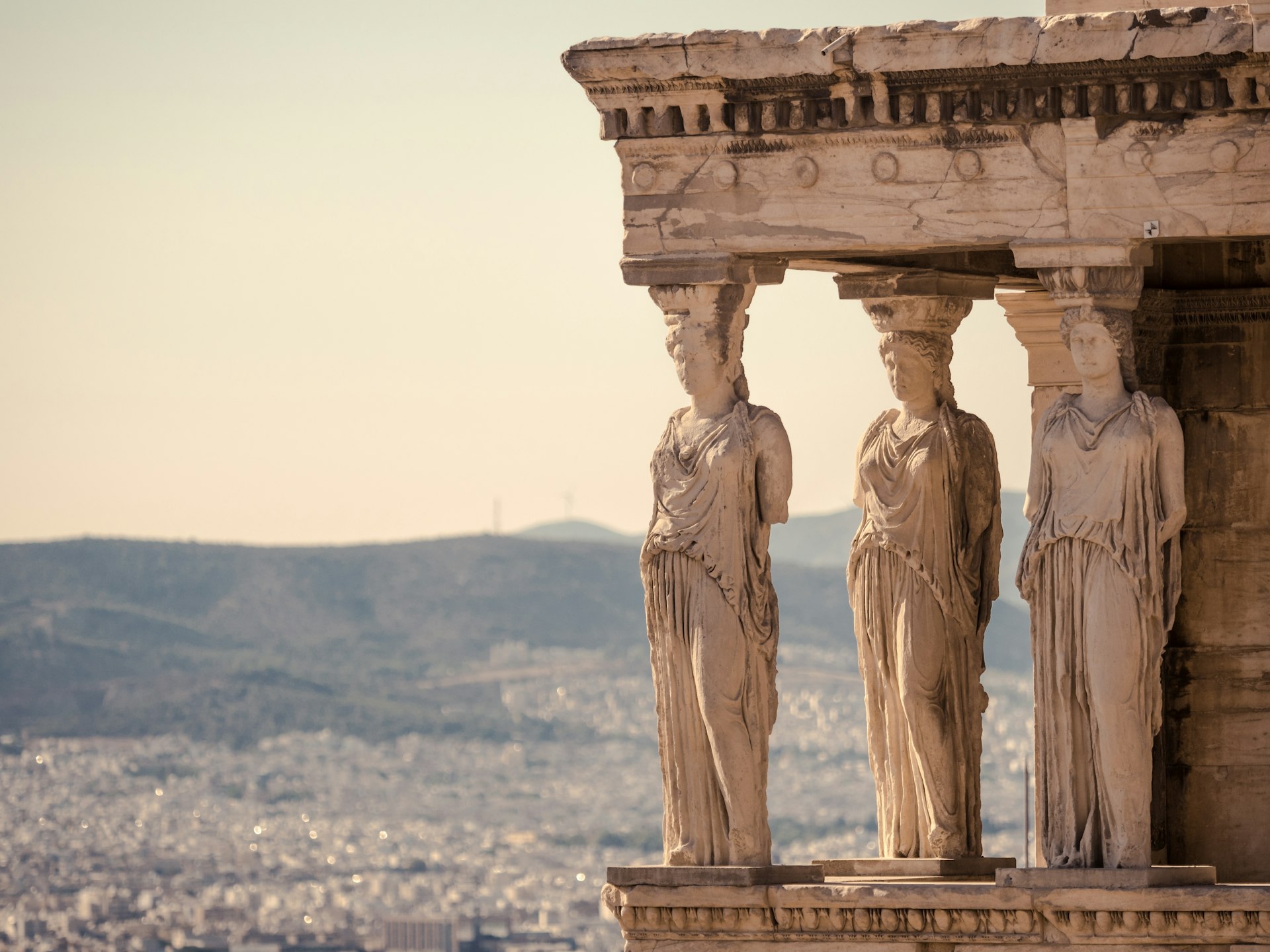
Wherever you walk in Greece’s storied capital, the ancients have walked before – whether you see the evidence or not. From the Acropolis (whose jewel in the crown is the fifth-century BCE Parthenon ) to the underground metro (where some stations feature archaic finds), Athens is teeming with historical sites , monuments and museums. A combo card affords entry to the Acropolis and six more sites; the Acropolis Museum is also a must-see.
Easy to tackle on foot, Athens is also one of Europe’s liveliest metropolises – and strolls through neighborhoods like old-town Plaka , flea market–famous Monastiraki and hip Pangrati are highlights. By night, catch a live band in gritty Gazi , catch a movie at an outdoor cinema in Thission or go bar-hopping off the main commercial street Ermou.
Local tip: Book tickets online for a reinvented Greek tragedy or dance troupe performance at the Odeon of Herodes Atticus amphitheater as part of the Epidaurus Festival , which takes place each summer.
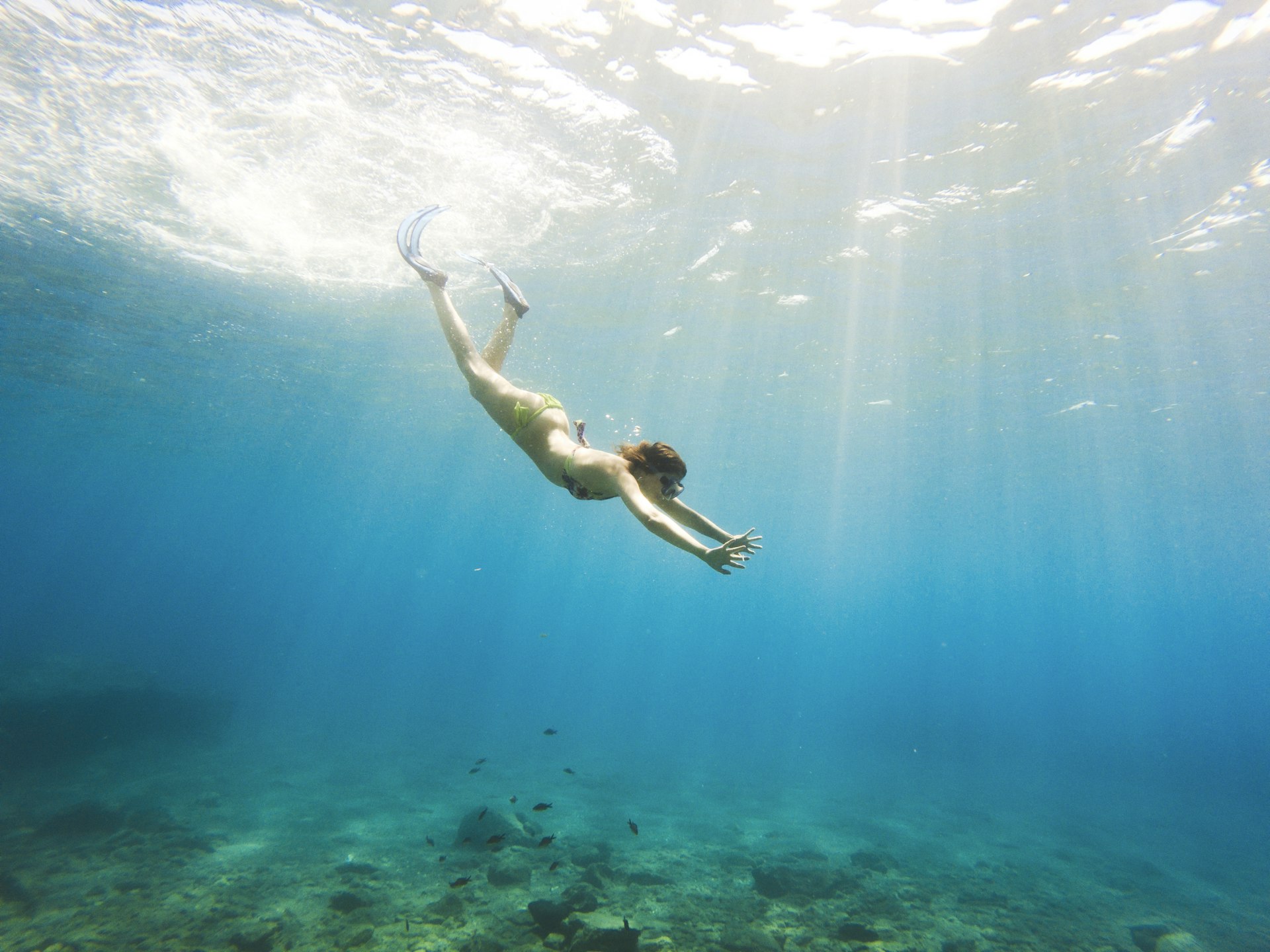
A collection of over 70 beaches, sea caves hidden beneath limestone cliffs and technicolor traditional boat houses are just some of the reasons why mineral-rich Milos has won the hearts of many travelers. Evidence of its volcanic origins can be seen in the almost lunar landscape of Sarakiniko , where the more daring dive into a jade-colored Aegean. Arrive early at Gerondas beach to nab the generous shade of caves and enjoy floating silently in still waters.
Planning tip: Save a couple of days to spend on Kimolos, a small island northeast of Milos reachable by ferry. One of its most impressive beaches is Prassa, where coarse, blindingly white sand shows off shallow, aquamarine waters to full effect.

Rhodes has long been the Dodecanese ’s biggest draw thanks to its atmospheric UNESCO World Heritage–listed medieval old town . Transformed in the Middle Ages by the Knights of the Order of St John into a formidable fortified city, it fell to the Ottomans, who erected mosques, baths and houses, many of which have been restored. Youngsters might envision armored men on horseback thundering down the cobblestoned Street of the Knights .
Make sure you visit the Palace of the Grand Master , which features stunning Roman and Early Christian floor mosaics, and the Church of Our Lady of the Castle.
Planning tip: Book a state-licensed tour guide to show you around the old town for a full picture of its long and fascinating history.
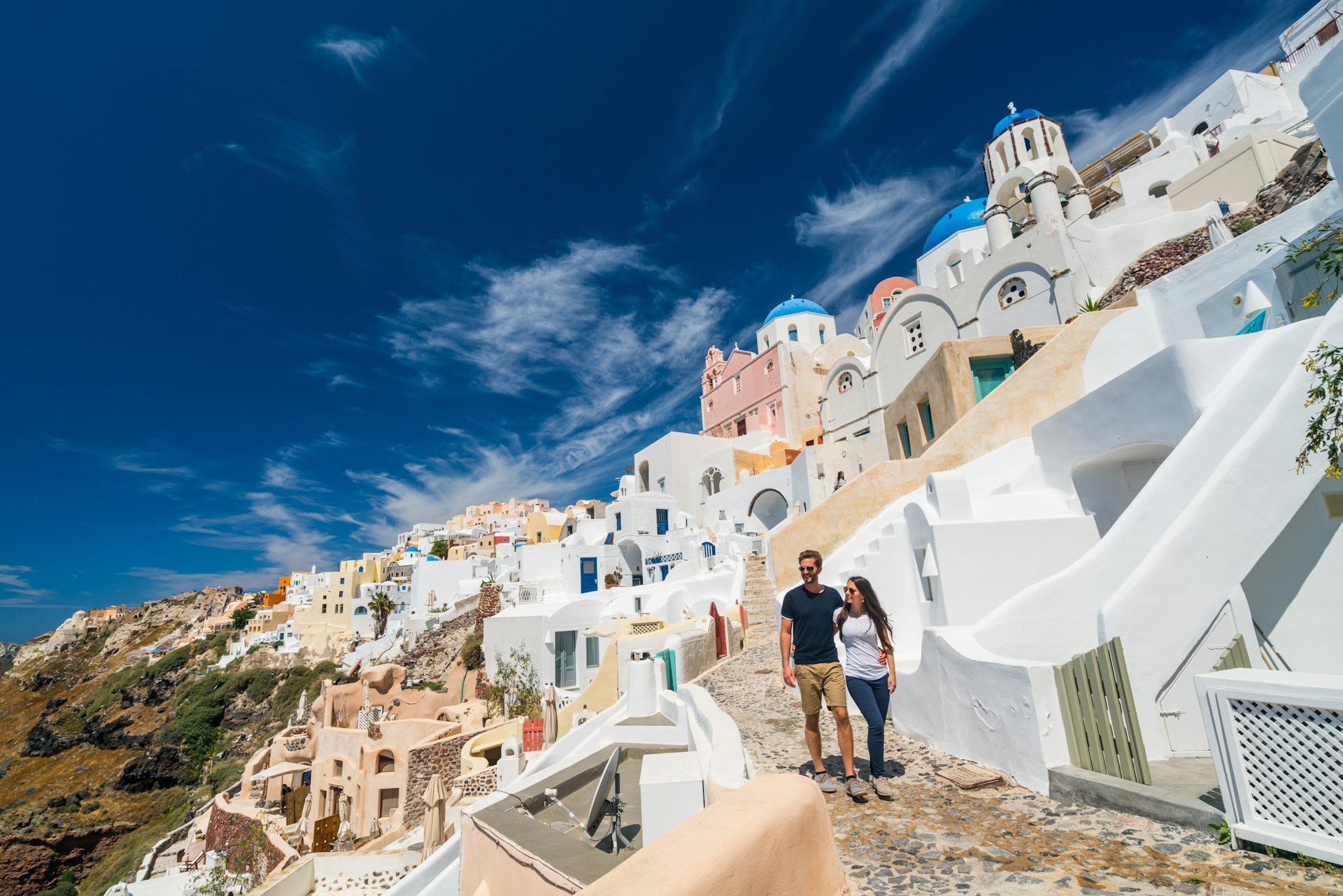
4. Santorini
Whether you’re coupled up or not, it’s hard not to fall for Santorini ’s charms. Whitewashed and pastel-hued, cube-shaped homes cling to steep cliffsides above a cobalt Aegean and the island’s famed caldera, formed by volcanic eruptions over millennia.
Weave your way through the narrow alleyways of the postcard-perfect village of Oia amid blue-domed churches. Bathe in thermal springs warmed by an active volcano, splay out on black-sand beaches and don’t miss the prehistoric settlement of Akrotiri , which features an advanced drainage system.
Planning tip: Book a private tour of Santorini ’s smaller wine estates, whose new generation of vintners is breathing new life into traditional wines like mezzo and Nychteri.
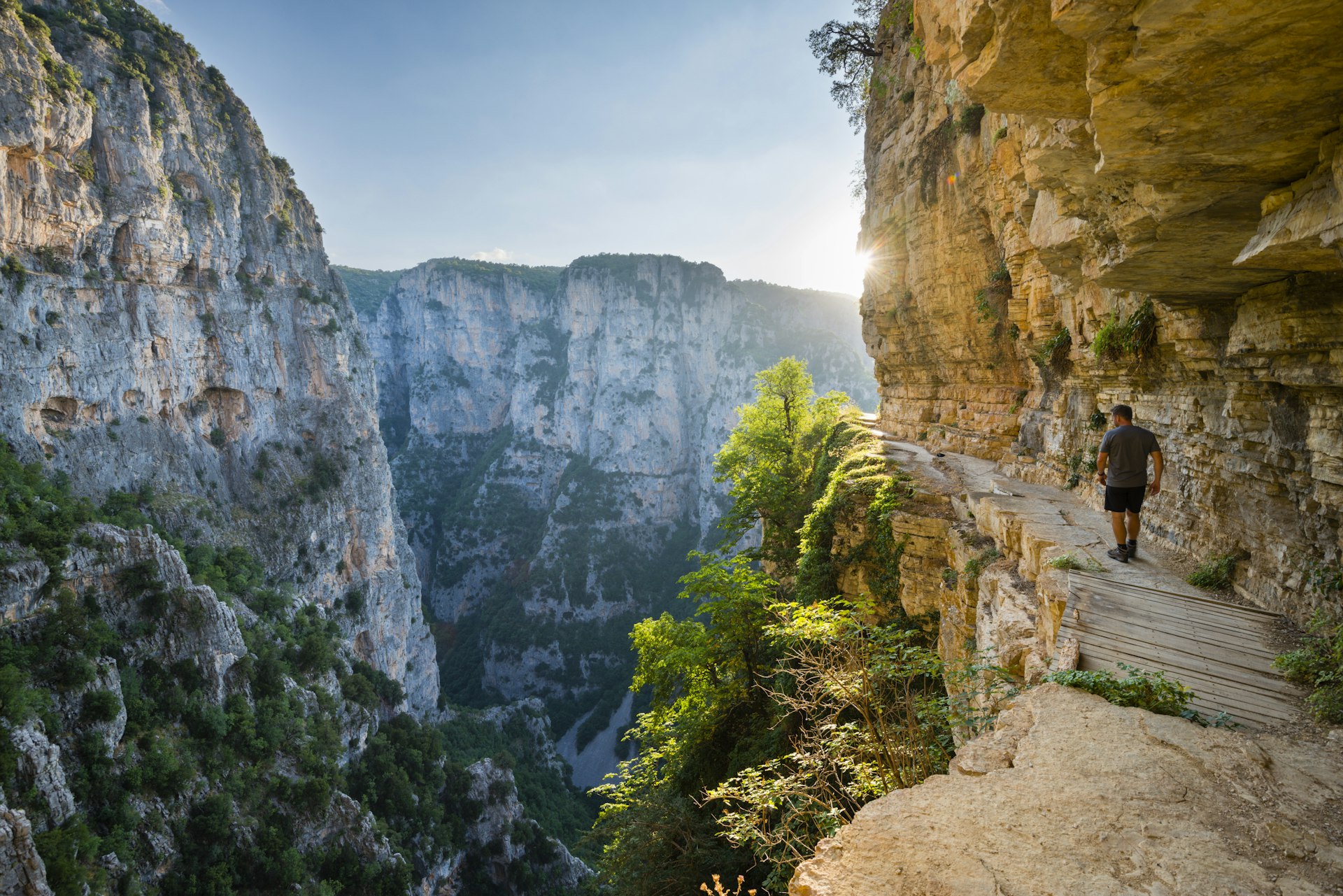
In Greece’s west lies Epiros , a remote region of soaring mountain peaks, fast-flowing rivers and hidden rock canyons. Hike to the alpine heights of Mt Tymfi’s Dragon Lake, which freezes over in winter, or traverse the thick forests, inclines and descents of spectacular Vikos Gorge . Whitewater rafting thrills and spills await in the Voidomatis or Arachthos rivers, while canyoning enthusiasts can choose from routes of varying difficulty.
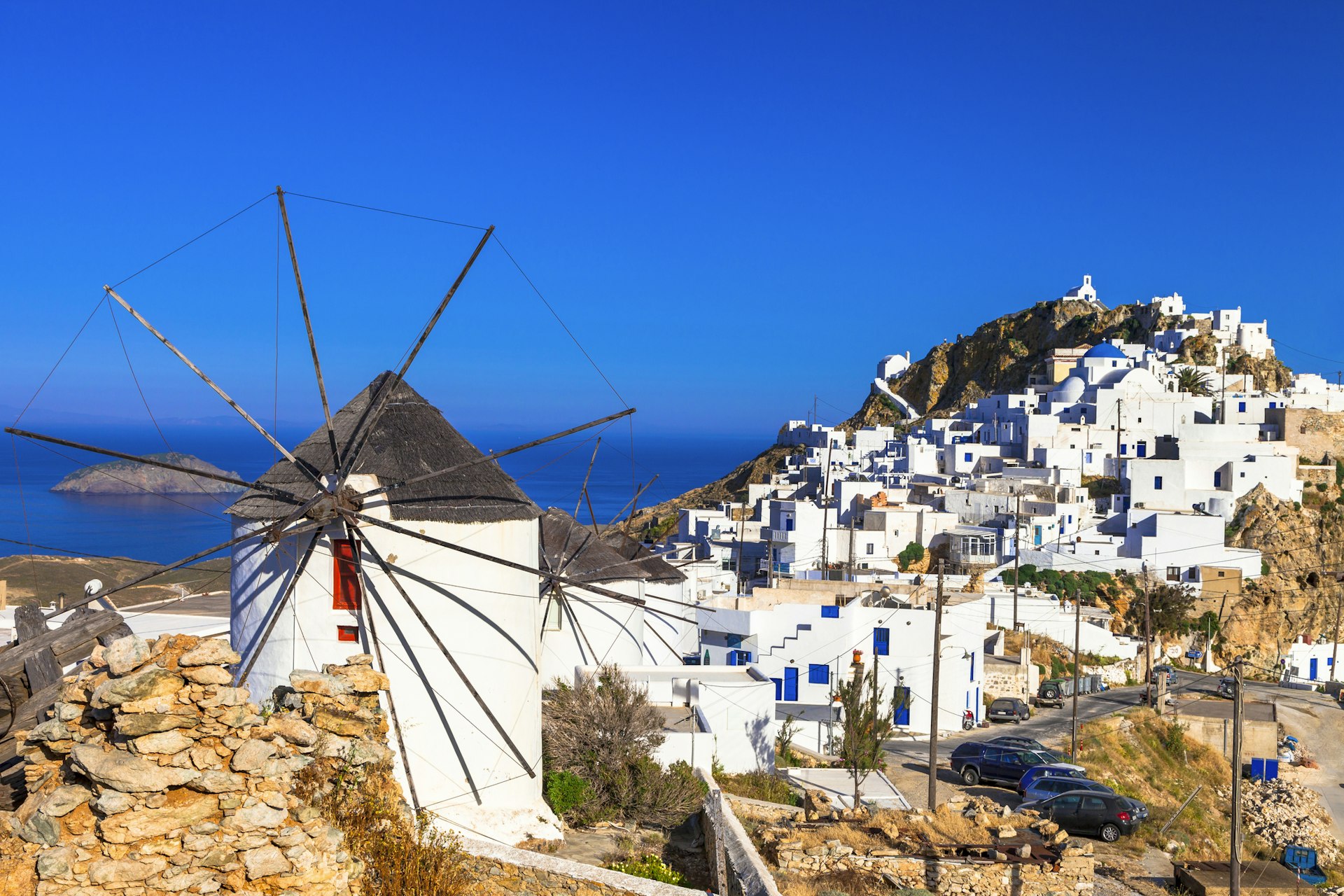
6. Kythnos and Serifos
If peaceful sandy shores, unassuming waterfront tavernas and sleepy villages are more your style, the low-key West Cyclades isles of Kythnos and Serifos are worth a stop. Kythnos has deep, sheltered bays and tamarisk-dotted silver-sand beaches, among them Lefkes and Naousa.
Wallet-friendly tavernas line the laid-back fishing settlements of Loutro and Meriha, while wind-whipped Serifos , a two-hour ferry ride from Piraeus , features sweeping sandy beaches, sheltered bays, ghostly mining relics and a jewel-like hilltop capital whose neoclassical town hall stands sentinel over the buzzy main square.
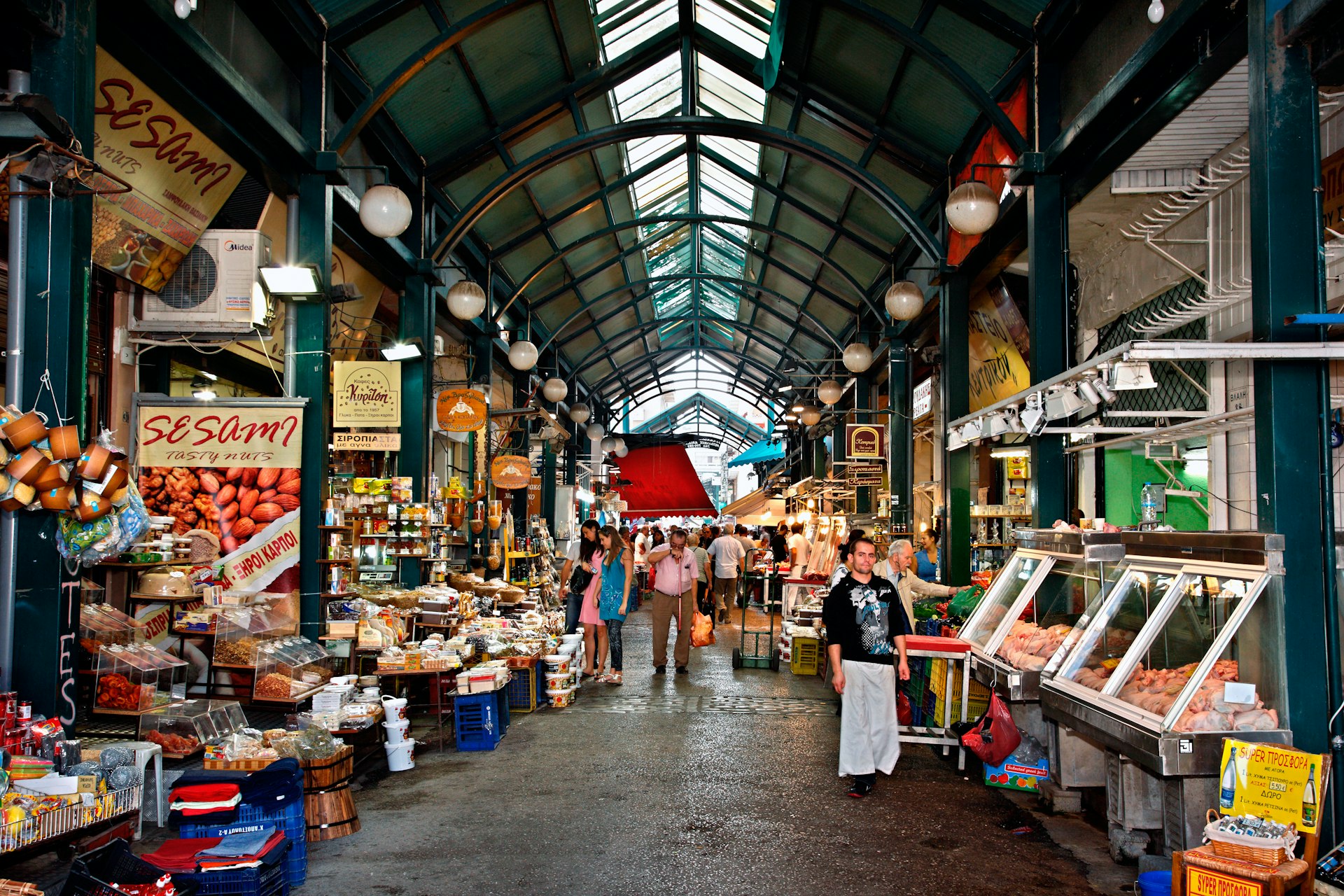
7. Thessaloniki
At the crossroads of East and West, where the Romans, Byzantines and Ottomans have held sway over the centuries, Thessaloniki tempts serious foodies. Bougatsa , a phyllo pastry pie usually filled with semolina custard, spinach or mince meat, makes for a hearty breakfast. Pick up olives and spices at the olfactory-awakening open-air markets and Pontic cheeses from indoor food hub Modiano , which dates back to 1922. In the former oil merchant district of Ladadika, mezedopolia serve dishes revealing strong Anatolian and Middle Eastern influences, customarily with the fiery clear spirit tsipouro .
Planning tip: Thessaloniki is also renowned for its fish and seafood, served with fervor and pride whether it’s a backstreet taverna or an upscale restaurant. Bookings are recommended for the latter.

Tranquil, turquoise seas, fir-studded hillsides and a regal capital make Corfu one of the most beautiful parts of the country to go sailing. The Ionian isle is the ideal starting point for novices who can take a sailing course and gain certification.
Afterward, join a flotilla for a leisurely cruise around Corfu, dropping anchor at Kalami Bay (of The Durrells fame) and lush Paleokastritsa. In Corfu Town , admire Venetian fortresses, the French-designed Liston Arcade and The Palace of St Michael and St George , built during the island’s British administration.
Planning tip: Few venture to Erikousa island, northwest of Corfu, which is blessed with pristine beaches and shallow cerulean seas.
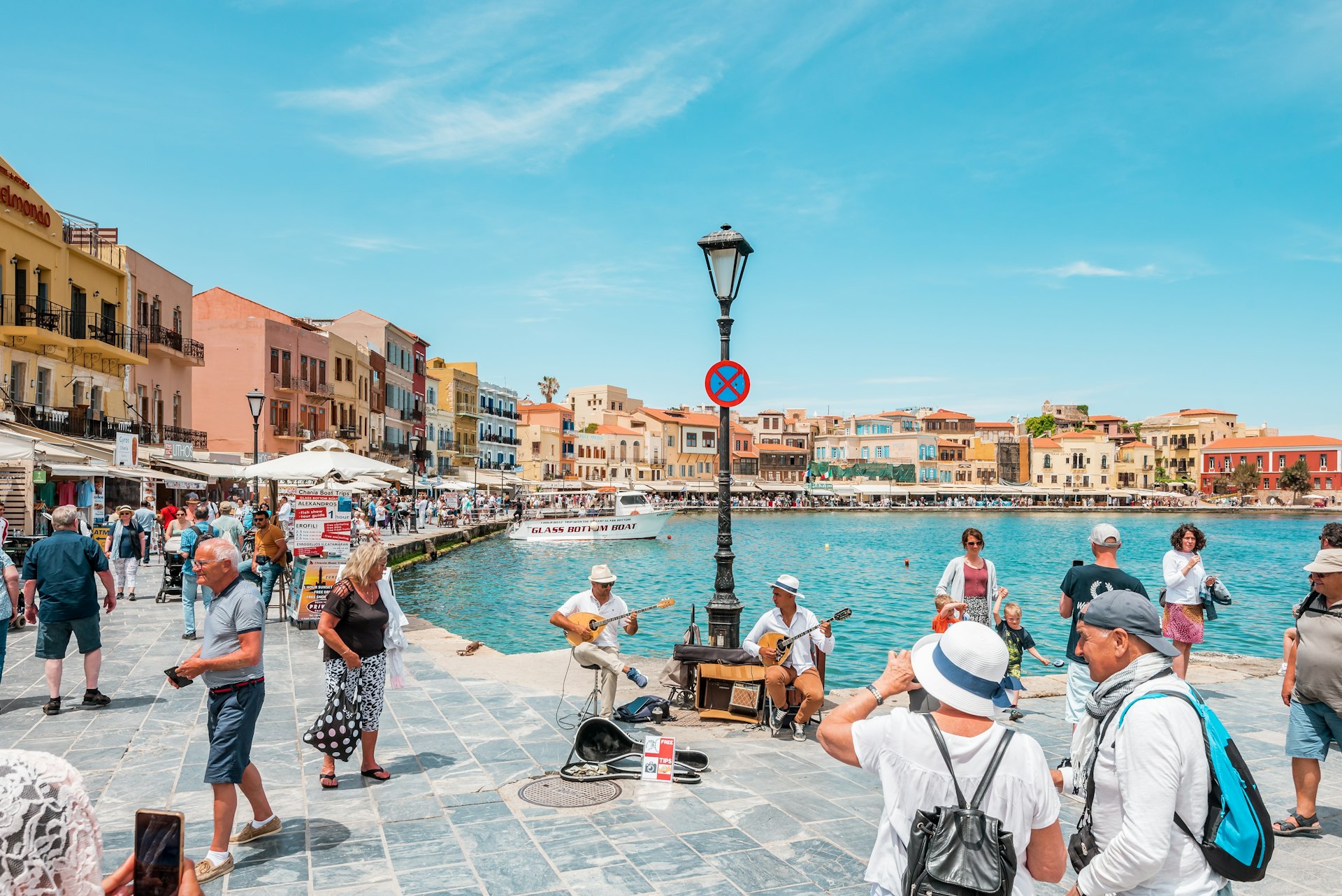
Greece’s largest island, Crete abounds in historical sites, well-preserved monuments and modern museums. A wander through the Minoan-era palaces of Knossos , Malia , Phaestos and Kato Zakros won’t disappoint any fan of classical culture.
Stroll along the Venetian Harbour in Hania , lined with Ottoman monuments such as the Kioutsouk Hasan Mosque . Trek up to Byzantine and Venetian fortresses such as the Fortezza in Rethymno and Kastelli in Hania. In the east, the 16th-century Venetian fortress on Spinalonga islet reveals a harrowing, more recent past as a leper colony.
Among noteworthy museums are the Heraklion Archaeological Museum , Chania’s Maritime Museum of Crete , and the Museum of Ancient Eleutherna in Rethymno.
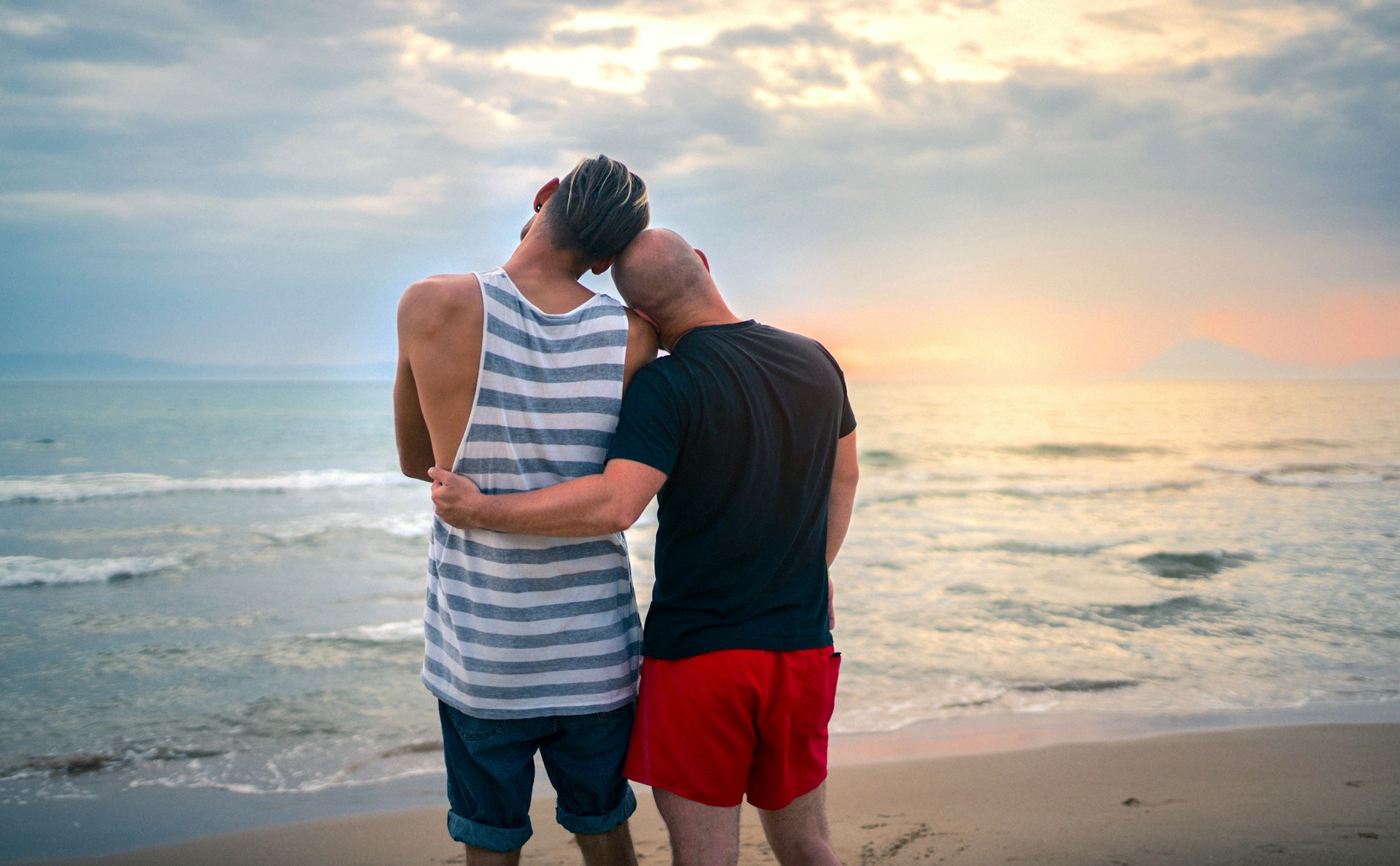
10. Mykonos
In the 1960s and 70s, Mykonos hosted roving hippies, celebrities and moneyed jet-setters who flirted and danced till the sun came up. While new five-star hotels and swanky brand-name restaurants may have altered the landscape and driven up prices, the fabled Cycladic isle still reigns supreme when it comes to summer nightlife in the Mediterranean.
Revelers can choose from the thumping bars lining Little Venice in Hora , as well as beach bars, cabaret restaurants and iconic clubs like seaside Cavo Paradiso , where illustrious music DJs fire up the crowd.
Planning tip: August is Mykonos’ busiest month. It’s also when you can witness the hottest DJs and surprise appearances by music artists, including prominent hip-hop names.
This article was first published Jul 5, 2021 and updated Mar 4, 2024.
Explore related stories

Destination Practicalities
Jun 11, 2024 • 6 min read
Plan your time on Corfu with this guide for first-time visitors.

Jun 11, 2024 • 7 min read

May 31, 2024 • 4 min read

Apr 19, 2024 • 10 min read
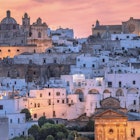
Mar 15, 2024 • 10 min read

Mar 6, 2024 • 8 min read

Feb 15, 2024 • 4 min read

Feb 2, 2024 • 7 min read
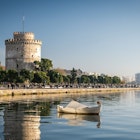
Feb 1, 2024 • 7 min read
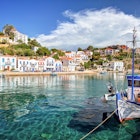
Jan 29, 2024 • 11 min read
You are using an outdated browser. Upgrade your browser today or install Google Chrome Frame to better experience this site.
Destinations
Measles cases are increasing globally, including in the United States. The majority of measles cases imported into the United States occur in unvaccinated U.S. residents who become infected during international travel. A list of countries with confirmed measles outbreaks can be found on the Global Measles Travel Health Notice (THN) . Measles spreads rapidly in communities that are not fully vaccinated and may pose a risk to international travelers in places not included in the THN. CDC recommends all travelers get fully vaccinated against measles before traveling to any international destination.

If you need help finding travel information:
Message & data rates may apply. CDC Privacy Policy
Complete List of Destinations
- Afghanistan
- American Samoa
- Anegada (see Virgin Islands, British )
- Anguilla (U.K.)
- Antigua and Barbuda
- Austral Islands (see French Polynesia (France) )
⇧ Top
- Bahamas, The
- Barbuda (see Antigua and Barbuda )
- Bermuda (U.K.)
- Bora-Bora (see French Polynesia (France) )
- Bosnia and Herzegovina
- British Indian Ocean Territory (U.K.)
- Burkina Faso
- Burma (Myanmar)
- Caicos Islands (see Turks and Caicos Islands (U.K.) )
- Canary Islands (Spain)
- Cayman Islands (U.K.)
- Central African Republic
- Christmas Island (Australia)
- Cocos (Keeling) Islands (Australia)
- Congo, Republic of the
- Cook Islands (New Zealand)
- Côte d'Ivoire
- Curaçao
- Democratic Republic of the Congo
- Dominican Republic
- Dubai (see United Arab Emirates )
- Easter Island (Chile)
- El Salvador
- England (see United Kingdom )
- Equatorial Guinea
- Eswatini (Swaziland)
- Falkland Islands (Islas Malvinas)
- Faroe Islands (Denmark)
- French Guiana (France)
- French Polynesia (France)
- Galápagos Islands (see Ecuador )
- Gambia, The
- Gibraltar (U.K.)
- Greenland (Denmark)
- Grenadines (see Saint Vincent and the Grenadines )
- Guam (U.S.)
- Guernsey (see United Kingdom )
- Guinea-Bissau
- Holy See (see Italy )
- Hong Kong SAR (China)
- Isle of Man (see United Kingdom )
- Israel, including the West Bank and Gaza
- Ivory Coast (see Côte d'Ivoire )
- Jersey (see United Kingdom )
- Jost Van Dyke (see Virgin Islands, British )
- Liechtenstein
- Macau SAR (China)
- Madeira Islands (Portugal)
- Marquesas Islands (see French Polynesia (France) )
- Marshall Islands
- Martinique (France)
- Mayotte (France)
- Micronesia, Federated States of
- Montserrat (U.K.)
- Moorea (see French Polynesia (France) )
- Myanmar (Burma) (see Burma (Myanmar) )
- Netherlands, The
- New Caledonia (France)
- New Zealand
- Niue (New Zealand)
- Norfolk Island (Australia)
- North Korea
- North Macedonia
- Northern Ireland (see United Kingdom )
- Northern Mariana Islands (U.S.)
- Papua New Guinea
- Philippines
- Pitcairn Islands (U.K.)
- Puerto Rico (U.S.)
- Réunion (France)
- Rota (see Northern Mariana Islands (U.S.) )
- Rurutu (see French Polynesia (France) )
- Saint Barthelemy
- Saint Croix (see Virgin Islands, U.S. )
- Saint Helena (U.K.)
- Saint John (see Virgin Islands, U.S. )
- Saint Kitts and Nevis
- Saint Lucia
- Saint Martin
- Saint Pierre and Miquelon (France)
- Saint Thomas (see Virgin Islands, U.S. )
- Saint Vincent and the Grenadines
- Saipan (see Northern Mariana Islands (U.S.) )
- São Tomé and Príncipe
- Saudi Arabia
- Scotland (see United Kingdom )
- Sierra Leone
- Sint Eustatius
- Sint Maarten
- Society Islands (see French Polynesia (France) )
- Solomon Islands
- South Africa
- South Georgia and the South Sandwich Islands (U.K.)
- South Korea
- South Sandwich Islands (see South Georgia and the South Sandwich Islands (U.K.) )
- South Sudan
- Swaziland (Eswatini) (see Eswatini (Swaziland) )
- Switzerland
- Tahiti (see French Polynesia (France) )
- Timor-Leste (East Timor)
- Tinian (see Northern Mariana Islands (U.S.) )
- Tobago (see Trinidad and Tobago )
- Tokelau (New Zealand)
- Tortola (see Virgin Islands, British )
- Trinidad and Tobago
- Tubuai (see French Polynesia (France) )
- Turkmenistan
- Turks and Caicos Islands (U.K.)
- United Arab Emirates
- United Kingdom
- United States
- Vatican City (see Italy )
- Virgin Gorda (see Virgin Islands, British )
- Virgin Islands, British
- Virgin Islands, U.S.
- Wake Island
- Wales (see United Kingdom )
- Zanzibar (see Tanzania )
File Formats Help:
- Adobe PDF file
- Microsoft PowerPoint file
- Microsoft Word file
- Microsoft Excel file
- Audio/Video file
- Apple Quicktime file
- RealPlayer file
- Zip Archive file
Exit Notification / Disclaimer Policy
- The Centers for Disease Control and Prevention (CDC) cannot attest to the accuracy of a non-federal website.
- Linking to a non-federal website does not constitute an endorsement by CDC or any of its employees of the sponsors or the information and products presented on the website.
- You will be subject to the destination website's privacy policy when you follow the link.
- CDC is not responsible for Section 508 compliance (accessibility) on other federal or private website.
UEFA EURO 2024: Meet the 24 teams
Tuesday, June 11, 2024
Article summary
Get the full lowdown on the 24 teams competing for glory in Germany.
Article top media content

Article body
How they qualified, top scorers, pedigree, key players and the coach – all you need to know about the 24 teams competing for glory at UEFA EURO 2024 in Germany.
Group A fixtures vs Scotland (Munich, 14 June, 21:00) vs Hungary (Stuttgart, 19 June, 18:00) vs Switzerland (Frankfurt, 23 June, 21:00)
Qualifying Qualified automatically as hosts
Pedigree EURO best: Winners 1972, 1980 (both as West Germany), 1996 EURO 2020: Round of 16, lost 2-0 to England
Coach: Julian Nagelsmann Nagelsmann has been on something of a roller-coaster ride since succeeding Hansi Flick in September 2023, but friendly wins against France and Netherlands in March seem to have sparked optimism and belief. The tactically astute 36-year-old selects players based on form, and convincing Toni Kroos to return from international retirement could turn out to be his best move yet.
Key player: İlkay Gündoğan It will be up to the likes of Jamal Musiala, Leroy Sané and Florian Wirtz to provide the attacking spark, but Gündoğan will be the man charged with instilling balance. Nagelsmann sees Gündoğan as a No10 who can make the players around him shine, and although the experienced captain may sometimes keep a low profile on the pitch, his team-mates benefit greatly from his intelligence and vision.
One to watch: Maximilian Mittelstädt Regarded as one of the best left-backs in the Bundesliga in 2023/24, the 27-year-old has enjoyed a remarkable rise since being relegated with Hertha Berlin last term. Now at Stuttgart, Mittelstädt is set to enhance Germany's options in the full-back position with his high work-rate and selfless attitude.
Did you know? Germany are appearing at a record 14th EURO. They did not qualify for the first three editions (1960, 1964 and 1968) but have not missed a finals since.
Group A fixtures vs Germany (Munich, 14 June, 21:00) vs Switzerland (Cologne, 19 June, 21:00) vs Hungary (Stuttgart, 23 June, 21:00)
Qualifying Group A runners-up: P8 W5 D2 L1 F17 A8 Qualifying top scorer: Scott McTominay (7)
Pedigree EURO best: Group stage (1992, 1996, 2020) EURO 2020: Group stage
Coach: Steve Clarke Scotland have reached back-to-back European Championships under Clarke, the first Scotland manager to achieve that, and have qualified directly for a major finals for the first time since 1998. If they can reproduce their fine qualifying form, the next target for Clarke and company will be to make further history by becoming the first Scotland squad to progress beyond the group stage at a finals tournament.
Key player: Scott McTominay With seven goals in qualifying, look no further than McTominay. At a time when he wasn't a regular starter at Man United, Scotland became McTominay's 'happy place' with Clarke urging him to play "with a smile on his face". His memorable double in the 2-0 Hampden win over Spain certainly had all of Scotland smiling, and the Tartan Army will be hoping McTominay can reproduce his goalscoring form come mid-June.
One to watch: Tommy Conway With previous wildcard Ben Doak withdrawn from the provisional squad through injury, attention now turns to his replacement, Bristol City striker Tommy Conway. The 21-year-old scored ten Championship goals for his club last season and has found the back of the net three times in seven games at Under-21 level. A strong runner and good finisher, Conway could be a key player off the bench.
Did you know? This is the second time Scotland have qualified for back-to-back European Championships.
Group A fixtures vs Switzerland (Cologne, 15 June, 15:00) vs Germany (Stuttgart, 9 June, 18:00) vs Scotland (Stuttgart, 23 June, 21:00)
Qualifying Group G winners: P8 W5 D3 L0 F16 A7 Qualifying top scorer: Barnabás Varga, Dominik Szoboszlai (4)
Pedigree EURO best: Third place (1964) EURO 2020: Group stage
Coach: Marco Rossi Having led Hungary from Nations League C to A, come agonisingly close to progressing from a EURO 2020 group containing Germany, France and Portugal, and now, unbeaten, reached EURO 2024, Rossi's popularity is sky high among players and fans alike. The Italian appears equally smitten, taking Hungarian citizenship. The togetherness, discipline and belief he has instilled among his squad is remarkable, with Hungary looking increasingly capable of springing a surprise or two.
Key player: Dominik Szoboszlai Parallel to the meteoric rise of Hungary under Rossi has been that of Szoboszlai. Still only 23, Hungary's midfield maestro is fast approaching 50 international appearances. Always a game changer, he and Hungary are thriving under his captaincy. A dead-ball specialist and box-to-box midfielder who offers athleticism, intensity, work-rate, pace, vision, creativity, goals, assists and a steely sense of purpose, Szoboszlai has taken his game to another level as on-field leader of this tightly knit Hungary side.
One to watch: Milos Kerkez Twenty-year-old Kerkez came through the Rapid Wien and Milan academies before a breakthrough campaign at AZ and a transfer to the Premier League, where he's had a fine first season with Bournemouth. At international level, Kerkez has quickly established himself as Hungary's first-choice left wing-back since debuting against Germany in September 2022. Tough and reliable defensively, Kerkez possesses great technique and vision, and is also a tireless attacking threat on the overlap.
Did you know? Hungary's 14-match unbeaten run in the lead-up to the finals was their longest sequence since Ferenc Puskás and the Mighty Magyars – 18 games between July 1954 and February 1956 – under Gusztáv Sebes.
Group A fixtures vs Hungary (Cologne, 15 June, 15:00) vs Scotland (Cologne, 19 June, 21:00) vs Germany (Frankfurt, 23 June, 21:00)
Qualifying Group I runners-up: P10 W4 D5 L1 F22 A11 Qualifying top scorer: Zeki Amdouni (6)
Pedigree EURO best: Quarter-finals (2020) EURO 2020: Quarter-finals, lost 3-1 on penalties to Spain (1-1 aet)
Coach: Murat Yakin The 49-year-old has been at the 'Nati' helm since summer 2021. He oversaw Switzerland's run to the last 16 at the 2022 FIFA World Cup, where they reached the knockout phase for a fifth straight major tournament. After a low-key end to their EURO 2024 qualifying campaign, Yakin will want his team to regain their famed consistency as they bid to extend that impressive run.
Key player: Granit Xhaka Switzerland's most-capped player will head into this tournament with confidence sky-high, having been a key part of Leverkusen's astonishing season. The captain and midfield stalwart not only brings leadership qualities and a steely mentality, he also possesses excellent vision and a superb passing range. His position at the heart of midfield helps his team-mates tick in perfect rhythm.
One to watch: Ruben Vargas The 25-year-old has evolved into a key player for Switzerland, scoring two typically crucial headers in qualifying draws against Israel and Kosovo to seal their finals spot. This will be the third major tournament for the winger, who is known for his skill on the ball, ability in one-v-ones, and goal threat.
Did you know? EURO '96 was Switzerland's first European Championship finals; this year marks their sixth finals appearance in the last eight editions.
Group B fixtures vs Croatia (Berlin, 15 June, 18:00) vs Italy (Gelsenkirchen, 20 June, 21:00) vs Albania (Düsseldorf, 24 June, 21:00)
Qualifying Group A winners: P8 W7 D0 L1 F25 A5 Qualifying top scorers: Joselu, Álvaro Morata (4)
Pedigree EURO best: Winners (1964, 2008, 2012) EURO 2020: Semi-finals, lost 4-2 on penalties to Italy (1-1 aet)
Coach: Luis de la Fuente A likeable Basque who won the Spanish Liga as a full-back with Athletic Club, the Spain boss has the winning habit. His side beat Group B rivals Italy and Croatia as they won the UEFA Nations League last summer, and he previously led national teams to EURO glory at under-age levels – the U19s in 2015 and the U21s in 2019. The levels he can summon from his big players after brilliant club seasons will dictate Spain's trajectory.
Key player: Rodri Midfielders tend not to get the garlands they deserve, but Rodri is possibly the best player in the world right now. Naturally gifted, athletic and competitive, he is at peak age and has the necessary knowledge. Used to winning trophies at Man City, he is inspirational in word and deed.
One to watch: Lamine Yamal A magical, mercurial talent, Yamal is huge fun whether you support La Roja or not. He turns 17 the day before the EURO final but comes into the tournament with six caps, two goals and two assists for Spain. He has played over 50 times for club and country, and home-town team Barcelona rate him as a massive prospect. Left-footed, he is usually deployed as an inverted winger. Pedri lit up EURO 2020; Lamine could be the wonderkid this time.
Did you know? Spain are the only national team to have won three continental and world titles in a row: EURO 2008, the 2010 World Cup and EURO 2012.
Group B fixtures vs Spain (Berlin, 15 June, 18:00) vs Albania (Hamburg, 19 June, 15:00) vs Italy (Leipzig, 24 June, 21:00)
Qualifying Group D runners-up: P8 W5 D1 L2 F13 A4 Qualifying top scorer: Andrej Kramarić (4)
Pedigree EURO best: Quarter-finals (1996, 2008) EURO 2020: Round of 16, lost 5-3 aet to Spain
Coach: Zlatko Dalić Since taking over in 2017, Dalić has guided Croatia to astonishing achievements, including back-to-back World Cup medals by reaching the final in 2018 and securing third place in 2022. Defeats in the EURO 2020 round of 16 and 2023 Nations League final, both by Spain, have set up a highly anticipated rematch in their opening game here.
Key player: Luka Modrić The question of whether Modrić is approaching his swansong seems to occur at every major tournament, but Croatia hope his magic continues to endure. The midfield maestro remains essential to their success, with his ability to control the pace of the game and his vision undiminished. His charisma, passion and leadership not only underline his talent but affirm his status as Croatia's greatest player and captain.
One to watch: Joško Gvardiol Gvardiol has quickly blossomed into one of Europe's top defenders. Known for his solid defensive ability at both centre-back and left-back, Gvardiol's tactical acumen and physical prowess are expected to develop further under the guidance of Pep Guardiola at Man City. Though only 22, he should play a pivotal role in Croatia’s campaign.
Did you know? Croatia have qualified for seven out of eight EURO final tournaments as an independent nation, and have proceeded to the knockout stage in four of their six appearances to date.
Group B fixtures vs Albania (Dortmund, 15 June, 21:00) vs Spain (Gelsenkirchen, 20 June, 21:00) vs Croatia (Leipzig, 24 June, 21:00)
Qualifying Group C runners-up: P8 W4 D2 L2 F16 A9 Qualifying top scorer: Davide Frattesi (3)
Pedigree EURO best: Winners (1968, 2020) EURO 2020: Winners
Coach: Luciano Spalletti The much-travelled Tuscan took over from Roberto Mancini in August, just after leading Napoli to a historic Scudetto title. He wasted little time in conveying his football philosophy to the Azzurri squad, helping them reach the finals in Germany and starting to rebuild the national team by mixing veterans of the EURO 2020 triumph with a new generation of players.
Key player: Nicolò Barella The Sardinian was already a key member of the Italy midfield trio that helped the Azzurri win the trophy in 2021, but the 27-year-old is now at a career peak after reaching the UEFA Champions League final with Inter in 2023 and winning the Scudetto with the Nerazzurri this season. With boundless energy, technique, creativity and leadership, Barella is a valuable asset in several respects.
One to watch: Alessandro Buongiorno Replacing old lions like Giorgio Chiellini and Leonardo Bonucci was never going to be easy, but Italy are discovering new names to marshal their defence and Buongiorno is one of them. The Torino captain made his Italy debut in the Nations League finals last June, with his second cap coming in November's crucial 0-0 draw with Ukraine. Rock solid and elegant in defence, the young man with the cheerful surname has a degree in Business Administration, just like Chiellini.
Did you know? The Ukraine stalemate which confirmed Italy's place in Germany was then 24-year-old goalkeeper Gianluigi Donnarumma's 60th appearance for the Azzurri. His predecessor, Gianluigi Buffon, reached the same milestone as a 28-year-old in another goalless draw with Ukraine, ending his career with a record 176 caps.
Group B fixtures vs Italy (Dortmund, 15 June, 21:00) vs Croatia (Hamburg, 19 June, 15:00) vs Spain (Düsseldorf, 24 June, 21:00)
Qualifying Group E winners: P8 W4 D3 L1 F12 A4 Qualifying top scorers: Jasir Asani, Nedim Bajrami (3)
Pedigree EURO best: Group stage (2016) EURO 2020: did not qualify
Coach: Sylvinho Sylvinho's appointment in January 2023 heralded a new era for the Albanian national team. With his background in elite football, the Brazilian has succeeded in rejuvenating the side's playing style and instilling a winning mentality. His leadership has brought unity and cohesion, creating a team capable of surprising their opponents at EURO 2024.
Key player: Berat Djimshiti The imposing Atalanta centre-back adds defensive solidity and leadership, with his aerial prowess, tactical intelligence and strength in the tackle making Djimshiti a commander at the back. His top-level experience in Serie A is also an asset, inspiring confidence among team-mates. Indeed, Djimshiti's presence brings a composure which could prove vital for Sylvinho's squad.
One to watch: Ernest Muçi Despite having played only nine times for Albania by May, Muçi inspires great expectations given his skillset and versatility. Renowned for his pace, technical prowess and ability to create goalscoring chances, the Beşiktaş forward is a dynamic force. With his knack for producing decisive moments in front of goal, Muçi could prove a key performer in Germany.
Did you know? Under Sylvinho, Albania have never lost a game after taking the lead – a sequence of six matches into the Brazilian's tenure.
Group C fixtures vs Denmark (Stuttgart, 16 June, 18:00) vs Serbia (Munich, 20 June, 15:00) vs England (Cologne, 25 June, 21:00)
Qualifying Group H runner-up: P10 W7 D1 L2 F20 A9 Qualifying top scorer: Benjamin Šeško (5)
Pedigree EURO best: Group stage (2000) EURO 2020: did not qualify
Coach: Matjaž Kek Back for a second finals after steering Slovenia to the 2010 World Cup, the former centre-back resumed command in November 2018, leading his country to promotion from Nations League League C before overseeing a successful EURO qualifying campaign. The 62-year-old is confident his side can give their Group C rivals a run for their money.
Key player: Jan Oblak Rated one of the planet's premier shot-stoppers, the Slovenia captain has made over 300 appearances for Atlético de Madrid and boasts considerable Champions League experience. Nicknamed 'The Octopus of Škofja Loka', the 31-year-old can expect a busy tournament, so should be pivotal to Slovenia's success.
One to watch: Benjamin Šeško The lofty Leipzig forward was not even born when Slovenia played at their last EURO in 2000, but it was his penalty against Kazakhstan – his tenth goal for his country – that secured his side’s passage to these finals. Šeško moved to Salzburg aged 16, scoring regularly for the Austrian club before switching to Germany last summer.
Did you know? Slovenia met England at the 2010 World Cup, Jermain Defoe scoring the only goal in a narrow defeat which cost Kek's men a last-16 place. They face the Three Lions in their final Group C game in Germany.
Group C fixtures vs Slovenia (Stuttgart, 16 June, 18:00) vs England (Frankfurt, 20 June, 18:00) vs Serbia (Munich, 25 June, 21:00)
Qualifying Group H winners: P10 W7 D1 L2 F19 A10 Qualifying top scorer: Rasmus Højlund (7)
Pedigree EURO best: Winners (1992) EURO 2020: Semi-final, lost 2-1 aet to England
Coach: Kasper Hjulmand Hjulmand led Denmark to the semi-finals at EURO 2020 – their best result since winning the tournament in 1992. The coach played an important role as the nation came together after Christian Eriksen's on-field cardiac arrest, and following a disappointing World Cup the former Lyngby, Nordsjælland and Mainz boss will aim to give Denmark fans another summer to remember.
Key player: Pierre-Emile Højbjerg Other players may catch the eye more than Højbjerg, but a good performance from the 28-year-old midfielder tends to be central to Danish success. The Tottenham man binds together defence and midfield, always stepping up when he pulls on the red shirt. When Højbjerg is at his best, he lifts the whole team.
One to watch: Rasmus Højlund Højlund has been Hjulmand's go-to man for goals, scoring seven in qualifying – including a hat-trick on his first Denmark start against Finland in March 2023. In his first season at Man United, the 21-year-old became the youngest player to score in six consecutive Premier League games.
Did you know? To date, Denmark have taken part in eight EUROs since the introduction of the group stage, advancing to the knockout phase on four of those occasions.
Group C fixtures vs England (Gelsenkirchen, 16 June, 21:00) vs Slovenia (Munich, 20 June, 15:00) vs Denmark (Munich, 25 June, 21:00)
Qualifying Group G runners-up: P8 W4 D2 L2 F15 A9 Qualifying top scorer: Aleksandar Mitrović (5)
Pedigree EURO best: Runners-up (as Yugoslavia, 1960, 1968) EURO 2020: Did not qualify Coach: Dragan Stojković Having played at EURO '84 with Yugoslavia and at the 2000 finals with Serbia and Montenegro, 'Piksi' has steered his nation to their first EURO in 24 years – and their first as Serbia. One of the best midfielders in Serbian history, he took charge of the national team on his 56th birthday in 2021. His charisma and desire have propelled the Eagles to the 2022 World Cup and now EURO 2024.
Key player: Aleksandar Mitrović 'Mitrogol' has had a great season with Al Hilal in Saudi Arabia. The powerful striker from Smederevo is Serbia's all-time top international scorer and something of a national hero for his persistence, ability to score from near-impossible situations and will to fight until the end. Don't be surprised if you hear supporters singing the "Mitro's on fire" song in Germany.
One to watch: Strahinja Pavlović Serbia have good forwards and great goalkeepers, but 23-year-old defender Pavlović can go under the radar. A tireless worker who has been making a name for himself with Salzburg in the Champions League, he made his Serbia debut in 2020 and comes into the finals with over 30 caps. Impressive at the 2022 World Cup; he may be even better in Germany.
Did you know? Yugoslavia were runners-up at the first-ever EURO in 1960; the Soviet Union denied them the title with an extra-time winner in Paris.
Group C fixtures vs Serbia (Gelsenkirchen, 16 June, 21:00) vs Denmark (Frankfurt, 20 June, 18:00) vs Slovenia (Cologne, 25 June, 21:00)
Qualifying Group C winners: P8 W6 D2 L0 F22 A4 Qualifying top scorer: Harry Kane (8)
Pedigree EURO best: Runners-up (2020) EURO 2020: Runners-up, lost 3-2 on penalties to Italy (1-1 aet)
Coach: Gareth Southgate After reaching a EURO final as well as a World Cup quarter-final and semi-final in his three major tournaments in charge, Southgate will be desperate for this to be fourth time lucky. The former Three Lions centre-back, a hugely popular figure with his players, will seek to get the best out of the vast amount of talent at his disposal in Germany.
Key player: Harry Kane England may have a glut of attacking options but it is their captain and talisman who makes them tick. His country's all-time leading scorer, Kane has enjoyed a highly impressive first term at Bayern and will attempt to take his fine form in Germany onto the international stage. With lethal finishing, incredible vision and strong link-up play, Kane can pose a headache for any defence in the world.
One to watch: Cole Palmer The attacking midfielder has been Chelsea's best player this season, providing a consistent supply of goals and creativity. His unflappable demeanour and composure on the ball have earned him the nickname 'Cold Palmer'; it really does seem nothing fazes him. If Southgate can find a spot for him in the front three behind Kane, he could take the tournament by storm.
Did you know? England have lost just once in their last 65 European Championship and World Cup qualifiers: a 2-1 defeat to Czechia in the EURO 2020 preliminaries.
Group D fixtures vs Poland (Hamburg, 16 June, 15:00) vs France (Leipzig, 21 June, 21:00) vs Austria (Berlin, 25 June, 18:00)
Qualifying Group B runners-up: P8 W6 D0 L2 F17 A7 Qualifying top scorers: Cody Gakpo, Calvin Stengs, Wout Weghorst (3)
Pedigree EURO best: Winners (1988) EURO 2020: Round of 16, lost 2-0 to Czechia
Coach: Ronald Koeman Koeman had a stuttering start to his second spell in charge of the Oranje, losing three of his first four matches – against France, Croatia and Italy. However, he steadied the ship, with the Dutch winning all their group qualification games bar those against the French. A EURO winner as a player in 1988, the 61-year-old would achieve immortality in the Netherlands if he repeated the feat as coach.
Key player: Memphis Depay The Atlético de Madrid ace has had a frustrating run of injuries in recent seasons, but when fit he's the undisputed spearhead of the Dutch attack. Only six goals short of Robin van Persie's all-time record of 50, Depay averages a goal every two matches for the national team – and supplies plenty of assists too.
One to watch: Jeremie Frimpong Frimpong hasn't featured much in an orange shirt yet but he's knocking on the door after a spectacular season with Leverkusen. The 23-year-old was the most productive defender in Europe's top five leagues in 2023/24, having been involved in 18 Bundesliga goals at the time of writing. An attack-minded right-back with boundless energy, Frimpong's ability to round off his forward surges with a decisive pass or telling finish could be invaluable.
Did you know? Wim Kieft's fortuitous effort against the Republic of Ireland during Oranje's victorious EURO ‘88 campaign was the Netherlands' first headed goal at a major finals. It was also the only one of the eight Dutch strikes in West Germany that was not finished or created by Marco van Basten.
Group D fixtures vs Austria (Düsseldorf, 17 June, 21:00) vs Netherlands (Leipzig, 21 June, 21:00) vs Poland (Dortmund, 25 June, 18:00)
Qualifying Group B winners: P8 W7 D1 L0 F29 A3 Qualifying top scorer: Kylian Mbappé (9)
Pedigree EURO best: Winners (1984, 2000) EURO 2020: Round of 16, lost 5-4 on penalties to Switzerland (3-3 aet)
Coach: Didier Deschamps One of the most decorated figures in world football, Deschamps will be eager to get his hands on the one trophy that has evaded his clutches as a coach. He came agonisingly close in 2016, and that heartbreak should stoke the fire within this fierce competitor. A cool character and a measured communicator, the World Cup winner looks well placed to lead his side to glory.
Key player: Kylian Mbappé France boast an embarrassment of riches up front but the mercurial Parisian is a cut above the rest. At just 25, there's not much left for him to achieve in the game yet a EURO trophy is certainly one of those objectives. Destructive, powerful, omnipotent... the mere mention of Mbappé's name strikes fear into opponents. Since taking the armband following Hugo Lloris's retirement, the former Monaco youth has grown in stature and assumed responsibilities with aplomb. Expect him to challenge for both the Golden Boot and Player of the Tournament.
One to watch: Warren Zaïre-Emery A revelatory figure for Paris this season, Zaïre-Emery became, at 17, the youngest player to appear and score for France since 1914 when fielded against Gibraltar in November. Possessing physicality, professionalism and tactical maturity beyond his years, the Parisian could use this tournament as a springboard and become a fixture at the heart of the French midfield.
Did you know? France's Antoine Griezmann holds the record for most consecutive appearances in international football history, after featuring in 84 games between August 2017 and November 2023.
Group D fixtures vs Netherlands (Hamburg, 16 June, 15:00) vs Austria (Berlin, 21 June, 18:00) vs France (Dortmund, 25 June, 18:00)
Qualifying Group E third place: P8 W3 D2 L3 F10 A10. Qualified via play-offs after beating Estonia and Wales Qualifying top scorer: Robert Lewandowski (3)
Pedigree EURO best: Quarter-finals (2016) EURO 2020: Group stage
Coach: Michał Probierz Probierz replaced Fernando Santos in September and steered his nation through the play-offs to ensure participation in his first major international tournament. Probierz spent his playing days in Poland and Germany, while his best coaching achievement in club football has been winning the Polish Cup with Jagiellonia Białystok and Cracovia.
Key player: Robert Lewandowski The captain, the player with the most caps and the all-time leading scorer by some distance, Lewandowski is Poland's talisman. One of the best strikers in world football of the past decade, the veteran will play his fourth EURO finals in familiar surroundings, following spells at Dortmund and Bayern.
One to watch: Jakub Piotrowski This has been the best season of Piotrowski's career. The 26-year-old has scored goals aplenty from defensive midfield, not only in the Bulgarian league for Ludogorets but in their UEFA Europa Conference League campaign. Blessed with a powerful long-range shot, Piotrowski has also delivered for Poland, scoring against Czechia in qualifying and against Estonia in the play-off semis.
Did you know? Poland have regularly appeared at World Cup finals yet did not qualify for their first EURO until 2008. Since then they have not missed a single edition of the tournament.
Group D fixtures vs France (Düsseldorf, 17 June, 21:00) vs Poland (Berlin, 21 June, 18:00) vs Netherlands (Berlin, 25 June, 18:00)
Qualifying Group F runners-up: P8 W6 D1 L1 F17 A7 Qualifying top scorer: Marcel Sabitzer (4)
Pedigree EURO best: Round of 16 (2020) EURO 2020: Round of 16, lost 2-1 aet to Italy
Coach: Ralf Rangnick Known as one of the godfathers of 'gegenpressing', Rangnick has left an indelible mark on modern football and Austria's current crop of players. No longer a side inhibited by a defensive mindset, Rangnick's charges have produced some eye-catching attacking performances. Belief is growing that Austria can make the knockout stage, like they did in 2021.
Key player: Marcel Sabitzer A devastating ACL injury to talismanic captain David Alaba means his contemporaries will have to shoulder more responsibility this summer. Chief among them is midfielder Sabitzer who, fresh from playing a key role in helping Borussia Dortmund to the Champions League final, will hope to enjoy a similar fairy-tale run in Germany. Boasting tenacity, vision and an eye for goal from distance, Sabitzer is a vital cog in Rangnick's engine room.
One to watch: Nicolas Seiwald Praised by Rangnick for his qualities on and off the ball, EURO 2024 could be a breakout tournament for Seiwald, the Austrian Bundesliga Player of the Season for 2022/23, who has been in and out of the Leipzig team this term. The knee injury suffered by Xaver Schlager was bittersweet for Seiwald, giving the 23-year-old more game time with Leipzig but costing him his partner-in-crime in the Austrian midfield.
Did you know? Christoph Baumgartner grabbed international headlines in March when he scored the fastest international goal of all time after just SIX seconds against Slovakia.
Group E fixtures vs Romania (Munich, 17 June, 15:00) vs Slovakia (Düsseldorf, 21 June, 15:00) vs Belgium (Stuttgart, 26 June, 18:00) Qualifying Group C third place: P8 W4 D2 L2 F11 A8. Qualified via play-offs after beating Bosnia and Herzegovina and Iceland Qualifying top scorer: Viktor Tsygankov (3) Pedigree EURO best: Quarter-finals (2020) EURO 2020: Quarter-finals, lost 4-0 to England Coach: Serhiy Rebrov One of Ukraine's best-ever forwards, Rebrov formed a formidable partnership with Andriy Shevchenko in the late 1990s. He started his coaching journey at Dynamo Kyiv in 2014, winning the league and the Ukrainian Cup twice before taking charge of the national team during EURO 2024 qualifying, following successful spells in Saudi Arabia, Hungary and the United Arab Emirates. His side narrowly missed out on second place in Group C but got to Germany via the play-offs.
Key player: Illia Zabarnyi It may seem unusual to highlight a central defender in a team featuring La Liga's top scorer Artem Dovbyk and a slew of other talented attackers, but 21-year-old Zabarnyi anchors the side with his excellent anticipation and precise passing. Having gained Champions League experience at Dynamo Kyiv, he has enjoyed an outstanding 2023/24 in England with Bournemouth.
One to watch: Volodymyr Brazhko Not as well known as fellow youngsters Zabarnyi, Georgiy Sudakov and Mykhailo Mudryk, 22-year-old Brazhko has huge potential. The defensive midfielder reached double figures for goals and assists in the Ukrainian league with Dynamo Kyiv, and he proved his worth to the national team in the play-offs. Many expect the Under-21 captain to cement a starting place in Germany. Did you know? Due to the ongoing Russian military invasion in Ukraine, the national team played all of their nominal home matches abroad in qualifying: two in Poland and one each in Slovakia, Czechia and Germany.
Group E fixtures vs Belgium (Frankfurt, 17 June, 18:00) vs Ukraine (Düsseldorf, 21 June, 15:00) vs Romania (Frankfurt, 26 June, 18:00)
Qualifying Group J runners-up: P10 W7 D1 L2 F17 A8 Qualifying top scorer: Lukáš Haraslín (3)
Pedigree EURO best: Winners (as Czechoslovakia, 1976), round of 16 (as Slovakia, 2016) EURO 2020: Group stage
Coach: Francesco Calzona Calzona took the reins in August 2022, replacing Pavel Hapal. He started with a home stalemate against Luxembourg in EURO qualifying but has not looked back since, guiding Slovakia to victories in all their remaining games other than those against table-topping Portugal. Since February, he has combined the national team job with the head coach position at Napoli.
Key player: Milan Škriniar A strong-tackling centre-back and born leader on and off the pitch, Škriniar took the captain's armband following Marek Hamšík's retirement in 2022. An ankle injury forced him to miss the first three months of this year, but he returned for Paris Saint-Germain in April, well rested and champing at the bit. It was a welcome sight for Calzona – it's hard to imagine the Slovakia defence without Škriniar this summer.
One to watch: Leo Sauer A winger who scored on his Feyenoord debut aged 17 last August, Sauer became Slovakia's youngest-ever player in March when deployed off the bench in a friendly against Norway. Bratislava-born Sauer is one of the most promising players to emerge from Slovakia in recent times, a precocious talent already with big-tournament experience – as his nation's youngest player, naturally, at the 2023 FIFA U-20 World Cup in Argentina.
Did you know? EURO 2016 was Slovakia's first European Championship finals since the separation of Czechoslovakia in 1993. Ján Kozák's team reached the round of 16, being eliminated by Germany.
Group E fixtures vs Slovakia (Frankfurt am Main, 17 June, 18:00) vs Romania (Cologne, 22 June, 21:00) vs Ukraine (Stuttgart, 26 June, 18:00)
Qualifying Group F winners: P8 W6 D2 L0 F22 A4 Qualifying top scorer: Romelu Lukaku (14)
Pedigree EURO best: Final (1980) EURO 2020: Quarter-final, lost 2-1 to Italy
Coach: Domenico Tedesco Born in southern Italy, Tedesco played in the German lower divisions before moving into coaching. In 2017, as a 31-year-old, he took charge of German second-tier club Erzgebirge Aue, helping them avoid relegation. He later managed Schalke and Spartak Moscow before winning the German Cup and reaching the Europa League semi-finals with Leipzig. Now ready to take on his biggest challenge yet.
Key player: Kevin De Bruyne Blessed with extraordinary vision, laser-precise passing and goalscoring ability, De Bruyne is the creative linchpin of the Man City team that have dominated English football of late. Despite missing games through injury this term, De Bruyne nonetheless moved second in the list of Premier League assist providers both this season and all time. He is also among Belgium's top ten goalscorers historically, having represented his country at five major tournaments, including the last two EUROs.
One to watch: Johan Bakayoko Rated one of the best dribblers in Europe, the 21-year-old Bakayoko has been PSV Eindhoven's shining light in an astonishing Eredivisie-winning campaign. For Belgium, he has one goal and two assists, not to mention rising expectations from supporters who have seen Eden Hazard depart and are looking for that dynamic winger to drive them to glory.
Did you know? Since replacing Roberto Martínez, coach Tedesco is unbeaten in his first year directing the national team.
Group E fixtures vs Ukraine (Munich, 17 June, 15:00) vs Belgium (Cologne, 22 June, 21:00) vs Slovakia (Frankfurt, 26 June, 18:00)
Qualifying Group I winners: P10 W6 D4 L0 F16 A5 Qualifying top scorers: Nicolae Stanciu, Valentin Mihăilă, Denis Alibec (3)
Pedigree EURO best: Quarter-finals (2000) EURO 2020: Did not qualify
Coach: Edward Iordănescu Son of Anghel Iordănescu, Iordănescu Jr's Romania side came through qualifying unscathed to book their place at this EURO following an eight-year absence. Synonymous with a modern and meticulous approach to match preparation, Iordănescu's goal is to build an exciting new generation for the national team. He will strive to get the most out of his players in Germany and give the travelling Romania fans plenty to cheer about.
Key player: Nicolae Stanciu Stanciu is Romania's captain and one of just two players in the current squad with previous experience of a major international tournament. The 31-year-old is considered the talisman of the team and has the ability to be a real difference maker. Hugely popular among his team-mates, he will endeavour to lead his side through these finals with courage and confidence.
One to watch: Radu Drăgușin Drăgușin is Romania's leading light, having joined English Premier League club Tottenham in January. A totemic figure at the back despite being one of the younger players in the set-up, the 22-year-old is one of the country’s surest hopes of boasting a long-term superstar; EURO 2024 presents the ideal platform.
Did you know? Edward Iordănescu's father Anghel coached the team to the World Cup quarter-finals in 1994 – their best performance at a major championship.
Group F fixtures vs Czechia (Leipzig, 18 June, 21:00) vs Türkiye (Dortmund, 22 June, 18:00) vs Georgia (Gelsenkirchen, 26 June, 21:00)
Qualifying Group J winners: P10 W10 D0 L0 F36 A2 Qualifying top scorer: Cristiano Ronaldo (10)
Pedigree EURO best: Winners (2016) EURO 2020: Round of 16, lost 1-0 to Belgium
Coach: Roberto Martínez Fernando Santos's replacement has made an impressive start as Portugal boss, overseeing a perfect qualifying campaign for the EURO 2016 winners. The Spaniard has also won over fans and players by learning to communicate in excellent Portuguese. He has built a group that will form the core of his squad in Germany, while also introducing new tactical ideas in the hope of extracting the max from the preternaturally talented players at his disposal.
Key player: Bruno Fernandes Portugal, in truth, have two key players: Fernandes and Bernardo Silva. The Man United man registered six goals and eight assists in qualifying, and Martínez seems to know how to make him tick – mainly through his partnership with Silva. They are the team’s maestros, cleverly combining, setting the tempo and bringing the best out of the players around them.
One to watch: João Neves The 19-year-old is widely regarded as Portugal's latest wonderkid. According to Martínez, the teenager took just two days to earn the respect of the Portugal dressing room, something he had "never seen before" in his career. Neves is a complete midfielder who can pass, press and dictate the pace, displaying maturity and character that have not gone unnoticed by Portugal's more experienced stars.
Did you know? Cristiano Ronaldo is in line for his sixth EURO finals appearance. The 39-year-old holds the record for most goals (14) and appearances (25) at the tournament. João Neves was not even born when Ronaldo started to shine for the Seleção at EURO 2004.
Group F fixtures vs Portugal (Leipzig, 18 June, 21:00) vs Georgia (Hamburg, 22 June, 15:00) vs Türkiye (Hamburg, 26 June, 21:00)
Qualifying Group E runners-up: P8 W4 D3 L1 F12 A6 Qualifying top scorers: Tomáš Souček, Václav Černý (3)
Pedigree EURO best: Winners (as Czechoslovakia, 1976), runners-up (as Czechia, 1996) EURO 2020: Quarter-finals, lost 2-1 to Denmark
Coach: Ivan Hašek A former central midfielder who captained Czechoslovakia at the 1990 World Cup, Hašek won 56 caps, scoring five goals. He also lifted six league titles with Sparta Praha, later playing in France and Japan. His coaching career includes spells at Sparta as well as clubs in France, Japan and the Gulf States, along with the Gabon and Lebanon national teams. The 60-year-old wants his charges to play positive attacking football.
Key player: Patrik Schick Joint-top scorer at the last EURO, Schick is capable of scoring with either foot and with his head, and always seems to be in the right place at the right time. He has plenty of experience and confidence, as demonstrated by his incredible long-distance strike against Scotland, which was voted Goal of the Tournament at EURO 2020. Schick will look to carry the momentum from his fantastic season with Bayer Leverkusen into these finals.
One to watch: Pavel Šulc The 23-year-old midfielder only made his senior international debut in March but is a hugely promising prospect. An agile and creative playmaker, he has scored regularly in the Czech league and was one of the key players in Viktoria Plzeň's run to the Europa Conference League quarter-finals. Hašek has labelled Šulc one of the future stars of his side.
Did you know? Czechia have won all three EURO penalty shoot-outs they have been involved in (including as Czechoslovakia). They have also converted all 20 spot kicks taken in those shoot-outs.
Group F fixtures vs Türkiye (Dortmund, 18 June, 18:00) vs Czechia (Hamburg, 22 June, 15:00) vs Portugal (Gelsenkirchen, 26 June, 21:00)
Qualifying 4th place in a Group A: P8 W2 D2 L4 F12 A18. Qualified via play-offs after beating Luxembourg and Greece Qualifying top scorer: Khvicha Kvaratskhelia (4)
Pedigree EURO best: Debut
Coach: Willy Sagnol A multi-decorated player at club and international level, Sagnol takes a major step forward as a coach at this tournament. Using his enormous big-match experience, he found the right words to motivate his team for their qualifying play-offs. The 47-year-old has an air of authority and will give Georgia the confidence to travel to this EURO with a sense of ambition beyond merely being there.
Key player: Khvicha Kvaratskhelia The winger's acclaimed first season with 2022/23 Scudetto winners Napoli made Kvaratskhelia a role model for all his country's players. He reached double figures for goals in his second campaign too, at the vanguard of a group of Georgian players operating in top-five European leagues. One of the best dribblers in modern football, he plays as a left attacker for Napoli, but for Georgia often starts as a second striker with freedom to roam.
One to watch: Georges Mikautadze Georgia are far from being a one-man team. Alongside Valencia goalkeeper Giorgi Mamardashvili, Sagnol can count on creative midfielder Giorgi Chakvetadze from Watford and Karlsruher striker Budu Zivzivadze. But there is an extra sprinkling of stardust provided by French-born forward Mikautadze, who finished the season on loan at Metz from Ajax.
Did you know? Georgia have qualified for the first time as an independent country, although three representatives of the nation won this competition's inaugural edition in 1960. That USSR team included Givi Chokheli, Mikhei Meskhi and Slava Metreveli, with Zaur Kaloev an unused substitute. Metreveli equalised in the final against Yugoslavia, also setting up the clinching goal. Overall, 11 Georgians have played at EUROs, including Murtaz Khurtsilava, Revaz Dzodzuashvili and Givi Nodia, runners-up in 1972, and Tengiz Sulakvelidze, likewise in 1988.
Group F fixtures vs Georgia (Dortmund, 18 June, 18:00) vs Portugal (Dortmund, 22 June, 18:00) vs Czechia (Hamburg, 26 June, 21:00)
Qualifying Group D winners: P8 W5 D2 L1 F14 A7 Qualifying top scorers: Kerem Aktürkoğlu, Cenk Tosun (2)
Pedigree EURO best: Semi-finals (2008) EURO 2020: Group stage Coach: Vincenzo Montella After two successful seasons in charge of Adana Demirspor in the Turkish Super League, Montella was named national team coach with three EURO 2024 qualifying matches still to play, leading Türkiye to the finals with victories over Croatia and Latvia and a draw against Wales. Having helped Italy reach the EURO 2000 final as a player, Montella will make his first appearance as a coach at the European Championship.
Key player: Hakan Çalhanoğlu Türkiye captain and one of the squad’s most experienced players, Hakan helped Inter win Serie A in 2023/24 after losing out to Man City in the 2023 Champions League final. The midfielder is preparing for his third EURO and could play a key role with his set-piece expertise, strong link-up play and fighting spirit.
One to watch: Arda Güler A precociously talented graduate of Fenerbahçe's youth academy, Güler joined Spanish giants Real Madrid at the beginning of the 2023/24 season. Born in 2005, the tournament debutant is poised to become one of EURO 2024's most exciting players thanks to his creativity, exquisite dribbling, vision and eye for goal.
Did you know? Türkiye were in the same group as Portugal and Czechia at EURO 2008. They defeated the latter in their final group matches in both 2008 and 2016, triumphing 3-2 and 2-0 respectively.
Selected for you

TV channels and live streams

EURO 2024 match schedule

EURO 2024 fixtures by team

EURO 2024: Host cities

Download the official app

Your in-depth guide to EURO

Pick your EURO Fantasy team!

Six games to look out for

IMAGES
VIDEO
COMMENTS
Lets explore the best places to visit in Estonia: 1. Tallinn. Source: ESB Professional / shutterstock. Tallinn. The mighty rises of Toompea Hill are what define Estonia's magnificent capital; soaring in a curious medley of Orthodox onion domes and medieval bulwarks right in the heart of the town.
Viljandi quaint town, scenic lake, and Estonian charm at its best. 11. Kihnu Island. Off the coast of Estonia lies Kihnu Island, a realm where traditions are the heartbeat of daily life. This island, one of the most beautiful places in Estonia, is a living museum of the nation's cultural heritage.
Among the best places to visit in Estonia are castles, national parks and cultural hotspots. Tallinn is amazing, but it's not the only Estonian destination worth exploring! 10. Viljandi. In Southern Estonia is the small city of Viljandi. The city has a rich history that is nearly 2,600 years old, and plenty of historic architecture still remains.
1. Tallinn Old Town. 14,883. Neighborhoods. This jumble of 14th- and 15th-century architecture with its medieval walls, needling spires and twisting, cobblestone streets is also the site of many of the city's important historic attractions …. See ways to experience (85) 2023. 2. Eesti Meremuuseum.
13. Haapsalu Old Town. 14. Rummu Prison. Map of Attractions & Things to Do in Estonia. 1. Tallinn's Old Town. Tallinn's Old Town. Whether your visit to Estonia is a full-fledged vacation or just a one-day stop on a Baltic cruise, you should spend as much time as your schedule allows touring Tallinn's Old Town.
Why you should visit Estonia . Medieval marvels in Tallinn's Old Town.Lively street art in Tartu.Golden-sand beaches in Pärnu.The 160 islands of Vilsandi National Park.. Best time to visit ...
Now, Estonia finds itself at the edge of the European Union, connecting Europe to the East, combining the best of the Nordics and the Baltics. Estonia is place that will help you understand your own place in the world. A place that, for many people, isn't even on their radar. But it's about time it was. Let us show you why.
Estonia Travel Costs. Accommodation - Hostel dorms start at 10 EUR per night for a bed in a 10-20 bed dorm. A smaller dorm with 6-8 beds costs 15 EUR per night. For a private room in a hostel, expect to pay at least 30 EUR per night. Free Wi-Fi is standard and most hostels have self-catering facilities.
1. Tallinn Old Town. 14,883. Neighbourhoods. This jumble of 14th- and 15th-century architecture with its medieval walls, needling spires and twisting, cobblestone streets is also the site of many of the city's important historic attractions …. See ways to experience (85) 2023. 2. Eesti Meremuuseum.
A visit to this church is a must if you want to see Tallinn and the Old Town with the clearest 360 view. The narrow stone stairs takes you to the tower which offers the best view in the city from what seems to be the tallest building in the city. The cost to enter is 5 euros and you need to be prepared to climb the narrow winding stairs.
12 Best Places To Visit In Estonia In 2024 For Seeking The Ultimate Adventure. Some of the best 12 places to visit in Estonia in 2023 are Tallinn, Lahemaa National Park, Tartu, Rakvere Castle, Soomaa National Park, and many more. Take a look.
Pärnu, often referred to as the "summer capital" of Estonia, is a charming coastal city in the heart of the country. Known for its beautiful sandy beaches and vibrant atmosphere, it is one of the best places to visit when exploring the cities in Estonia. The main attraction in Pärnu is its stunning beach, stretching along the Baltic coast for about 4 kilometers.
Gaze into the cosmos. Take a tour of Tartu Observatory's Stellarium, the largest astronomical observatory in Estonia, to see why the nation is a promising player in the European space industry ...
The Best Places To Visit In Estonia. Whether you love architecture, nature, or old town charms, don't skip these destinations in Estonia off your bucket list! 1. Old Town Tallinn. Like many other backpackers I met, The UNESCO World Heritage site of Tallinn Old Town captured my heart. What planned to be a one week visit, turned out to be much ...
This site is owned by Apa Digital AG, Bahnhofplatz 6, 8854 Siebnen, Switzerland. Rough Guides® is a trademark owned by Apa Group with its headquarters at 7 Bell Yard London WC2A 2JR, United Kingdom. Discover the must-see sights in Estonia. Read the Rough Guide list of the best things to do in Estonia and get inspiration for planning your trip.
Löwenruh Park. Tallinn Estonia. Löwenruh park is a romantic four hectares park area in the middle of circle pond situated in the corner of Mustamäe and Linnu streets. From the historical Löwenruh manor park, a circle shape pond and tree canopy from the middle of 19th century remain. The name of the park comes from the former owner Von ...
In this article, we will explore the top 10 best places to visit in Estonia, each with its own charm and character. 1. Tallinn. Tallinn, the capital city of Estonia, is a delightful blend of old and new. Its historic Old Town, a UNESCO World Heritage Site, is a testament to the country's medieval past. Cobblestone streets, well-preserved city ...
Toompea hill and castle. Towering above the rest of the Old Town, Toompea hill has always been a seat of power. Toompea Castle is the seat of the Estonian Parliament. The castle's tallest tower of the, Pikk Hermann, is a leading symbol of Estonian statehood; the blue-black-white Estonian flag is raised every day at sunrise from the tower to ...
Best Things To See In Latvia. Baltic states tourism is alive and kicking in Latvia. Nestled between Estonia and Lithuania, this is the middle sister that attracts visitors passing through the states, with the capital Riga a solid favourite. There's an abundance of things to do in Latvia. Here's the lowdown on the best things to see.
Museum of Soviet Vehicles. The Museum of Soviet Vehicles is one of the stranger places to visit in Estonia. It's located in the small town of Järva-Jaani in the centre of the country. You will have to rent a car if you want to visit due to its location and the lack of public transport to and from the town.
3. Tallinn TV Tower Tallin TV Tower. Proudly standing 314 meters in the clouds, the Tallinn TV Tower is a must-visit attraction in Estonia. A visit to the observation deck on the 21st floor-the highest open viewing platform in Northern Europe-is one of the most popular things to do.Tourists can get panoramic views of Tallinn and the Gulf of Finland.
Rough Guides® is a trademark owned by Apa Group with its headquarters at 7 Bell Yard London WC2A 2JR, United Kingdom. Plan your visit to Estonia: find out where to go and what to do in Estonia with Rough Guides. Read about itineraries, activities, places to stay and travel essentials and get inspiration from the blog in the best guide to Estonia.
5. Visit the Türisalu Cliff. Location: Türisalu. The Türisalu Cliff is one of Estonia's most beautiful and impressive nature objects on the Northern Estonian coast. Popular spot for rappelling activity and for enjoying the Northern Lights in the vinter period. 6. Eat Your Way Through Estonia.
4. Pärnu. Experience the vibrant maritime heritage of Estonia in the historic port city of Pärnu. Stroll along the charming beach promenade, admire the elegant architecture of the old town, and soak up the lively atmosphere. Visit the Pärnu Museum to learn about the city's rich history and maritime traditions.
Estonia is a geographically compact country, but the pride Estonians have in their culture overflows like the rivers during the fifth-season floods. Even a short trip will allow you to experience the five pillars of Estonian culture: music, sauna, nature, food, and innovation. These five areas make Estonian culture Estonian - a blend of ...
5. Epiros. In Greece's west lies Epiros, a remote region of soaring mountain peaks, fast-flowing rivers and hidden rock canyons. Hike to the alpine heights of Mt Tymfi's Dragon Lake, which freezes over in winter, or traverse the thick forests, inclines and descents of spectacular Vikos Gorge.
Santorini. #13 in Best Places to Visit in Europe for 2023-2024. Visit this Greek island for its unique volcanic landscape, relaxing beaches and distinct architecture. Enjoy stunning views of the ...
Destinations. Measles cases are increasing globally, including in the United States. The majority of measles cases imported into the United States occur in unvaccinated U.S. residents who become infected during international travel. A list of countries with confirmed measles outbreaks can be found on the Global Measles Travel Health Notice (THN).
Pedigree EURO best: Winners (as Czechoslovakia, 1976), round of 16 (as Slovakia, 2016) EURO 2020: Group stage Coach: Francesco Calzona Calzona took the reins in August 2022, replacing Pavel Hapal.